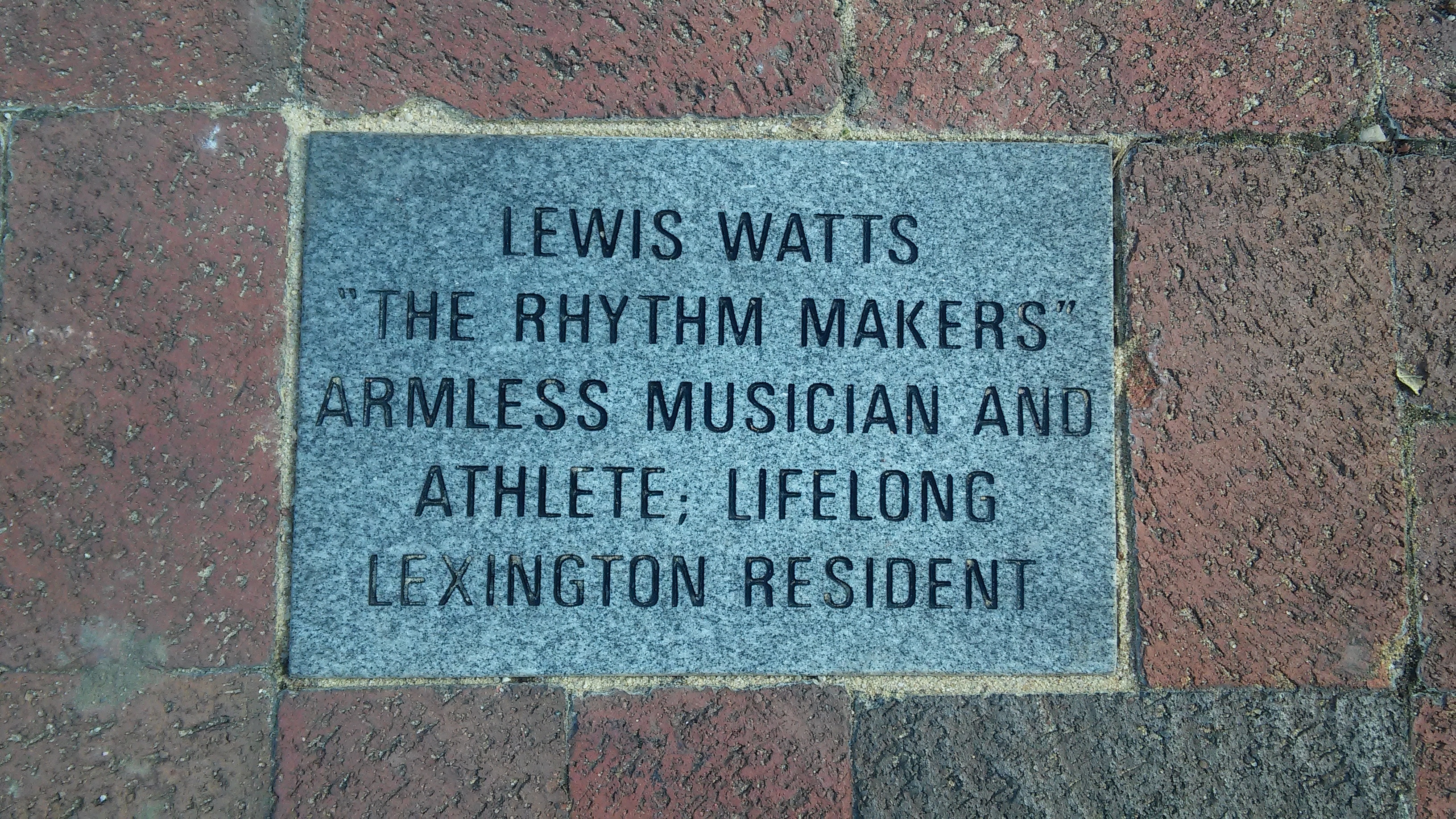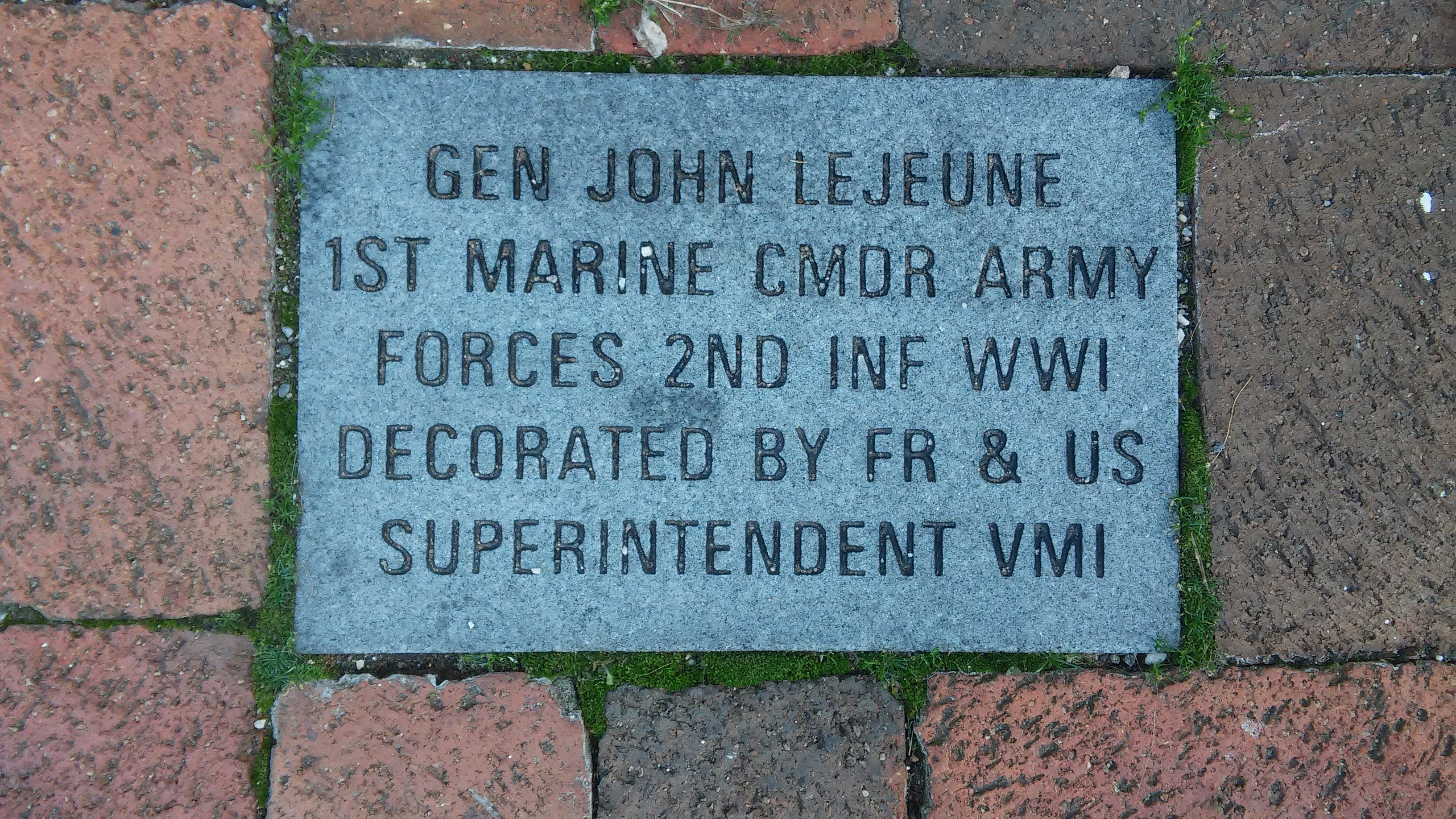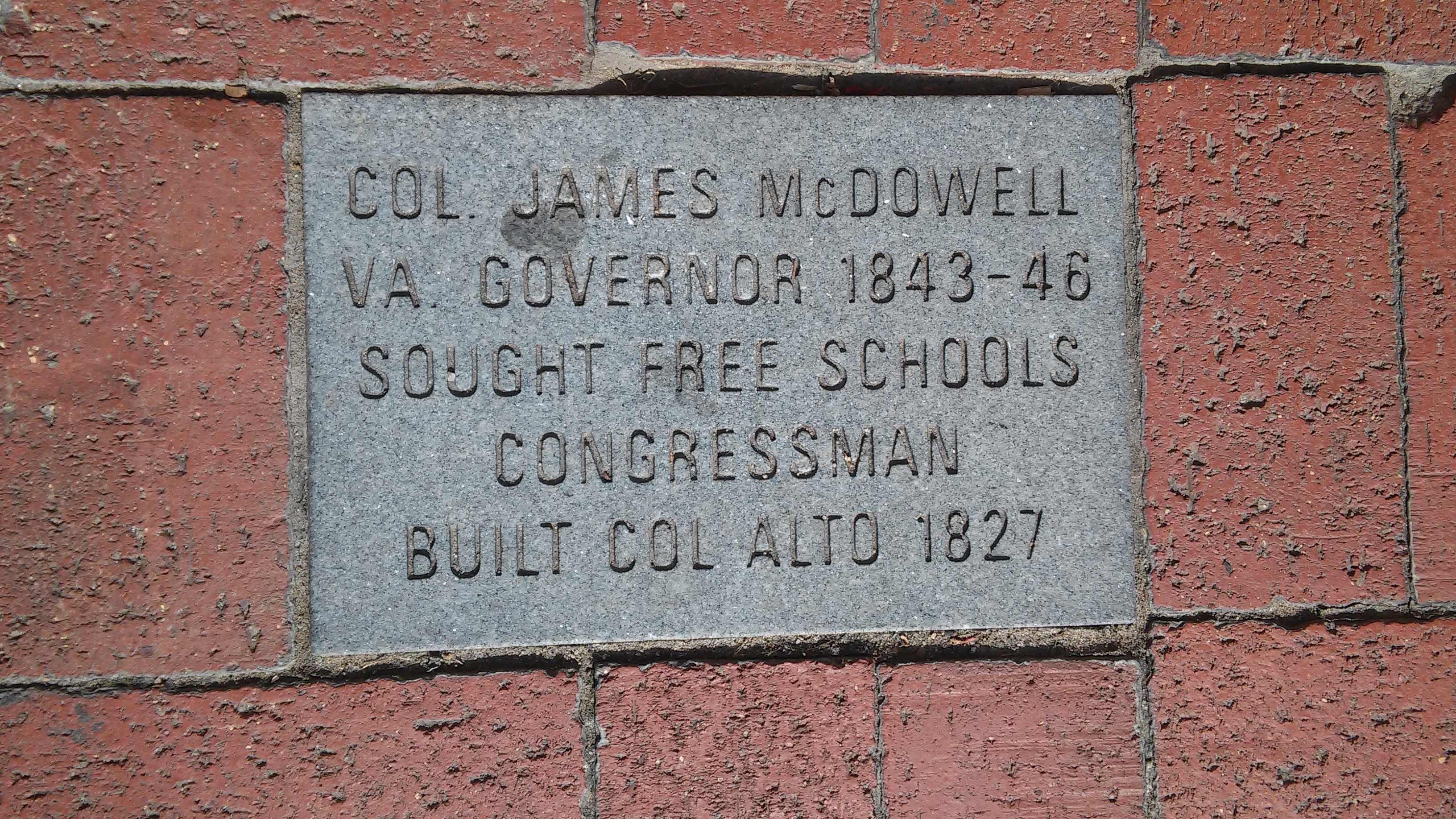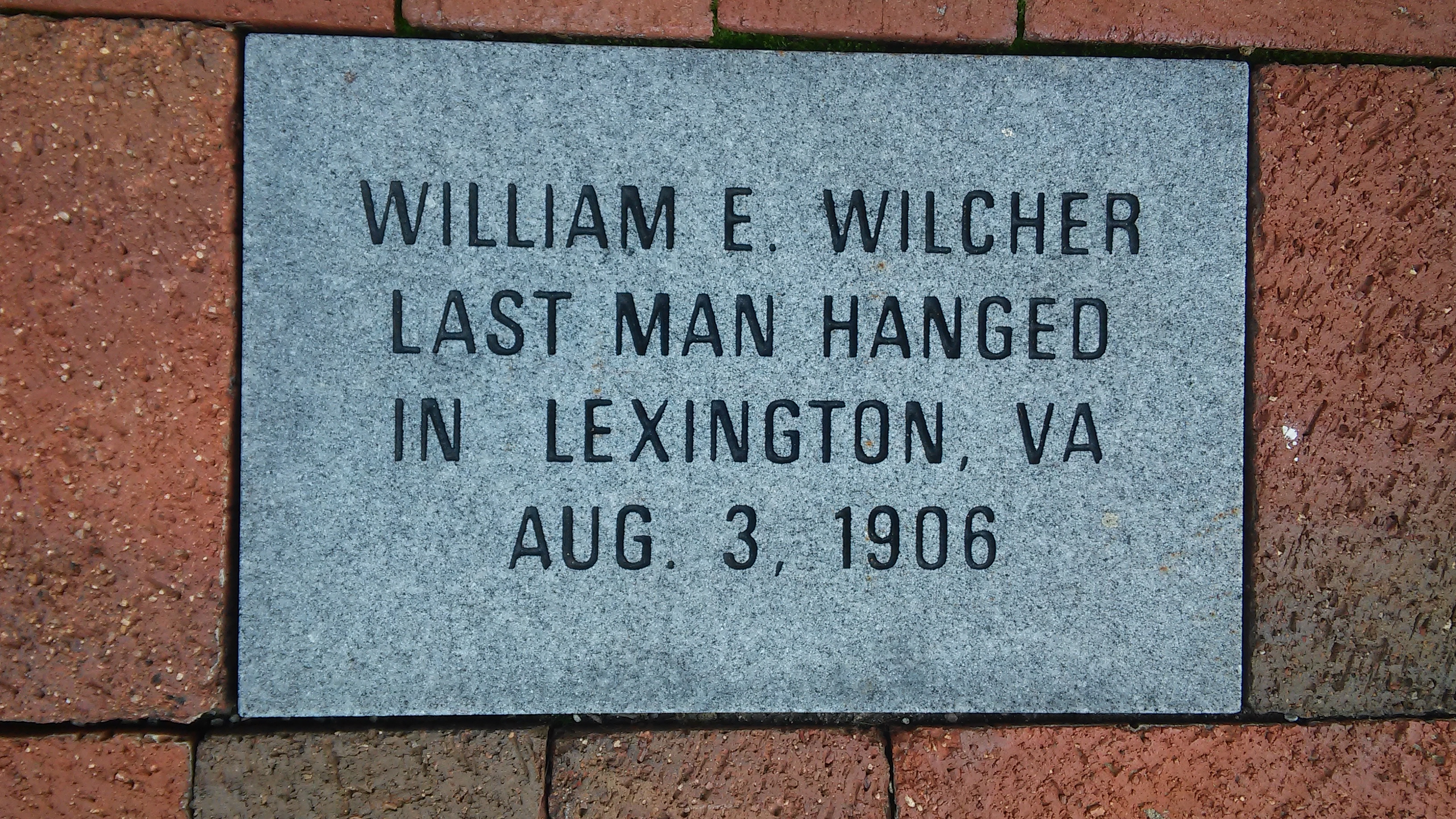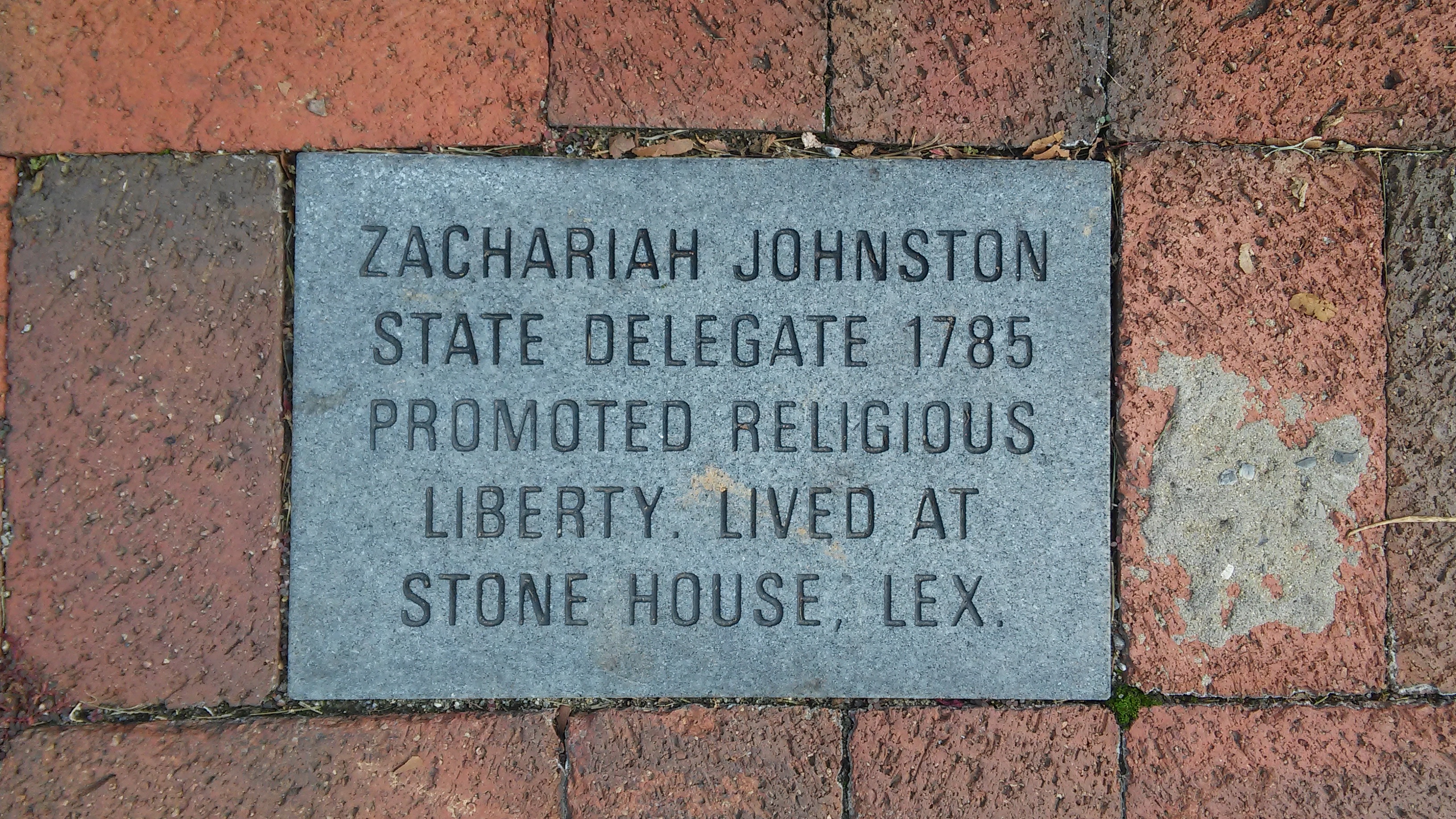Story Stones A-Z
“The whole plan of grace appeared as day.” He was 18, when it happened at Bushy Hills: the spiritual conversion that the young man had been waiting for, after a series of polar swings between inspirited ‘awakening’ and backsliding despair (see bottom*, for his extended account of this pivotal moment in his personal and professional growth).
The future Rev. Archibald Alexander was born on South River, near Irish Creek, grandson of first High Sheriff of Rockbridge, and son to one of the County’s earliest and largest landowners. At age 10 he began his studies at William Graham’s Liberty Hall Academy in Timber Ridge (the academy would eventually move to Lexington, as first foundation for what would become Washington and Lee University).
After beginning his educational career as a tutor to the children of Gen. Thomas Posey (Revolutionary War officer, and future Governor of Kentucky and Indiana), Alexander focused his attentions on the ministry. Returning to Rockbridge for further instruction by his mentor, Rev. Graham, Alexander was ordained in 1794, preaching as an itinerant Presbyterian serving several Virginia counties.
His talents as an educator, preacher and writer would soon be recognized by many, appointed to be the 4th President of Hampden Sydney (1797-1806), and most notably invited to be the First Professor and First Principal of the newly established Princeton Theological Seminary (now Princeton University) where he served for from 1812-1851.
Alexander published prolifically across a wide range of genres: from instructional tracts for children and theological guides for his fellow ministers; to broad histories of the “Israelite nation” and African colonization; to topical events of dramatic interest, including the tragic 1811 ‘Christmas Fire’ at the Richmond Theater.
In 1843, he delivered an alumni address at Washington College, and his writings include a number of warm nods to his native haunts, writing about the charms of House Mountain and Jump Mountain and calling Natural Bridge, “this extraordinary lusus naturae … no pen or pencil can convey any adequate idea of the object… The first view which I obtained of the beautiful and elevated blue limestone arch, springing up to the clouds, produced an emotion entirely new; the feeling was as though something within sprung up to a great height by a kind of sudden impulse.”
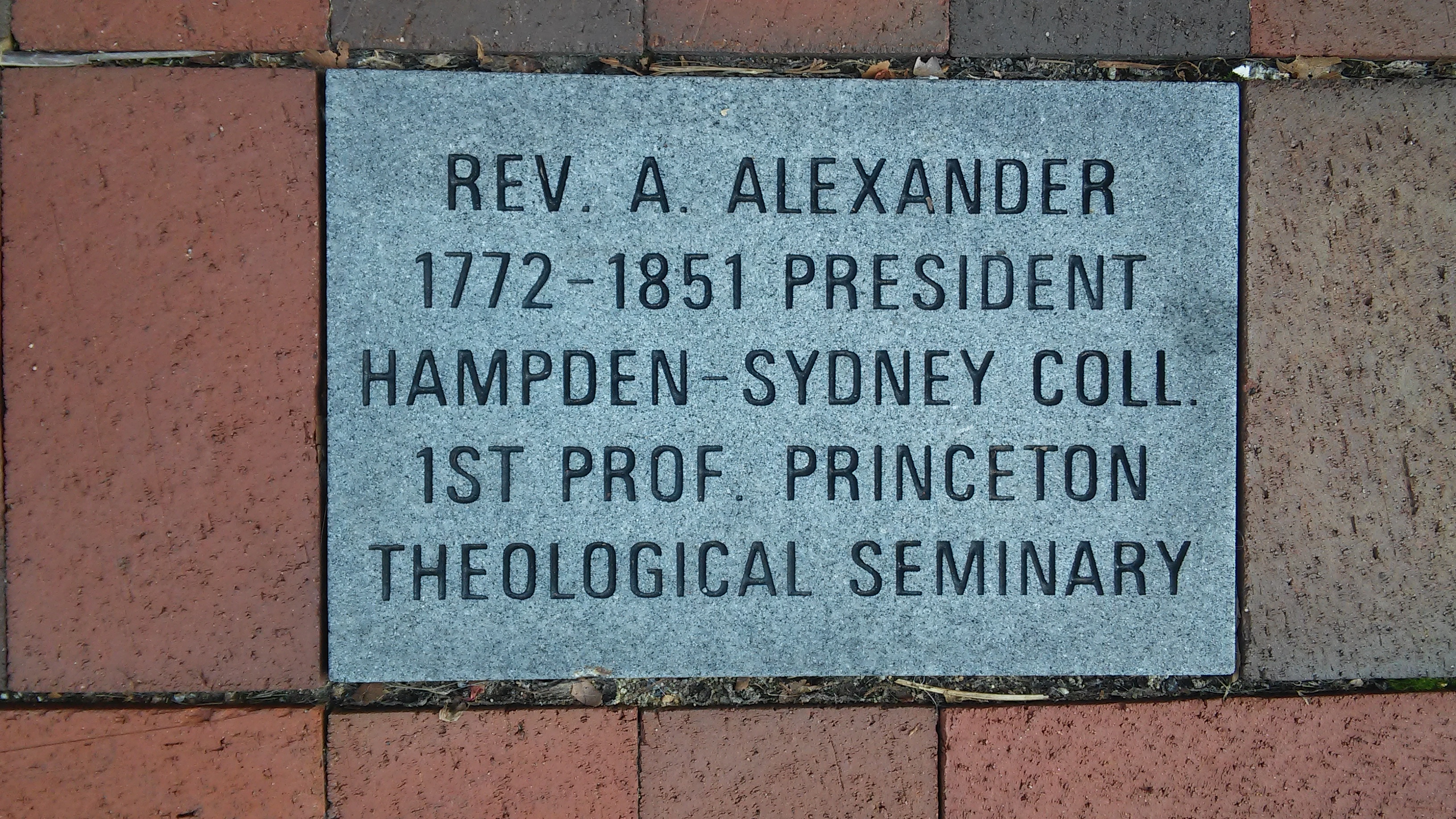

Sen. Alben Barkley was born in Wheel, Kentucky, became a U.S. congressman, Senator and the 35th Vice president on the 1948 ticket with President Harry S. Truman. He considered a presidential race in 1952, then won a Senate seat in 1954. Addressing the Washington and Lee University Mock Convention on April 30, 1956, he quoted Psalm 84:10: “I’m glad to sit on the back row, for I would rather be a servant in the House of the Lord than to sit in the seats of the mighty.” He then collapsed to the floor and died of a heart attack. He is buried near Paducah, Kentucky.
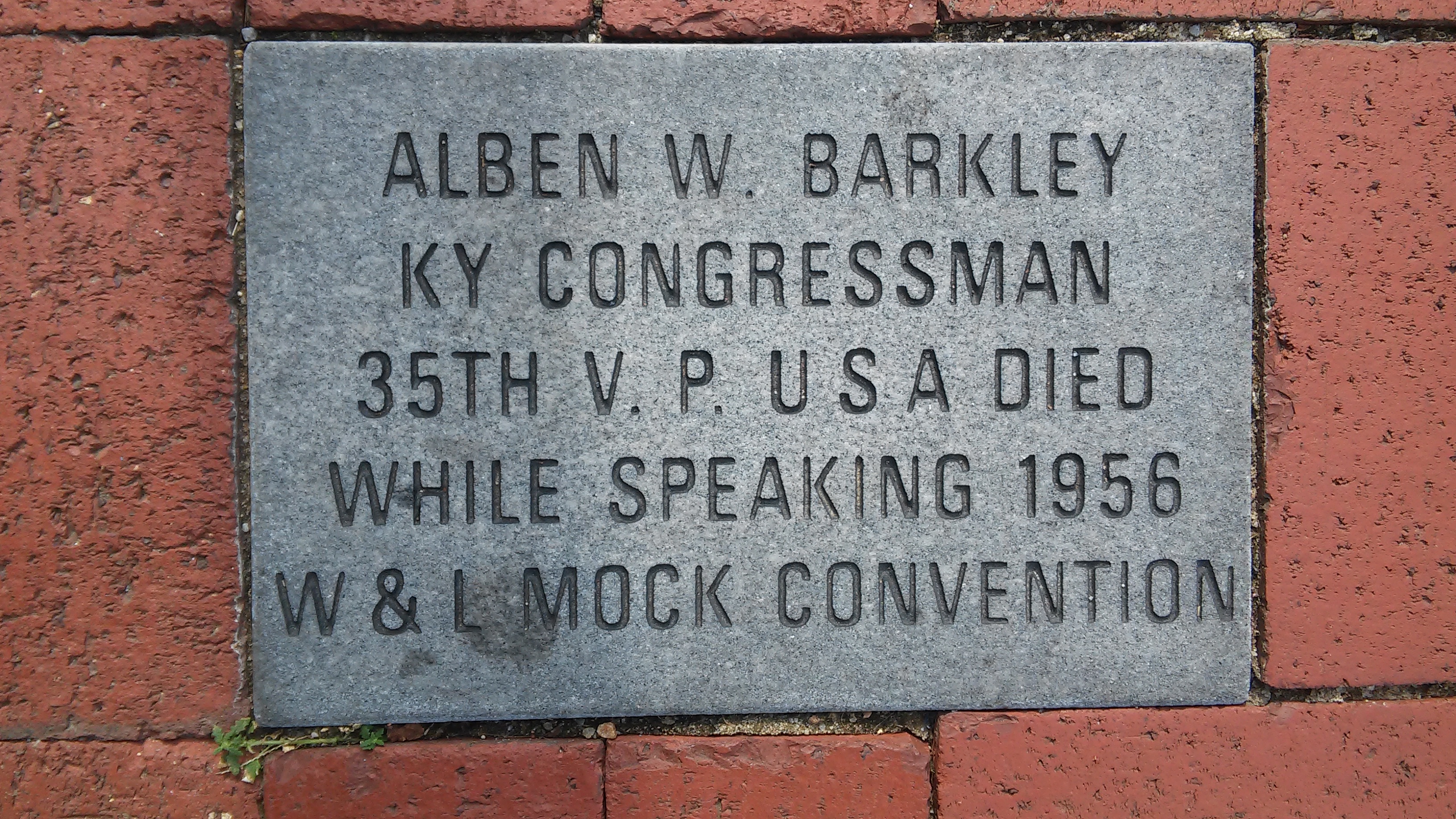

Born in New Jersey in 1675, Benjamin Borden would become a very canny networker and land speculator in Virginia, one of the key figures in opening up settlement west of the Blue Ridge Mountains. In 1739, he received a 92,000 acre royal patent from Gov. Gooch, on the conditions that he settle one family for each 1,000 acres. The "Borden Grant" largely covered the northern half of what would become Rockbridge County, formed in 1778 with the northern stretch of Botetourt County. Soon after receiving the patent, Borden was fortunate to meet John McDowell, whose surveying skills were instrumental for the parceling of saleable plots. The large amounts of land McDowell received in payment would establish his family as leading figures in Rockbridge landowning and politics for generations to come.
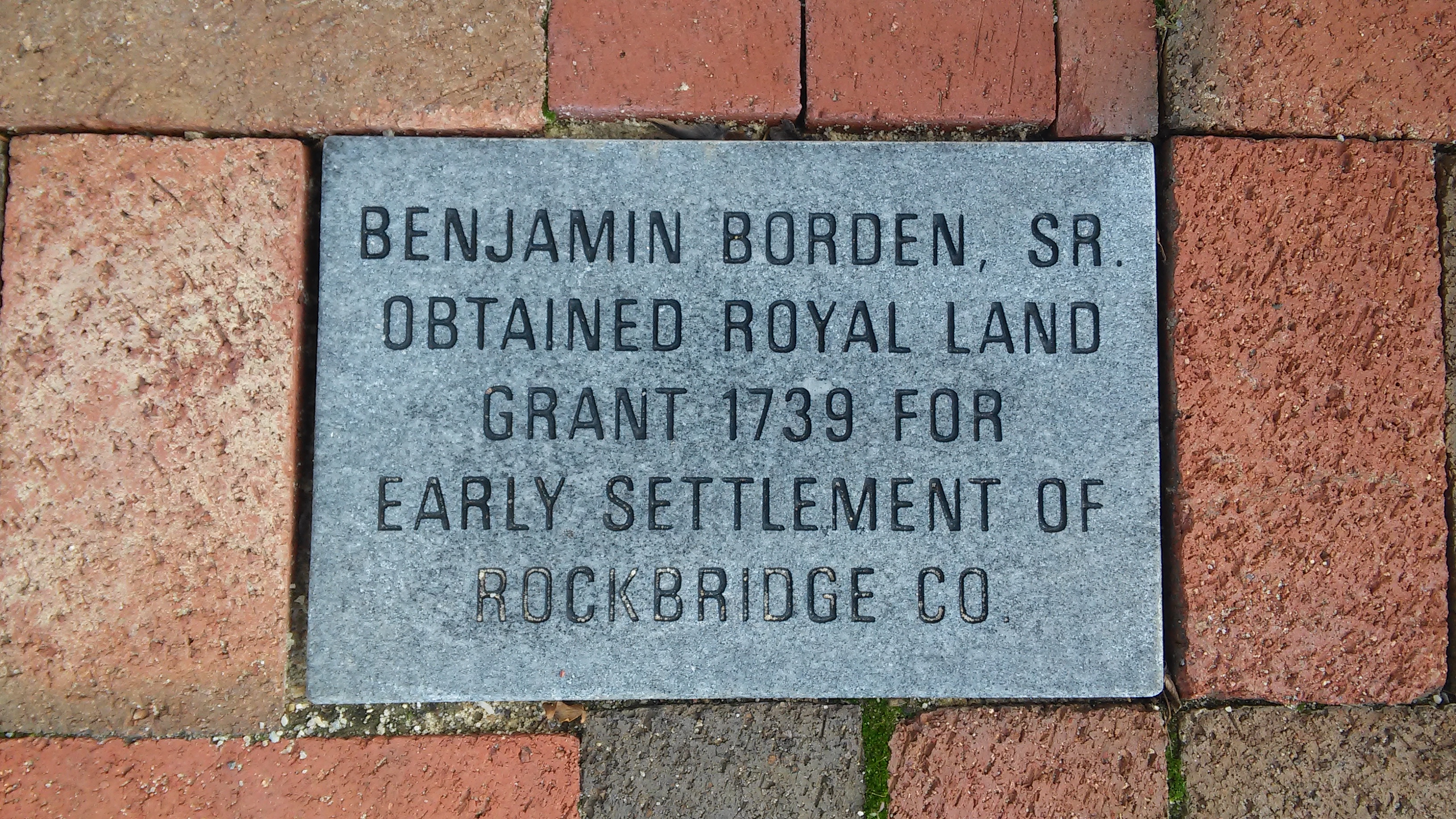

On July 14th, 1786, a Shawnee raiding party attacked the Moore farm in Tazewell County’s Abb’s Valley. Most members of the Moore family were killed, either during the raid or later as prisoners during a forced trek to Ohio, the Shawnee’s homeland. There Mary Moore was sold into slavery for eight gallons of rum to a Mr. Stogwell, who took her to Canada and treated her more harshly than the Shawnee, according to her son James in The Captives of Abb’s Valley: The Massacre & Captivity of Settlers in Virginia by Indians, 1786.
Ransomed three years later, Mary married Rev. Samuel Brown of Brownsburg’s New Providence Church. They had eleven children and their descendant family branches include many luminaries of Rockbridge County.
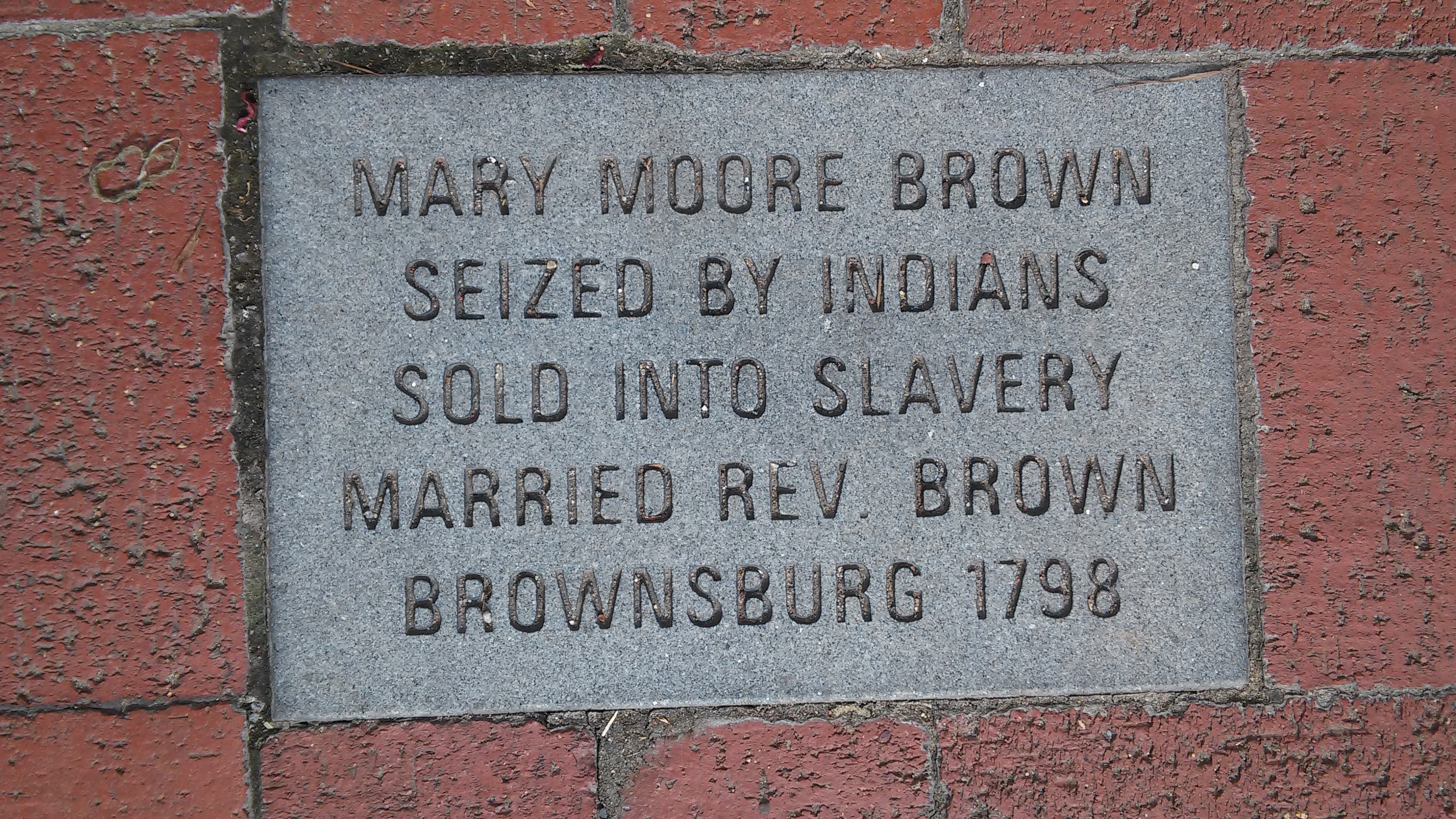

Chavis, probably the most learned African-American of his day, is aptly described in the title of his biography, John Chavis: African American Patriot, Preacher, Teacher, and Mentor 1763 – 1838.
Little is known about Chavis prior to his enlistment in the Revolutionary War in 1778. It is believed that he was an indentured servant. He studied to become a minister under John Witherspoon at Princeton Seminary, transferring to Liberty Hall Academy (later Washington and Lee University) after Witherspoon’s death. In 1800 he was licensed by the Presbytery of Lexington. In 1808 Chavis opened a highly regarded school in Raleigh, N.C., where he taught white children during the day and black children at night. His student and friend, Willie P. Mangum, became a U. S. Senator. After Nat Turner’s rebellion of 1831, Chavis was forced to give up teaching and preaching.
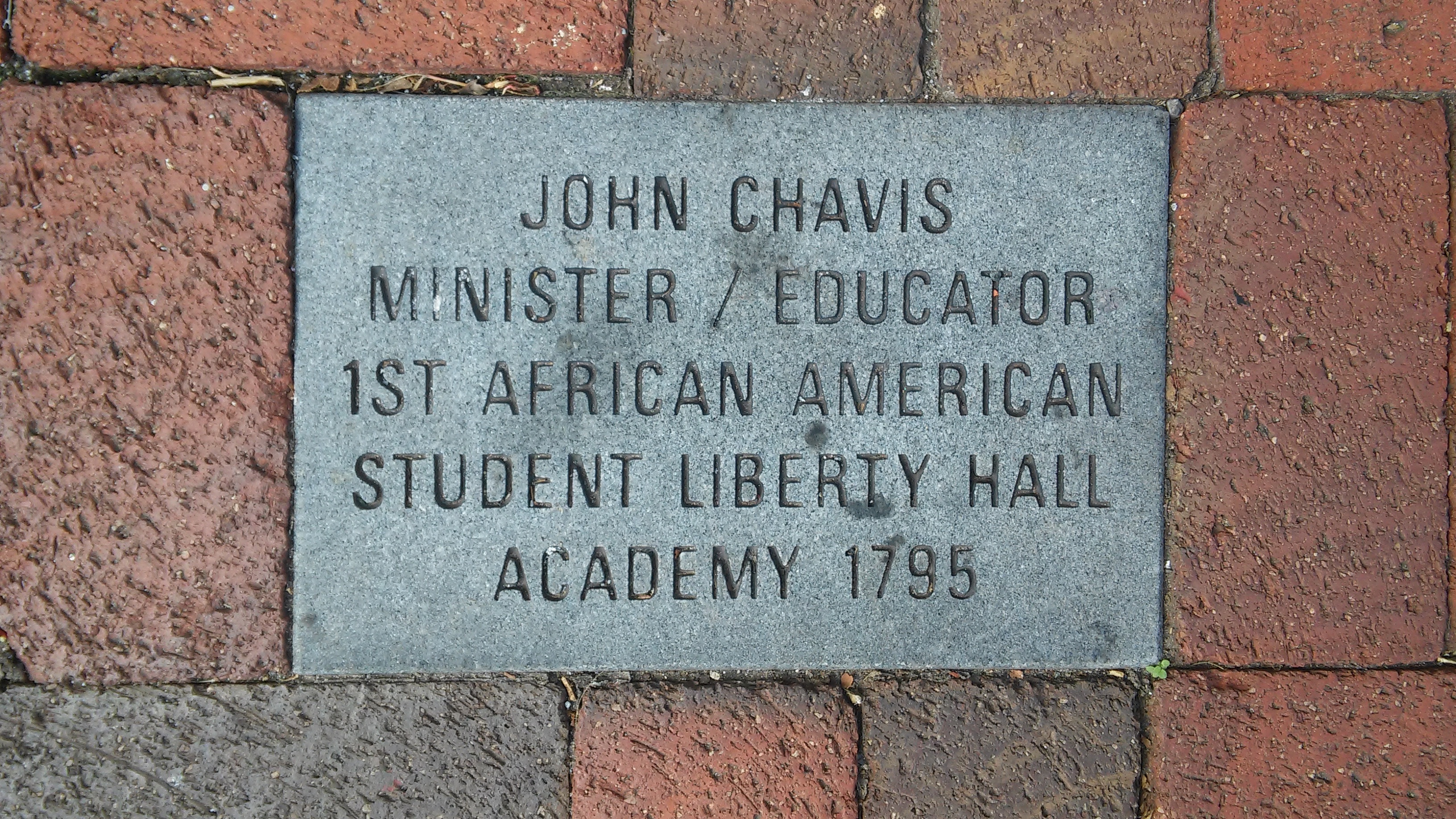

This more extended entry acknowledges that the Righteous and Rascals project grew out of a 2012 initiative to link the post-Expedition “Eastern Legacy Trail” to the National Park Service’s Lewis and Clark National Historic Trail.
Accordingly, pavers for Lewis and Clark were the very first to be installed, outside the Rockbridge Building on Main Street Lexington, where Clark stayed at a local tavern in 1809 (see bottom). Those inaugural “footprints” accompanied the nationally recognized ceremonies in October 2013 when a commemorative disc from the N.O.A.A. was placed across the street in the Courthouse Square to acknowledge these historic legacies.
**************************
In the 1790s, Clark had served as Meriwether Lewis’ superior officer in the US Army in the frontier lands of Ohio and Indiana. When Lewis was appointed as head of the Corps of Discovery in 1803, Clark was refused promotion to an equal rank to Captain, at Lewis’ urging and Jefferson’s recommendation to the Senate. Lewis and the Corps nevertheless recognized Clark in exercising equal authority throughout the expedition, with Lewis reportedly subsidizing the rank difference in their pay. Their partnership is one of the most notable in American History, their names still generally summoned as a single word: “lewisandclark.”
Clark was recruited in part for his extraordinary talents as a mapmaker (he was also a painter, later in life). Even under the most daunting conditions, his detailed reckonings are recognized as some of the most accurate of his era, and foundational models in the history of US exploration, and cartography more generally. As one of five people on the expedition to keep a journal, Clark’s other vital observations filled in stretches during the long absences in Lewis’ writings. His maps
York, a slave bequeathed to Clark in his father’s will, was also a key member of the Expedition: an expert boatman. Upon their arrival on the Pacific Coast, acknowledged as the first black man to be given a vote in a key decision in this Army expedition (if also the last to do so, until after the Civil War). It would be 10 years after the Expedition until Clark granted York his freedom, when he worked in the freighting and boating business until his death in 1832.
After returning for St. Louis, Clark returned to his native Virginia to marry Julia Hancock (for whom he had named “Judith’s River” in Montana). She was the daughter of a prominent Virginian judge, Col. George Hancock, who lived at Historic Santillane in Fincastle, VA (in Botetourt County, south of Rockbridge).
It was in Fincastle that Clark received news of Lewis’ suicide on the Natchez trace in Grinder’s stand in Tennessee (after having been removed from his boat on the Mississippi after a previous attempt). Clark then traveled North up the Valley Road, heading to Monticello to summit with Jefferson. The two men who knew Lewis best, among other things, had to make new plans for the expedition journals that Lewis had so far failed to publish. Passing through Lexington on Dec. 4, 1809, Clark stayed at Shields’/ Eagle Tavern however he may have chosen to refresh himself (or his horse).
In later life, Clark was appointed by President Madison as Governor of the Missouri Territory after its formation in 1813. In 1822, President Monroe appointed him as Superintendent of Indian affairs. Clark and Julia had five children, and after her death, and his marriage to her first cousin Harriet Radford, they had three more. Tzi-Kal-Tza/Halahtookit Clark, who called himself Clark and was photographed in 1866, has been noted to be the son of Clark and the sister of Nez Perce Chief Red Grizzly Bear. Clark died in St. Louis in 1838, 68 years old. He is buried there, and commemorated in scores of statues and interpretive sites across the country along with Lewis, Sakagawea, York, and the expedition’s celebrated Newfoundland dog, Seaman.
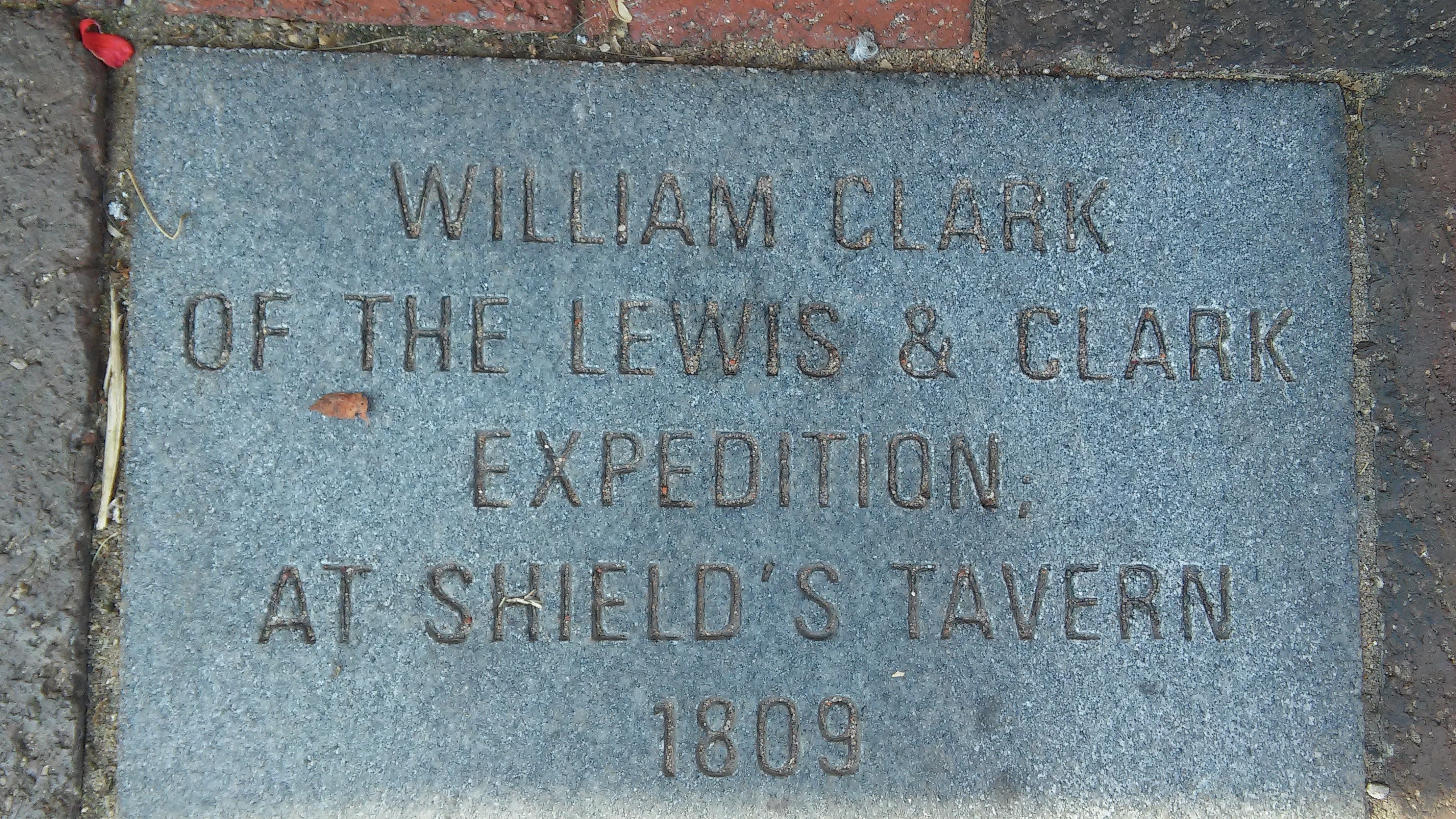

When Virginia (Ginny) Patterson Hensley was 5 years old, her family moved to a small house just above the Woods Creek trail. Her father, Sam, worked as the head boilermaker for Washington and Lee University from 1937 – 1942. In his book, “Patsy Cline: The Making of an Icon,” Douglas Gomery writes, “For five years Ginny sat by her bedroom window and heard weekly dance concerts by the world-class jazz orchestras that came on campus to soundtrack fraternity parties.” Many of those parties took place at Doremus Gymnasium and would have been clearly audible from the Cline home. Ginny went on to become one of country music’s biggest and iconic stars: Patsy Cline. Walk the Woods Creek Trail, Patsy’s house would have been in the vicinity of where the Woods Creek Apartments now stand.
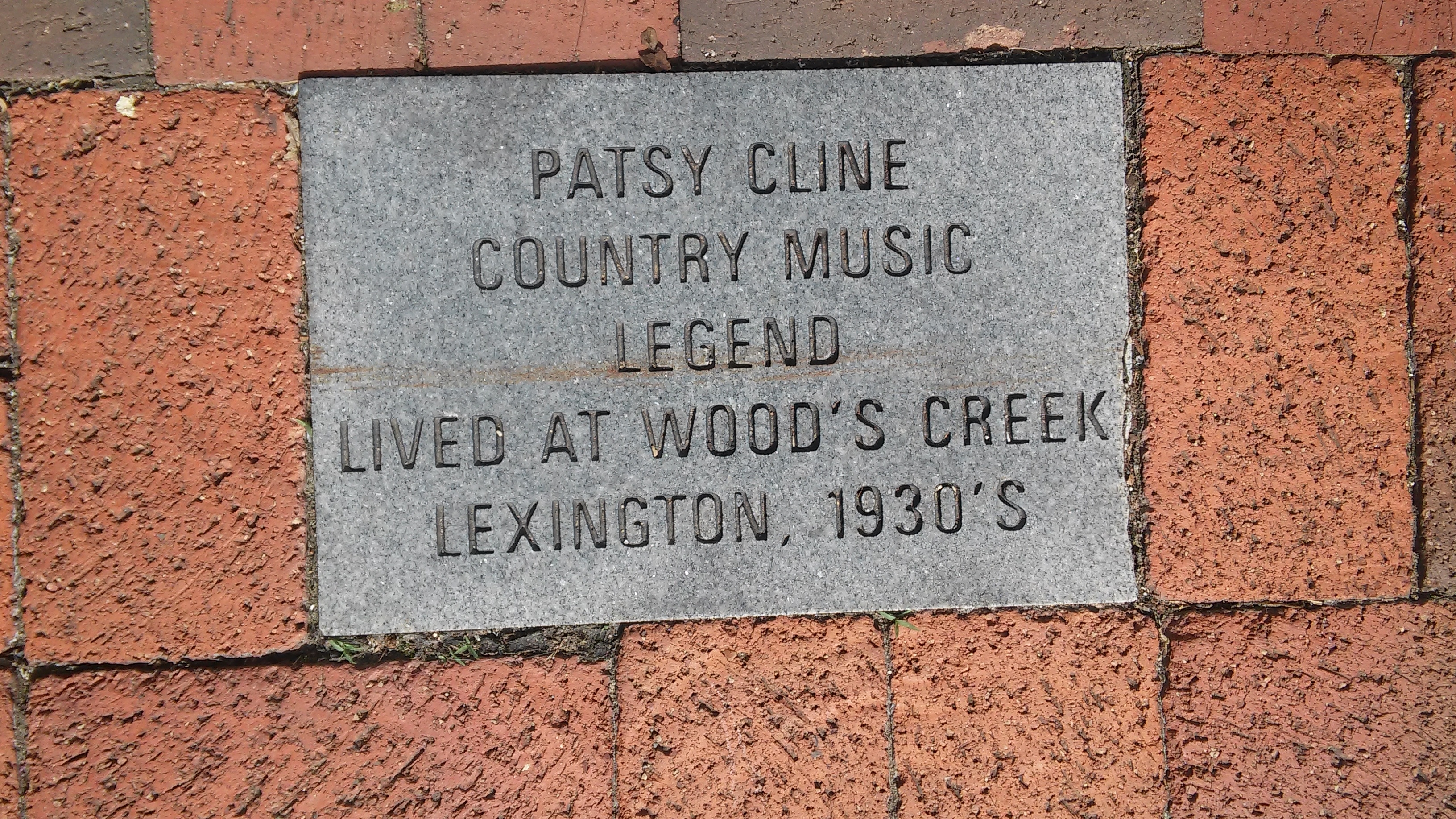

Cornstalk’s English name is the closest translation from the Shawnee.
The Shawnee considered the Shenandoah Valley their own vital hunting lands. Settlers, who began to enter the valley in the 1730s, viewed things differently. Despite treaty after treaty, many battles ensued, culminating in 1774 at the Battle of Point Pleasant on the Kanawha River (modern W.Va.). The battle was between the Virginia militia and the Shawnee and Mingo tribes led by Cornstalk, who did not want to surrender their lands south of the Ohio River. The Native Americans were narrowly defeated. Although relentless in his fight for his people, Cornstalk realized that continued warfare would end in their destruction and signed a peace treaty.
In 1777, Chief Cornstalk made a diplomatic visit to Fort Randolph at Point Pleasant. There he was treacherously killed. Governor Patrick Henry was particularly incensed by Cornstalk’s murder, as he had seen in this great chief the only hope for Shawnee neutrality.
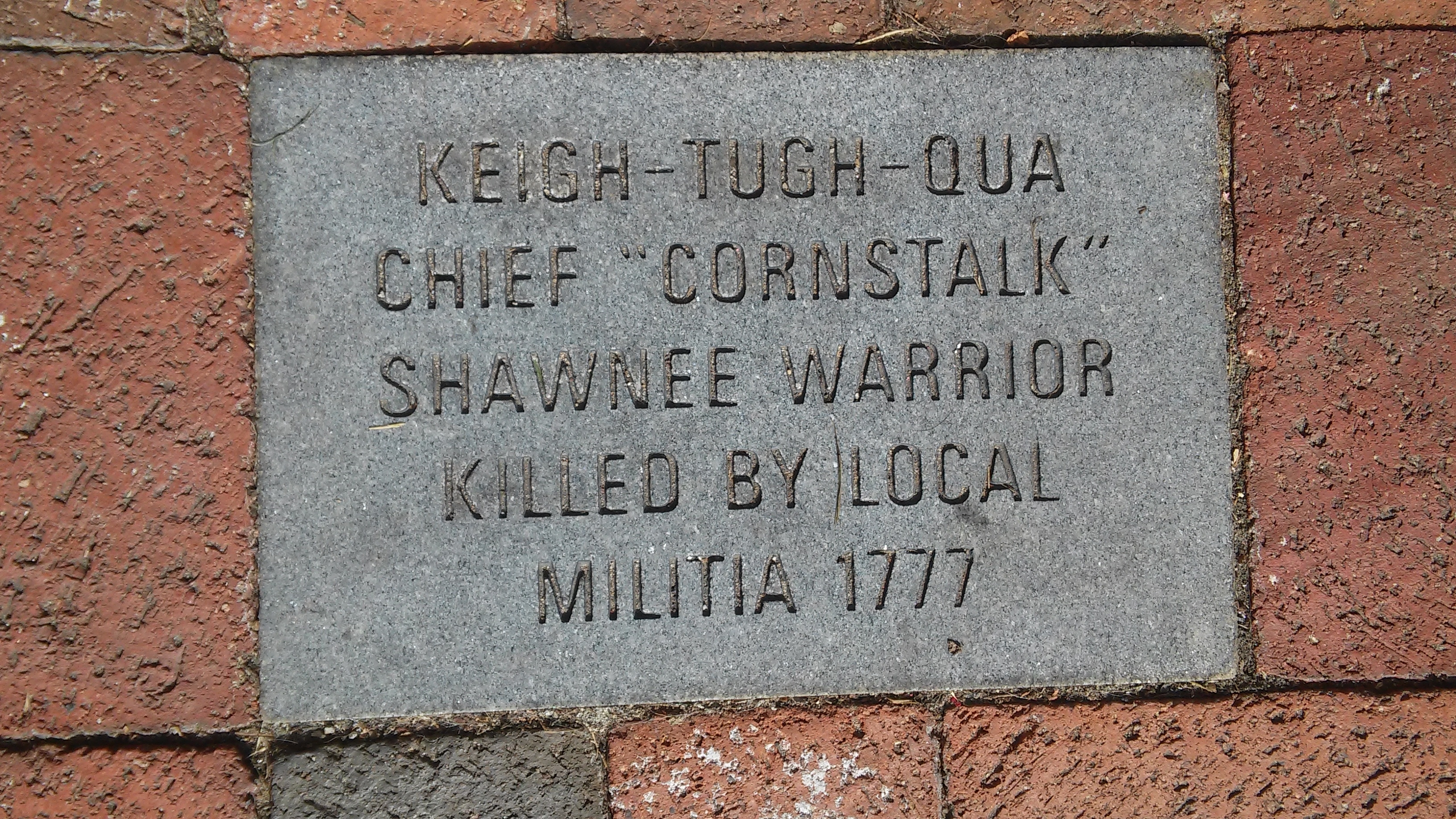

During his senior year at Washington College in 1804, Crump was arrested by Lexington police, earning him distinction of being Crump the United States’ first recorded streaker. He was suspended for the remainder of the 1804 session.
When not running naked through the streets of Lexington, Crump later made a career of running for office, serving in the Virginia House of Delegates and the 19th U.S. Congress from 1826-7. Though there for but a “flash,” he was later appointed by President Andrew Jackson to serve, more tamely than in his youthful days in Lexington, as chief clerk of the Pension Bureau, for 16 years running.
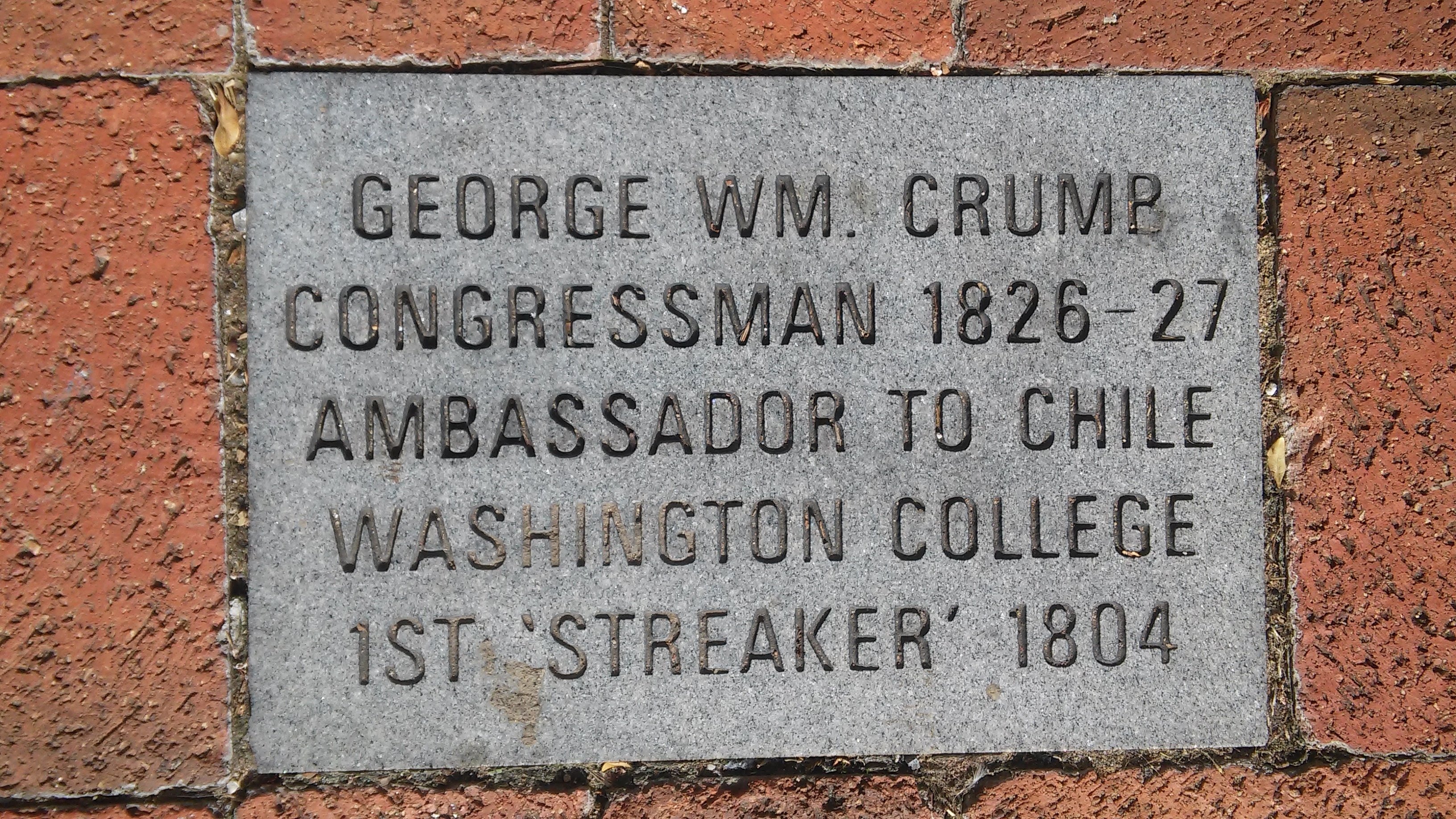

He took the bullet meant for young Ruby Sales. And for his service and sacrifice in the Civil Rights Movement, one of VMI’s four memorial arches is named for Daniels, who is also honored as one of the few modern-day martyrs to be inscribed in the Chapel of Martyrs in England’s Canterbury Cathedral.
Valedictorian of the VMI Class of 1961, Daniels accepted a postgraduate fellowship to study English at Harvard, before enrolling in the Episcopal Theological School in Cambridge. Daniels joined the 1965 march for voting rights in Selma, then staying in Alabama to work for the cause in the months to follow. After being released from jail for picketing whites-only stores, Daniels – preparing to buy a cold drink outside Varner’s Cash Store – jumped in front of a shotgun blast a deputy sheriff had aimed at Sales, an African-American teenager and fellow civil-rights worker.
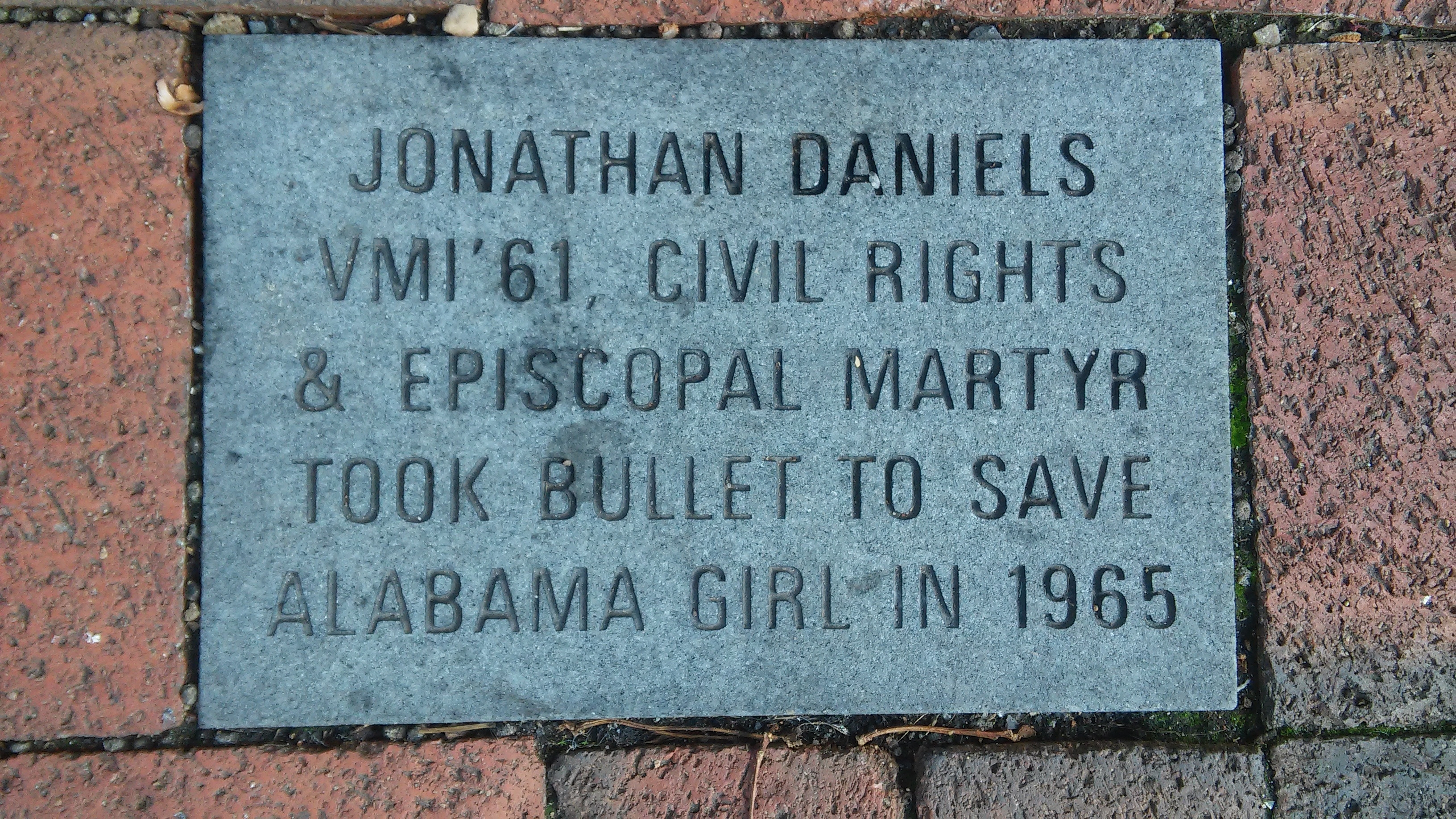

Pedro Francisco Daura y Garcia, a Catalan painter, spent a good portion of his early career splitting his time between Catalonia, where he studied painting under Jose Ruiz Blasco, Picasso’s father, and Paris. In 1929, Daura was a founder of “Cercle et Carre” (Circle and Square), a group formed in opposition to surrealism and promoting geometric construction and abstraction. Although most of his work is figural, his interest in color and mass is apparent.
In 1939, Daura moved to Rockbridge Baths with his American wife, Louise Blair, also an accomplished artist. From 1945-1953, Daura taught both at Lynchburg College (the Daura Gallery) and at Randolph-Macon Woman’s College. Daura is represented in museum collections worldwide and was arguably the greatest active artist in Virginia in the 20th century.
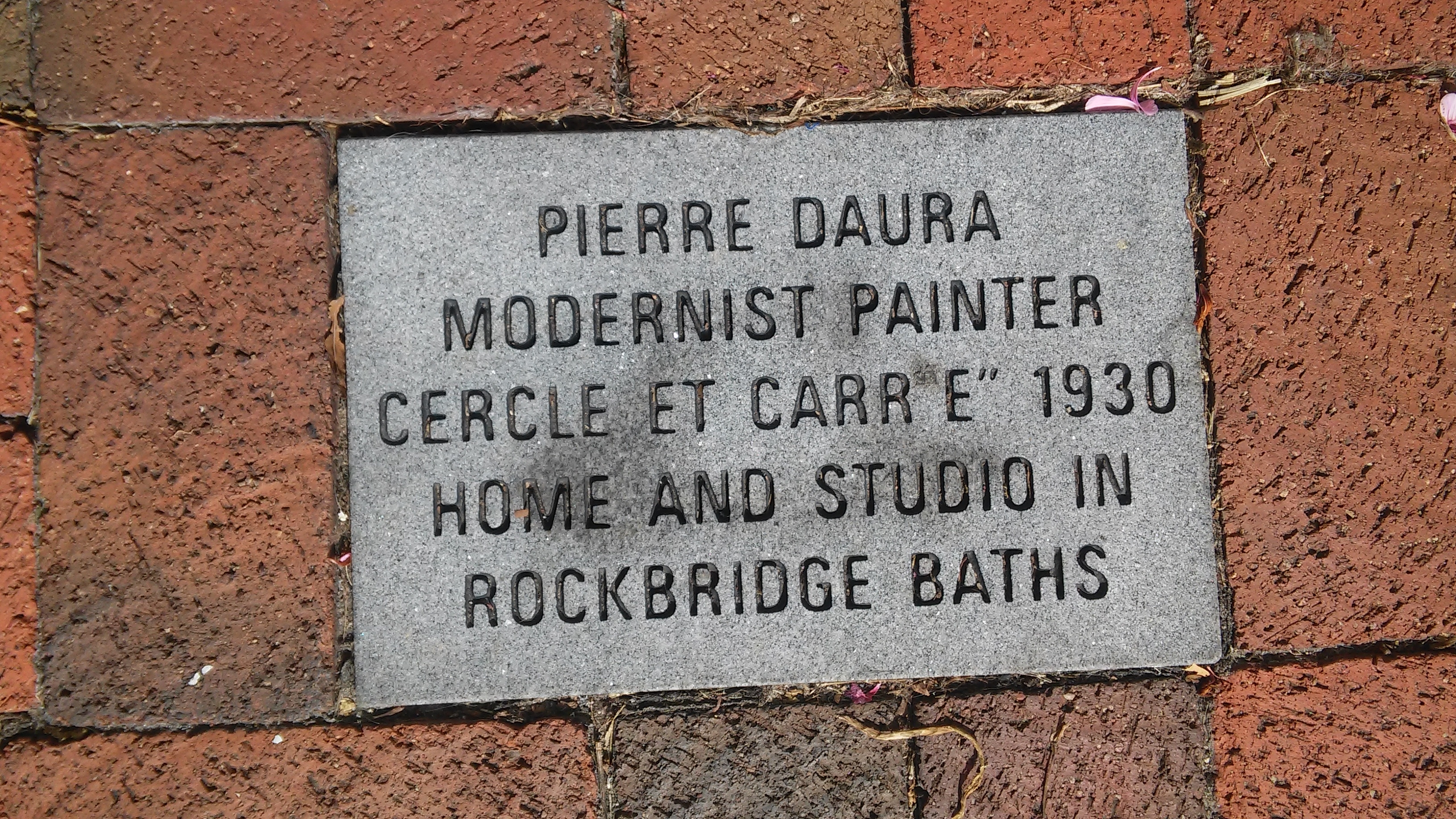

Rev. Lylburn Liggins Downing was born into the household of Gov. James McDowell in 1862, to enslaved parents who were educated by T.J. ‘Stonewall’ Jackson at Lexington Presbyterian’s colored “Sabbath school.” After the Civil War, Downing would attend the same school, and eventually studied at Lincoln University. Ordained as a minister, he founded the Fifth Avenue Presbyterian Church, Roanoke. There he installed a stained glass window of his own design, dedicated to Jackson and depicting his last words, “Let us cross over the river, and rest under the shade of the trees.” In tribute to his continued community ties, and reaching across denominations, Downing also gave one of the first financial contributions to the re-building of Lexington’s First Baptist Church in the 1880s.
Downing’s name has become a byword for Lexington’s strong educational legacies. In 1927 he preached the dedication sermon for his namesake school, established for the education of African-American children in Lexington and, eventually, Rockbridge County. That segregated school closed in 1965, but Lexington’s current middle school bears his name, and the original structure houses a community center in the Diamond Hill neighborhood.
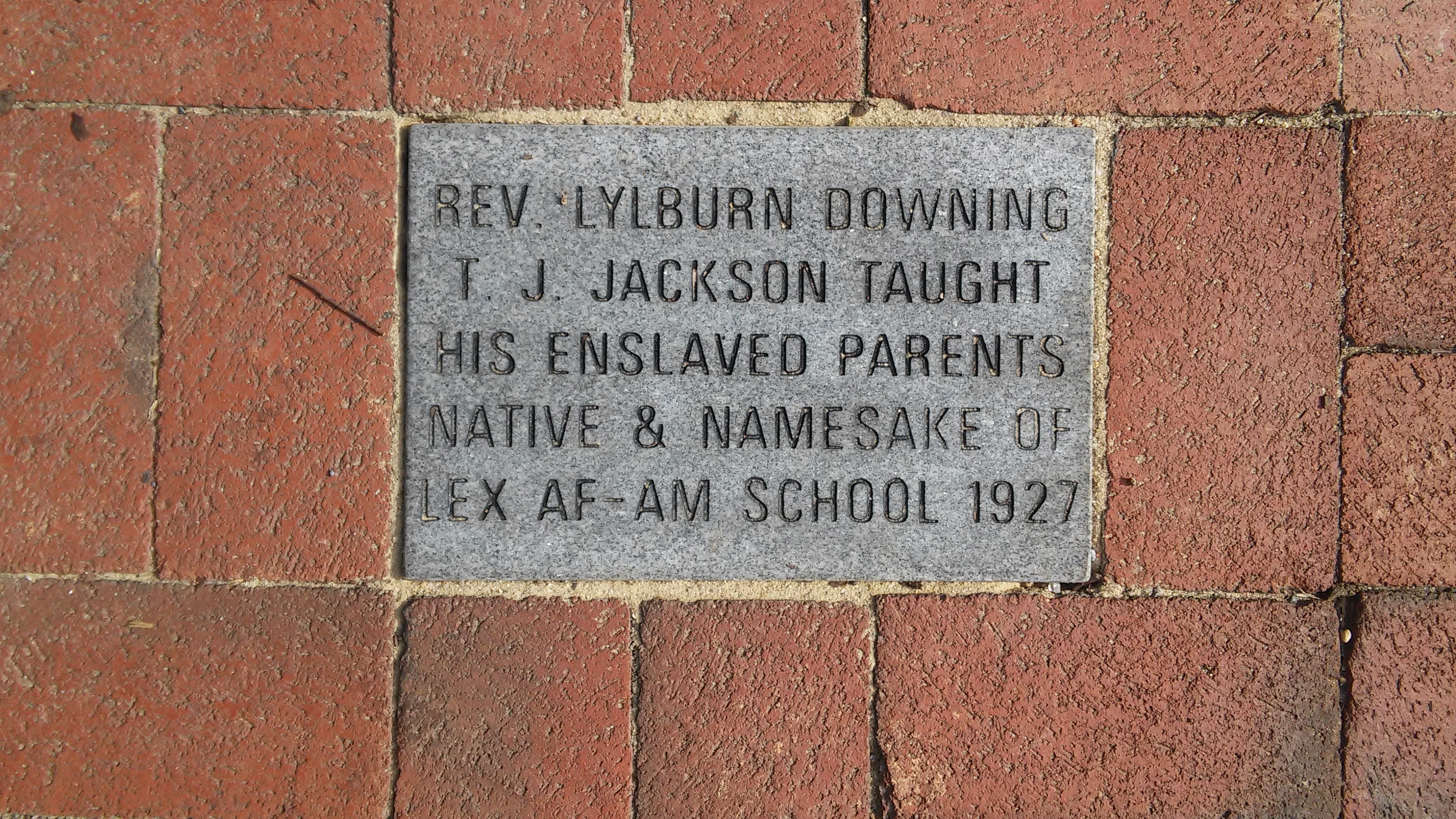

As a VMI cadet, Ezekiel fought and was wounded in the 1864 Battle of New Market. He graduated in 1866 as the first Jewish cadet with a diploma from VMI, and in that same year, was the first Jew to be elected into Lexington’s Masonic Lodge. An internationally trained sculptor, Ezekiel was the first foreigner to win the Prix de Rome. He was widely known for his larger-than-life statues, such as Virginia Mourning Her Dead, placed at the VMI post next to the resting place of six cadets killed in the Battle of New Market.
Ezekiel died in Rome in 1917 and was buried there, later reinterred at Arlington National Cemetery. His grave lies in the Confederate section where the graves form concentric circles around Ezekiel’s work Confederate Memorial. The graves are marked with pointed headstones; it is said that Confederates believed that the points would stop the Yankees from sitting on them.
SEE ‘ VIRGINIA MOURNING HER DEAD’ AT VMI.
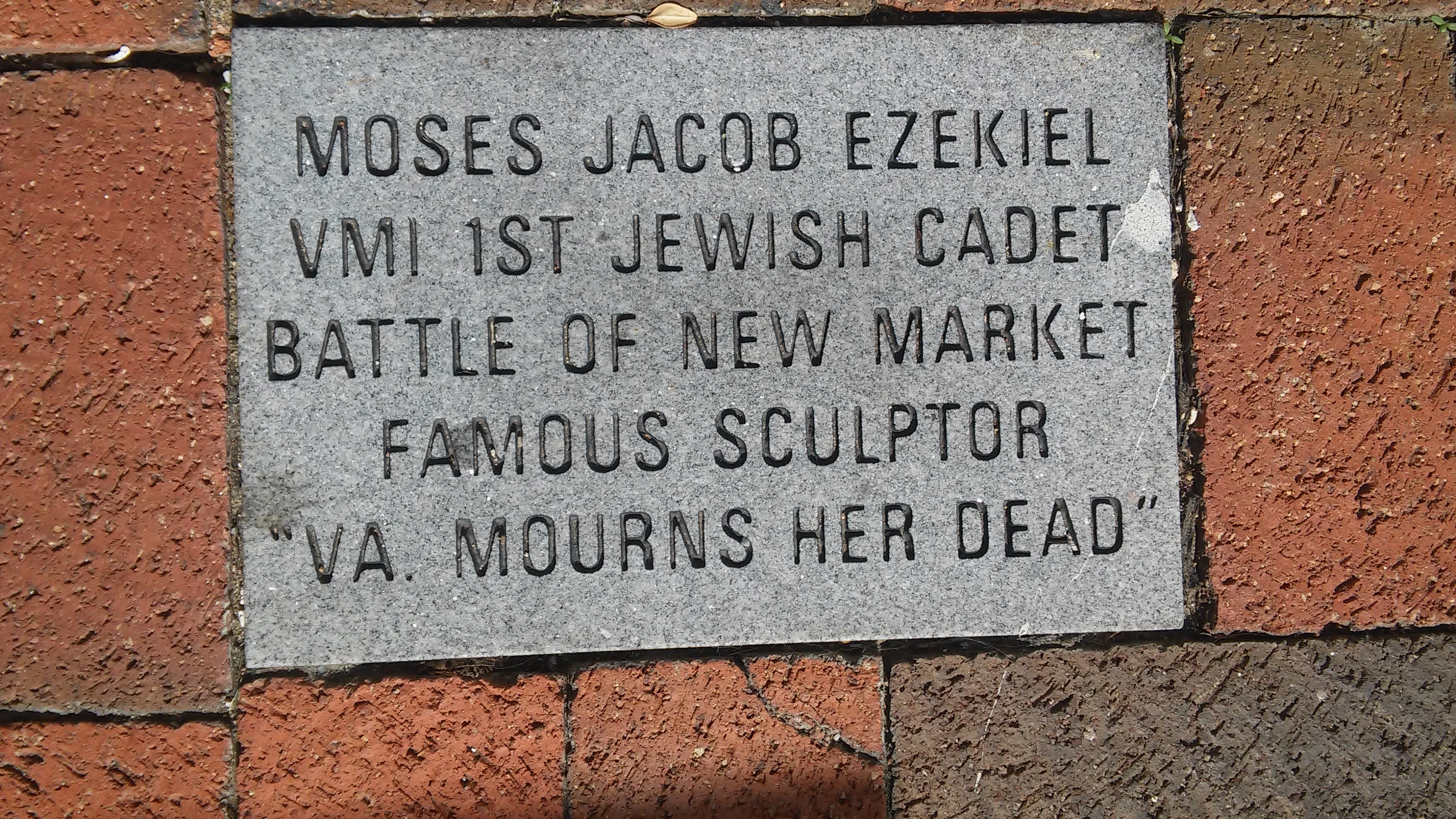

C. M. Figgat was, to all appearances, a model citizen of Lexington – a cashier at The Bank of Lexington and acting treasurer for groups that raised funds both for the Edward Valentine statue of Recumbent Lee, housed at Lee Chapel, and for the statue of Stonewall Jackson at the site of Jackson’s grave. Then Figgat embezzled more than $140,000 from the bank, forcing its closure and shaking the local economy. Figgat boarded the C&O headed west to Cincinnati on the evening of February 14, 1895. He was described variously as “about 60 years…bowlegged…repeats his yes thus ‘yes – yes.’ His appearance shows him to be addicted to drink.” VMI cadets and Washington and Lee students were exhorted by wanted posters to report Figgat sightings.
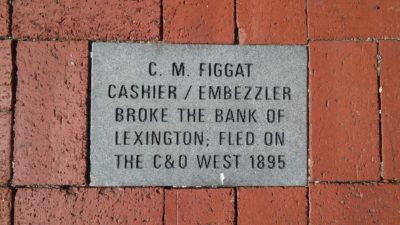

Pennsylvania native, Princeton graduate, and Presbyterian minister, Rev. William Graham was officially appointed the President of Liberty Hall in 1776, and the first minister of Lexington Presbyterian Church in 1789. During his leadership of Liberty Hall, the institution would grow from being held at his house, and re-locate to different locations in Rockbridge County, most notably at Timber Ridge, where he taught Archibald Alexander, among others.
After conflicting discussions between the school’s trustees, the Synod of Virginia, and Lexington residents eager to locate it in town, the school was reestablished in 1793 under the name of Liberty Hall Academy, providing a liberal education to prepare young men through a curriculum that would include not only traditional courses of grammar, classics, and theology, but mathematics and sciences; philosophy, politics, law; even English literature and French and Roman antiquities.
Although Liberty Hall’s stone building would burn in 1802, its ruins still stand to the West of the campus that would successively be re-named Washington College, and Washington and Lee University. Graham is buried outside of Lee Chapel, a notable distinction to honor his founding influence on the institution, and generations of students who would leave their mark in Rockbridge, Virginia, and the early Republic.
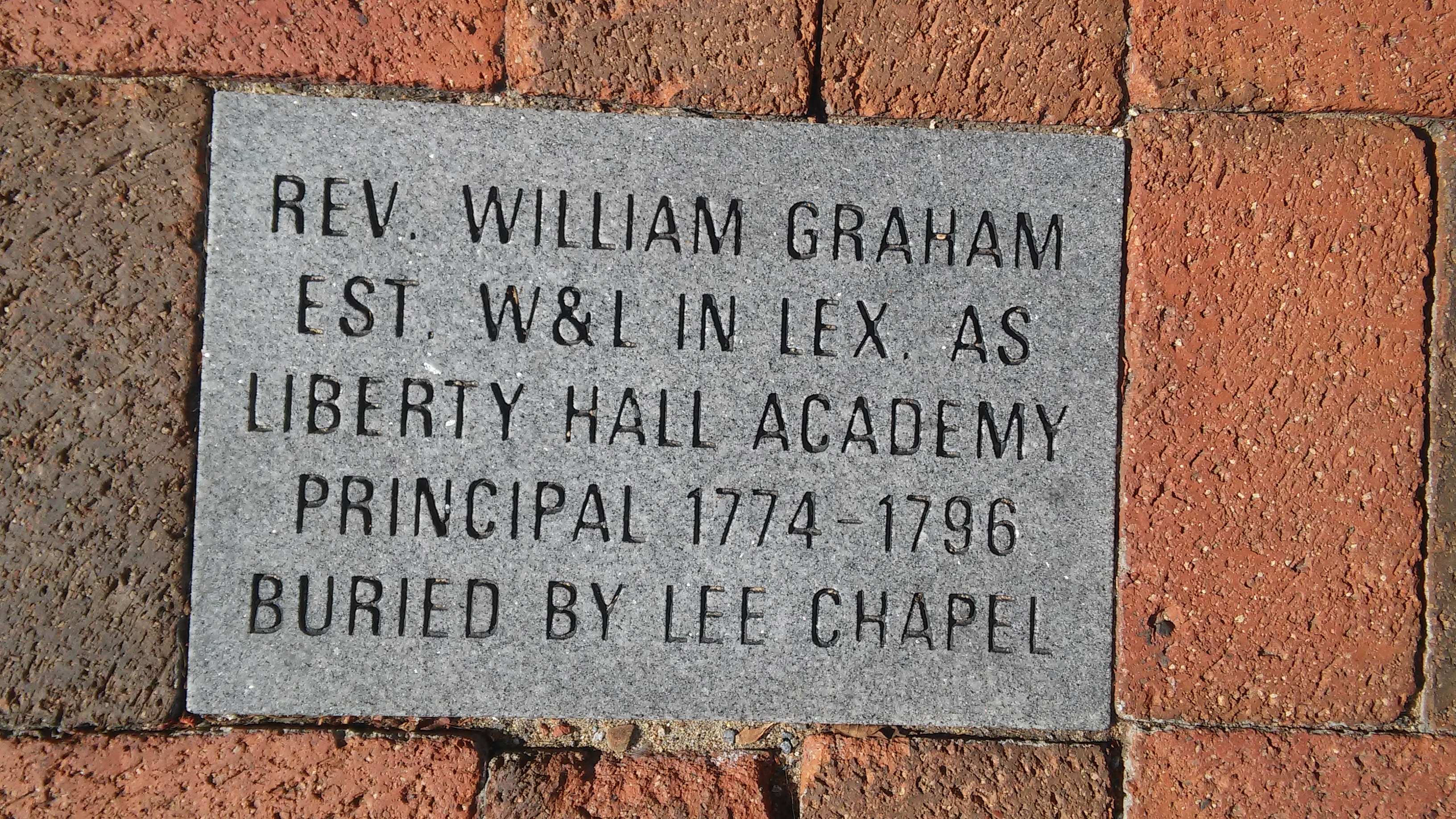

In June 1974, Mel Greenberg blew into town and duped everyone into believing he was a Hollywood movie producer. While promising many locals would have lead roles in his nonexistent film, Greenberg exchanged promises for goods and services. It was whispered about that some of the town’s ladies had been “exposed” during auditions. In any case, Greenberg’s scam was exposed, and he became a resident of the Rockbridge County jail. However, many of the townsfolk felt sympathy for him and rallied a “Free Mel Greenberg” campaign with bumper stickers, T-shirts and pens.
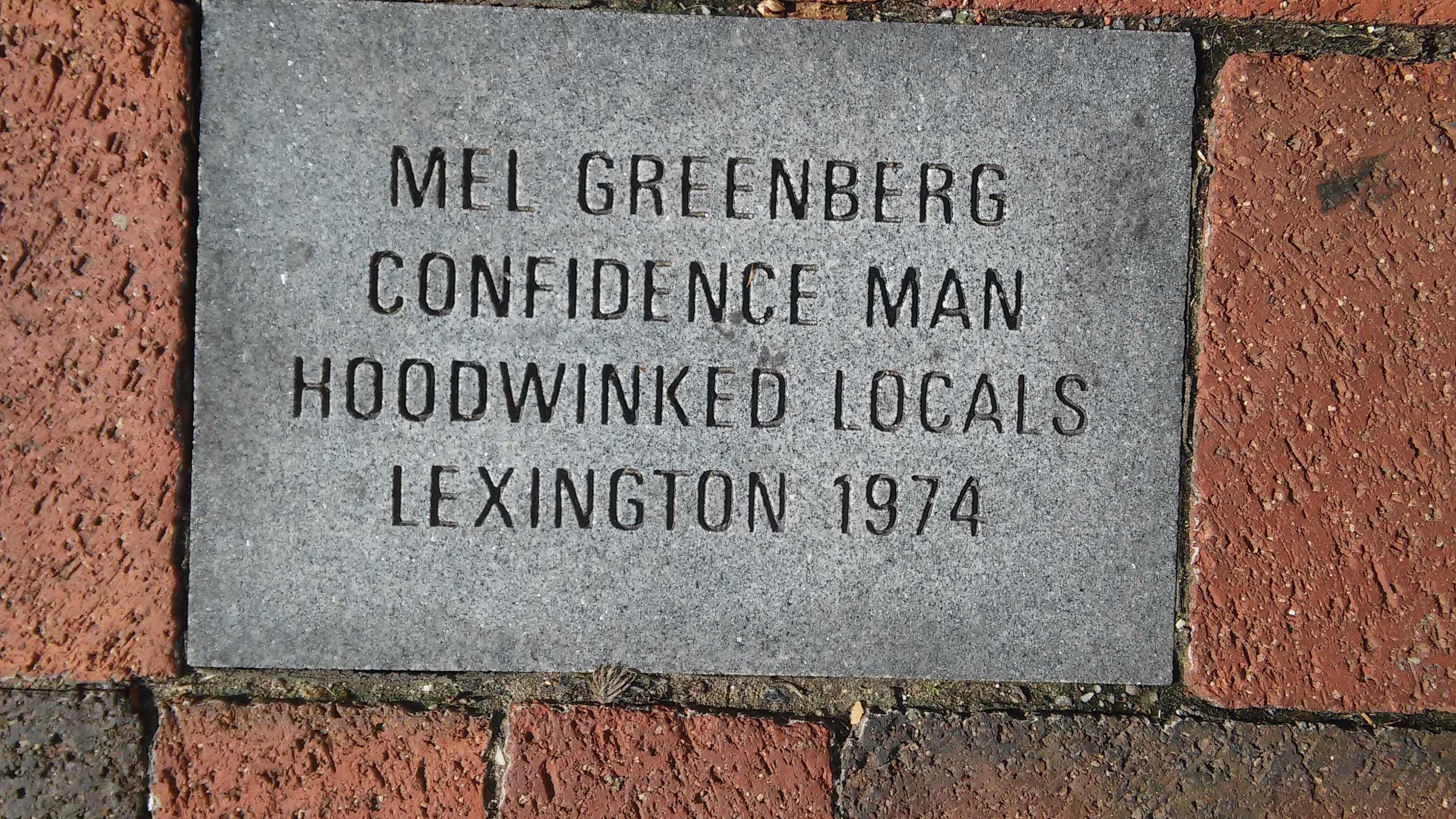

Mary Greenlee has often been called “The Mother of Rockbridge County.” She was the first white woman settler in Rockbridge County (originally part of the Borden Grant). Born in Northern Ireland, she emigrated to Pennsylvania with her husband James, eventually settling in Virginia in 1737. Mary was a feisty and eccentric lady. Some thought she was a witch; the Native Americans thought she was crazy and considered it bad luck to harm a crazy person. Using their superstition to her advantage, Mary was able to rescue a young girl, Alice Lewis, whom the Native Americans had abducted. Mary and James ran a tavern near Timber Ridge. When James died in 1763, Mary carried on for another 17 years before moving to Natural Bridge to be near her son and dying at age 102. Upon her death the following was written;
“Mary Greenlee died of late; straight she went to Heaven’s gate: But Abram met her with a club, and knocked her back to Beelzebub.”
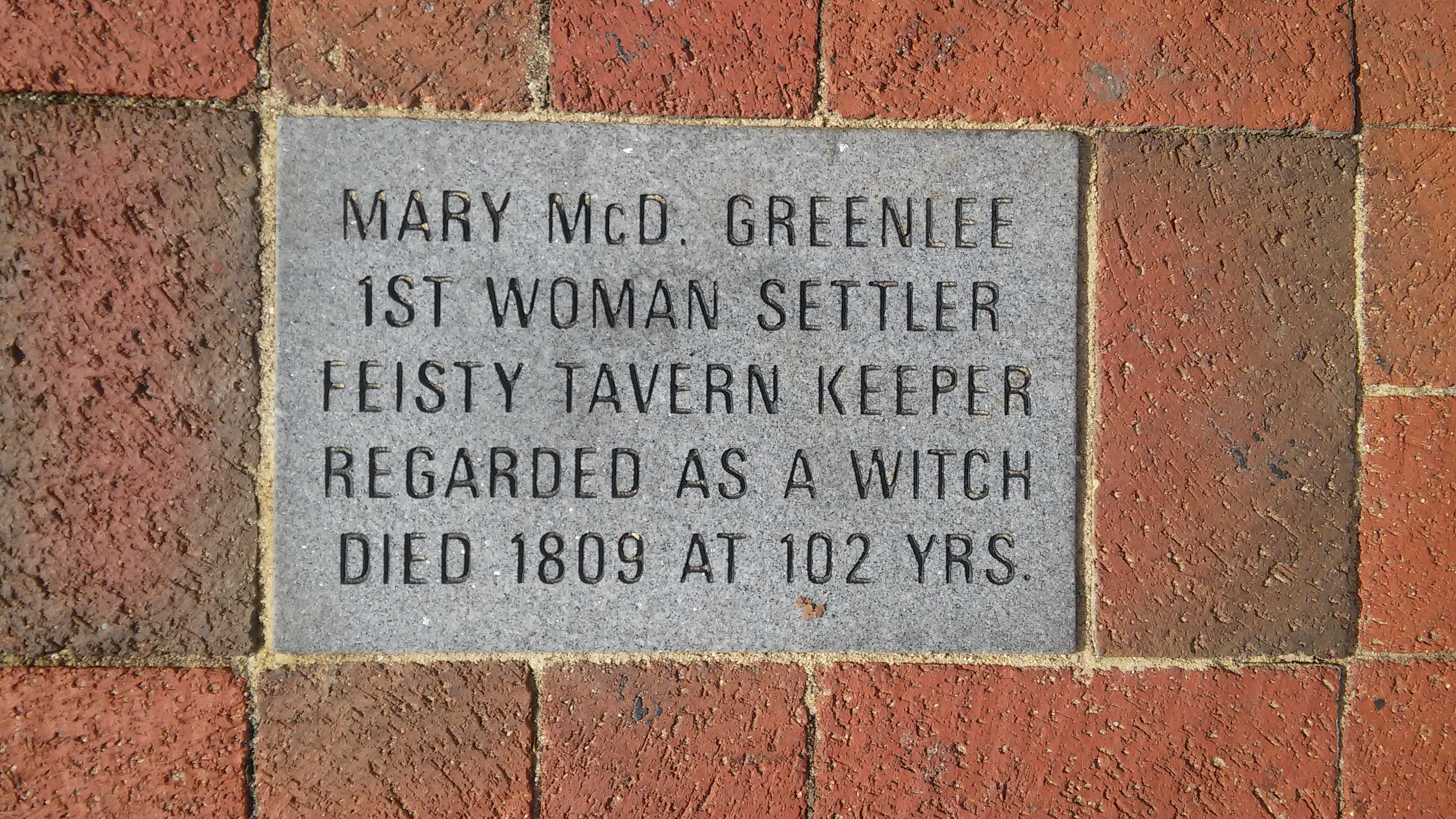

Born in 1793 at Timber Ridge, Houston moved with his family to Tennessee in 1807. He left home, lived with the Cherokees, became a congressman 1823-27 and a governor 1827-29. He later commanded the Texas army and helped win Texas independence from Mexico in 1836. He was president of Texas for two terms, became a U. S. senator and opposed southern secession. He died in 1863.
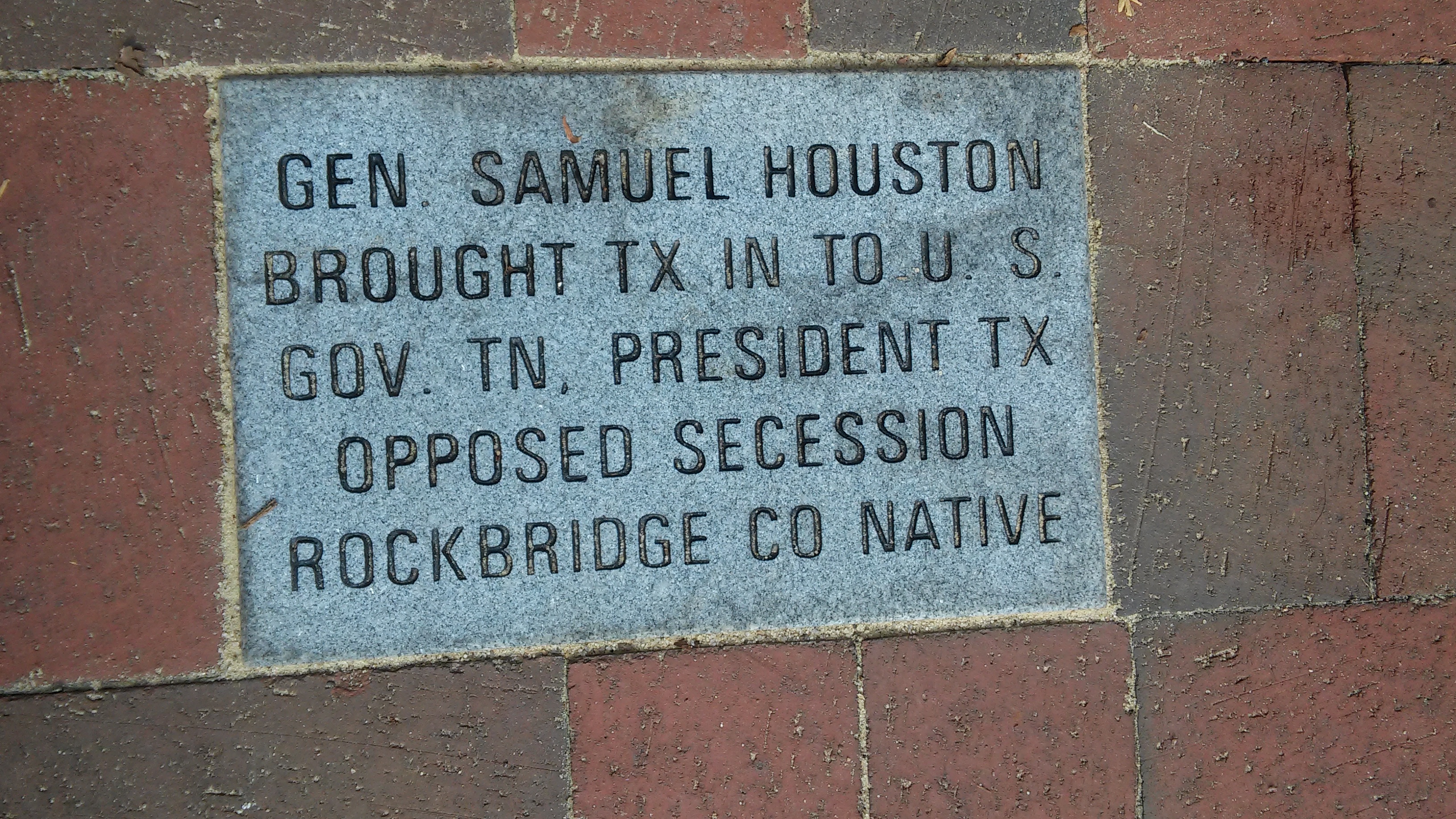

Maj. Gen. David O. Hunter was head of U.S. Army of Western Virginia during Civil War in 1864. He had received the moniker “Black Dave” for emancipating slaves in three states, (an order rescinded by President Lincoln.) He was ordered to destroy rail service in the Shenandoah Valley from Port Republic to Lynchburg and followed a scorched earth policy. He proceeded to Lexington from Staunton in June with an augmented force and bombarded VMI, Washington College, and town of Lexington. The house of Governor John Letcher, and VMI (in retaliation for the cadets’ participation in the Battle of New Market) were burned. After a weekend occupation, Hunter continued towards Buchanan and Lynchburg, where he was defeated and relieved of command. This was the only Union assault on the Rockbridge area in the war.
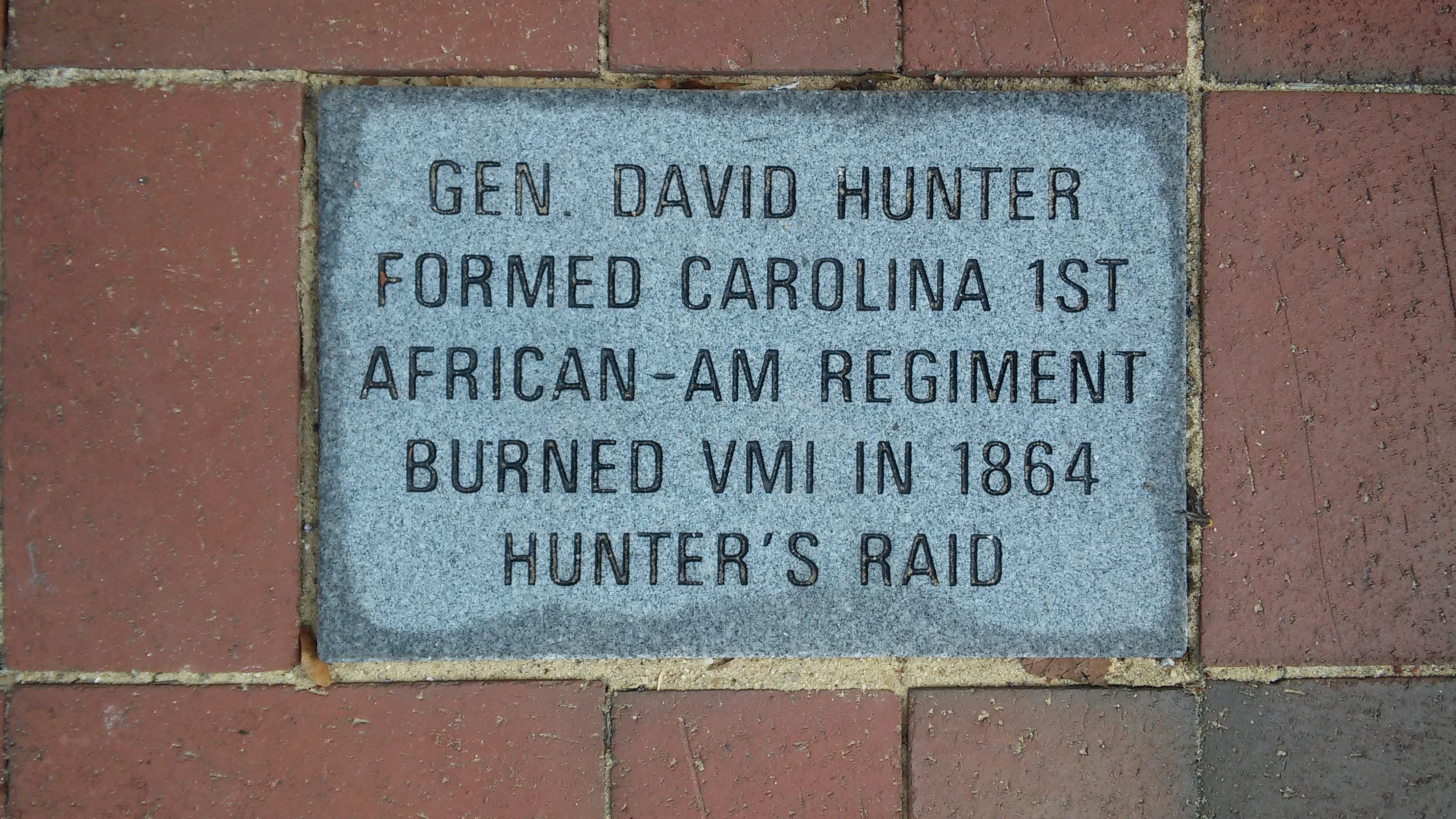

Before becoming one of the most celebrated of Confederate generals, Gen. Thomas J. ‘Stonewall’ Jackson was a VMI Professor of Natural and Experimental Philosophy, a devout deacon at Lexington Presbyterian Church (where he also taught a “colored Sabbath-school” with wife Anna), and son-in-law to Washington College President and noted Unionist Rev. George Junkin. As one of Gen. Robert E. Lee’s most trusted ‘lieutenants,’ Jackson’s swift string of successes in the Shenandoah Valley Campaigns of 1862 earned him zealous devotion and near legendary status from Confederate armies and citizens alike. After his mortal wounding at Chancellorsville, mistakenly shot by his own men while on patrol,he was buried in Lexington on May 15, 1863 at what is now known as Stonewall Jackson Cemetery.
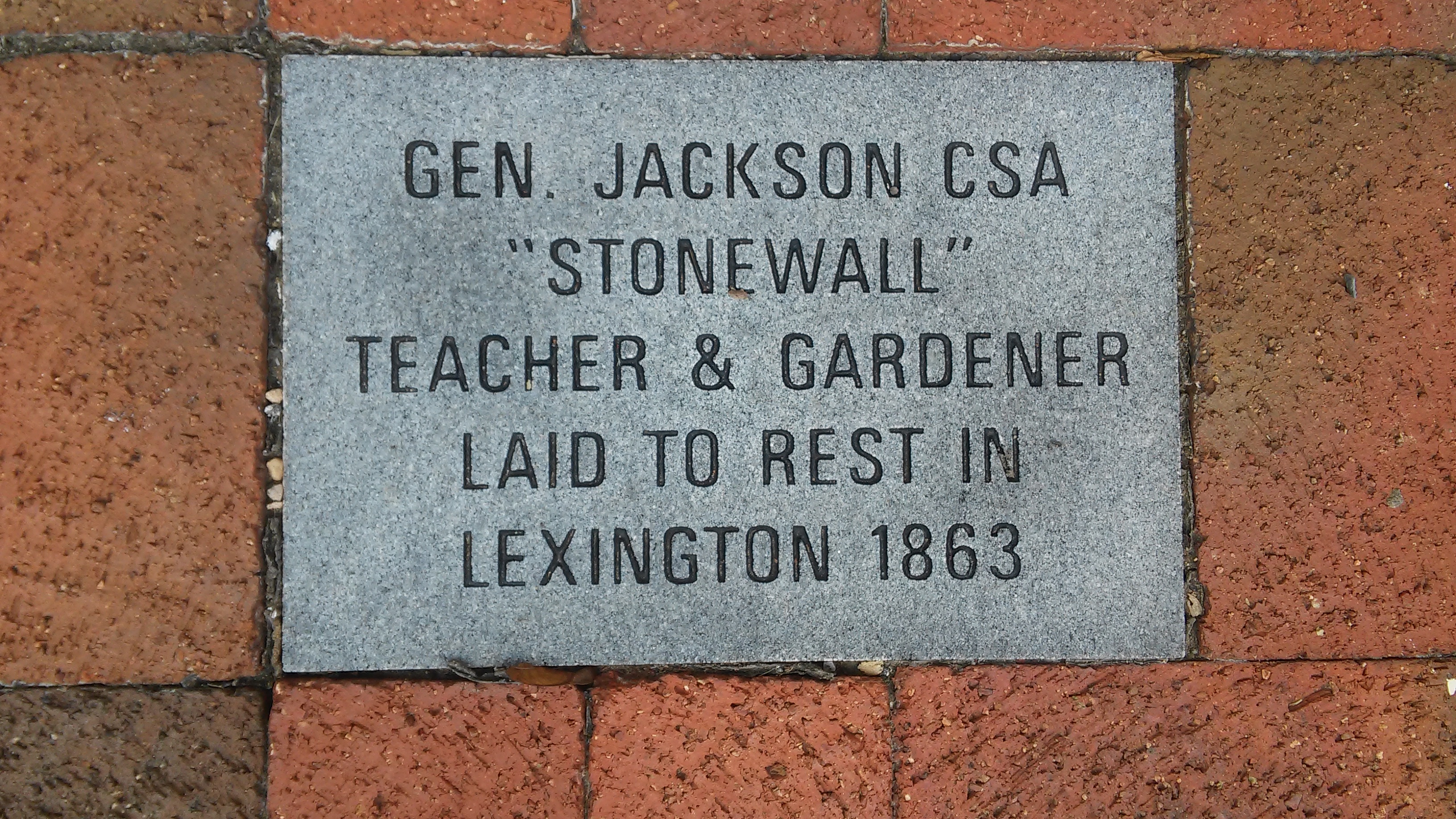

On July 5, 1774 Thomas Jefferson purchased the Natural Bridge by royal patent from King George III. In Notes on the State of Virginia, he would famously described the geological marvel that gave Rockbridge County its name, as “the most sublime of Nature’s works.”
In his 50 year ownership til death, he traveled there several times from Poplar Forest, sometimes staying at Greenlee’s Ferry near Natural Bridge Station. Letters written by his granddaughter Cornelia detail a dramatic journey and her marvel and awe, while traveling there with “Grandpapa.” Jefferson also initiated various enterprises on his properties there, which were managed and cultivated for some time by Patrick Henry, a “freeman of colour.”
When not in retirement at his Monticello estate, Jefferson variously authored the Declaration of Independence and Virginia’s Statue of Religious Freedom, and he served as Governor of Virginia during the American Revolution, Washington’s Secretary of State in Paris, and two terms as the 3rd President of the United States. During his presidency, Jefferson commissioned Lewis and Clark’s ‘Corps of Discovery,’ which departed and returned through Virginia’s Valley; Meriwether Lewis and William Clark’s local histories are duly chronicled on this site.
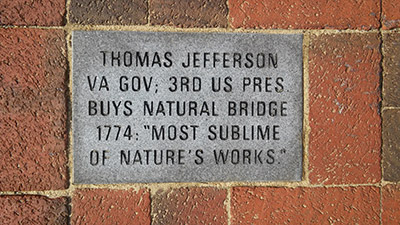

Jordan came to Lexington shortly after his marriage and partnered with another builder, Samuel Darst. They worked together as builder-architects in the growing community, promoting industrial development.
A prominent example of their work is Washington Hall, the Roman-Revival, temple-form central and oldest building on Washington and Lee University’s colonnade. Built in 1824, Washington Hall established the classical theme for the front campus. That same year, the firm completed “Beaumont,” Darst’s residence and one of the stately homes on Lee Avenue.
Jordan’s own residence, “Stono,” still stands on a bluff at Jordan’s Point. The firm did the brickwork for “Monticello,” President Thomas Jefferson’s home in Albemarle County.
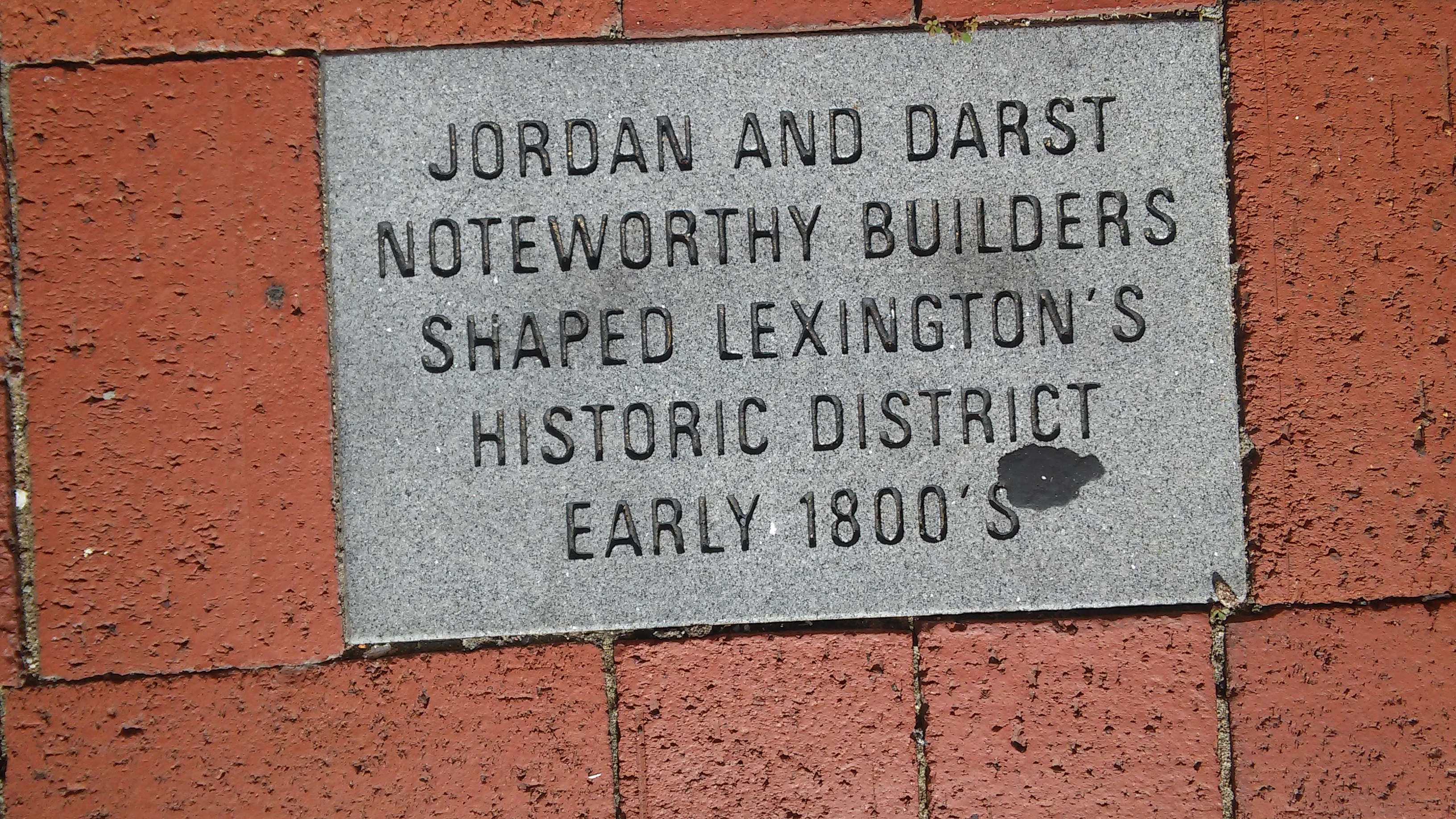

Former Confederate General Robert E. Lee accepted the presidency of Washington College in 1865. Intent on healing the wounds of the war, he recruited students from both the North and the South. Lee instituted the college’s honor system and speaking tradition, which are still in place today, saying that the school had only one rule: to be a gentleman. Lee Chapel (named for Lee after his death) was built at Lee’s request in 1867. His official office was in the basement, and he and his family are interred there. Lee and his wife Mary Anna Randolph Custis (great-granddaughter of Martha Custis Washington, wife of George Washington) lived on campus. The doors of the garage, where Traveller was stabled, are traditionally left open for the horse’s comings and goings. Visit Lee chapel and see Lees’ home.
Born in Lexington VA., Letcher graduated from Washington Academy (now Washington and Lee University). He served in the U.S. Congress and as Virginia’s Civil War governor, 1860-64. Letcher helped to organize the Peace Conference of February 1861, a final effort to avert civil war. By April, however, secessionist sentiment had grown. When Simon Cameron, Secretary of War, sent a formal request (demand) that Virginia send members of its militia to serve the federal government in squelching the rebellion, Letcher replied in part, “You have chosen to inaugurate civil war and, having done so, we will meet it in a spirit as determined as the Administration has exhibited toward the South.” Letcher ordered Colonel Thomas J. Jackson to assume command at Harper’s Ferry where Jackson assembled the famous “Stonewall Brigade.” Governor Letcher’s Lexington home was burned by Union Troops during Hunter’s Raid of 1864. After the war, Letcher served on the VMI Board of Visitors and as a member of the Virginia House of Delegates.
Visit the adjacent campus’ of Washington and lee University and Virginia Military Institute; both on the National Register of Historic Places.
Governor Letcher is buried at the Stonewall Jackson Memorial Cemetery in Lexington.
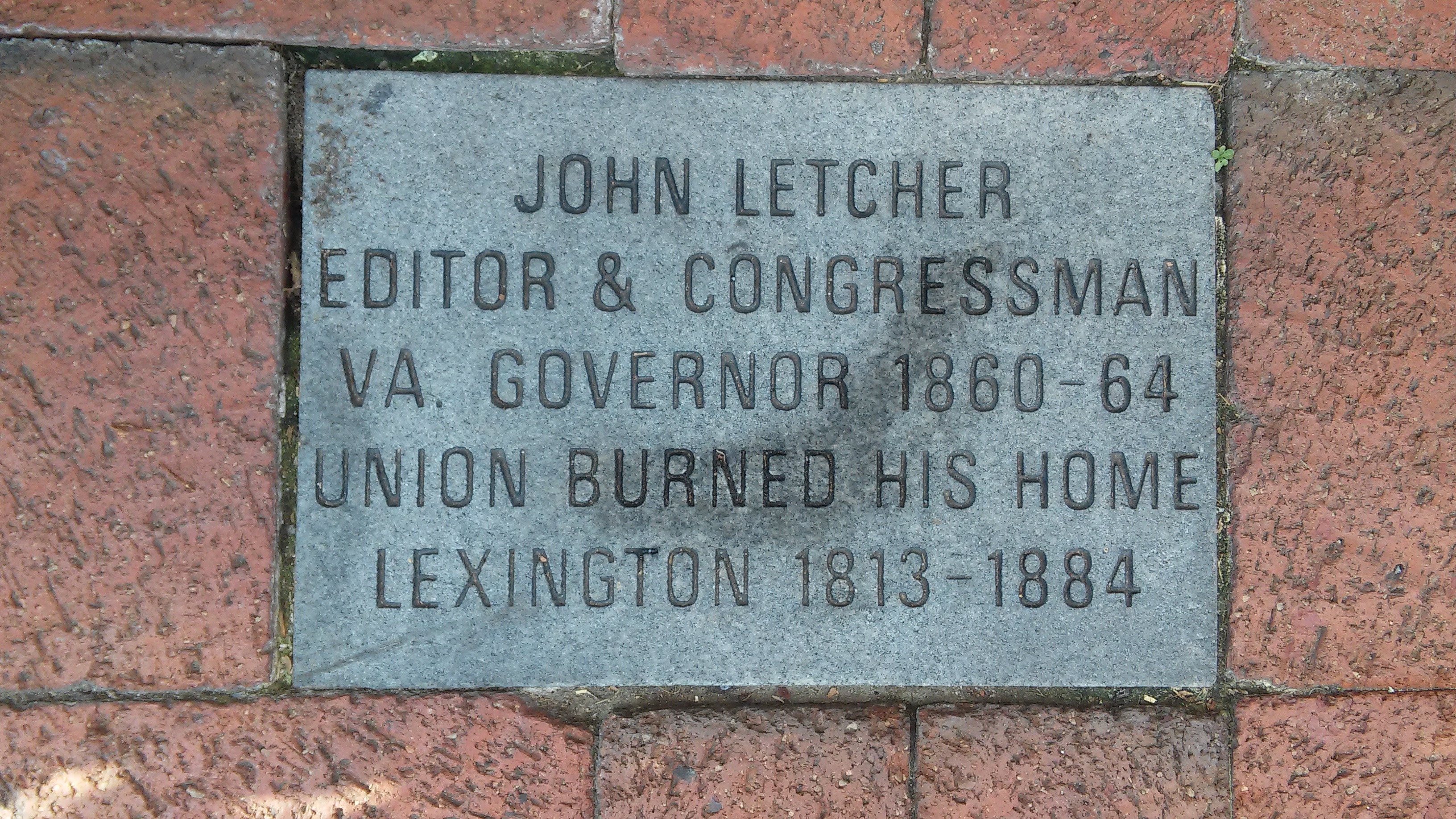

Meriwether Lewis (1774-1809) spent much of his youth in the shadows of the Blue Ridge his well-known westward expedition with William Clark and "The Corps of Discovery" from 1804-1806. Born in Albemarle County, VA, he would find a mentor in near neighbor Thomas Jefferson, and his tutoring and educational opportunities in Virginia would serve him well, through his life. There is some speculation that ha attended Liberty Hall Academy, now Washington and Lee University. One of his tutors was Parson Matthew Maury, an uncle of Commander Matthew Fontaine Maury.
After the extraordinary achievements of Lewis and Clark's "Corps of Discovery" in reaching the Pacific and returning to St. Louis, Lewis traveled to Washington to meet with President Jefferson (with whom he had previously lived at the White House, while serving as his Secretary of State). Appointed Governor of the newly established Louisiana Territory, Lewis struggled with the political haggling, administrative work, land speculation, that characterized the early American frontier. What Jefferson noted to be a longstanding and hereditary tendency to depression may well have contributed to Lewis' suicide, in the Tennessee woods at Grinder's Stand, when he was traveling to Washington to defend his conduct and financial affairs before Congress.
On hearing this news, when with his wife's family near Fincastle, Clark would travel to Monticello in Dec. 1809, (staying en route at the Eagle Tavern on Main St. Lexington, and at McDowell's Red House near Fairfield) to discuss plans for the still unpublished journals Lewis and Clark had kept. In time, along with 'Clark's Great Map,' they would be counted among the greatest treasures in American literature and history.
Visit the Liberty Hall Academy ruins and also see the National Oceanic and Atmospheric Administration marker designating Rockbridge County as part of the Lewis and Clark Eastern Legacy Trail on Main St. in Lexington.
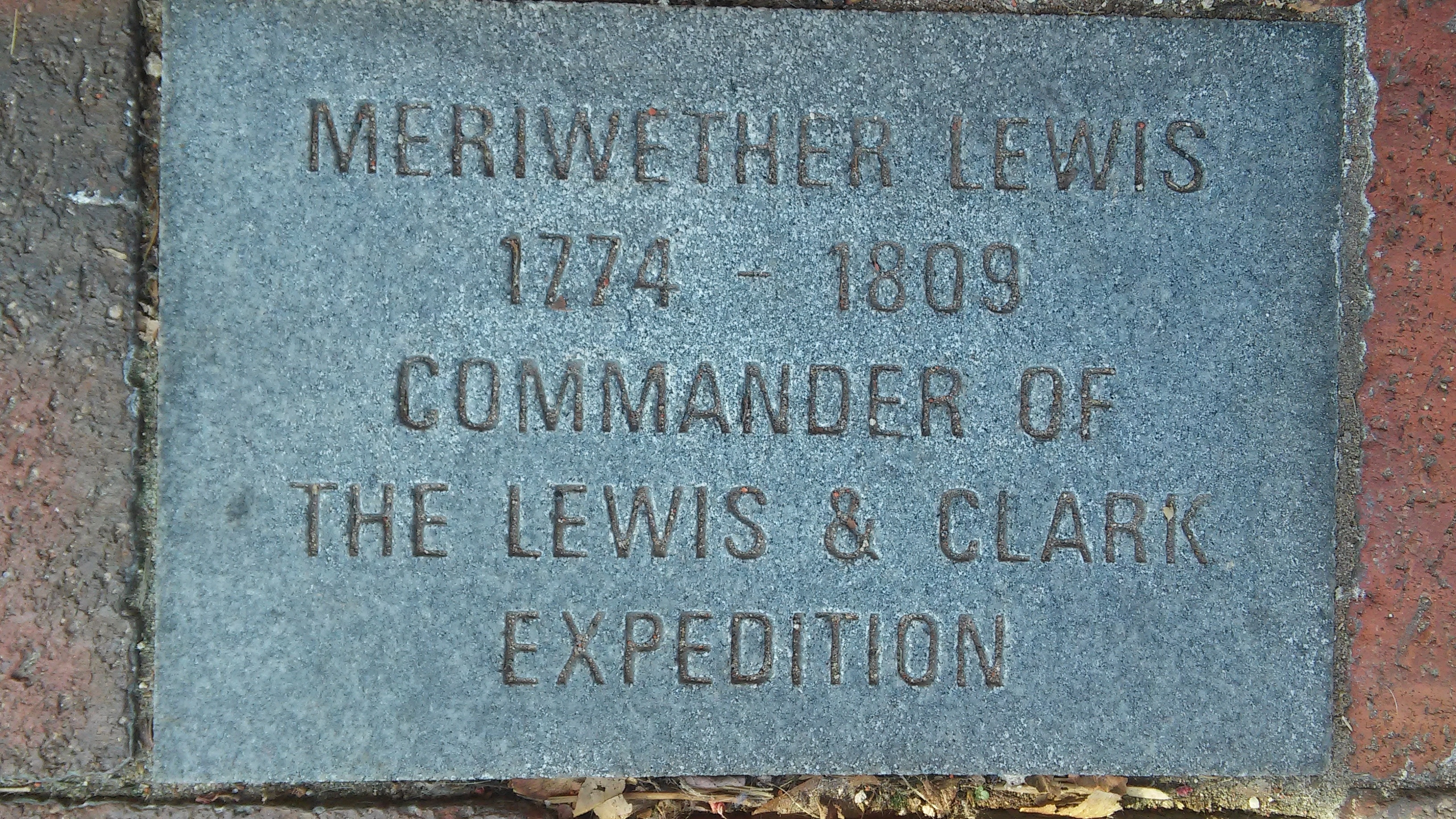

Little Sorrel was Gen. Thomas J. “Stonewall” Jackson’s warhorse through his Valley Campaigns and at the Battle of Manassas, where the General earned his abiding nickname for “standing like a stone wall.” Jackson was riding his favored horse when he was fatally shot by friendly fire at the Battle of Chancellorsville in 1863. Little Sorrel ‘retired’ to North Carolina with Jackson’s widow after the war, and was saluted by veterans returning by train to VMI grazing there before dying 1886. Donated to VMI in 1949 by the United Daughters of the Confederacy and displayed in the VMI Museum; Little Sorrel’s mounted hide had to be protectively encased after too many memorial tokens were plucked away by visitors and cadets. Like Robert E. Lee’s beloved horse, Traveller, Little Sorrel was belatedly and ceremonially buried in Lexington. In 1997 the 2nd remains were interred, 111 years after death, in front of the bronze statue of Jackson at the head of the VMI Parade Ground.
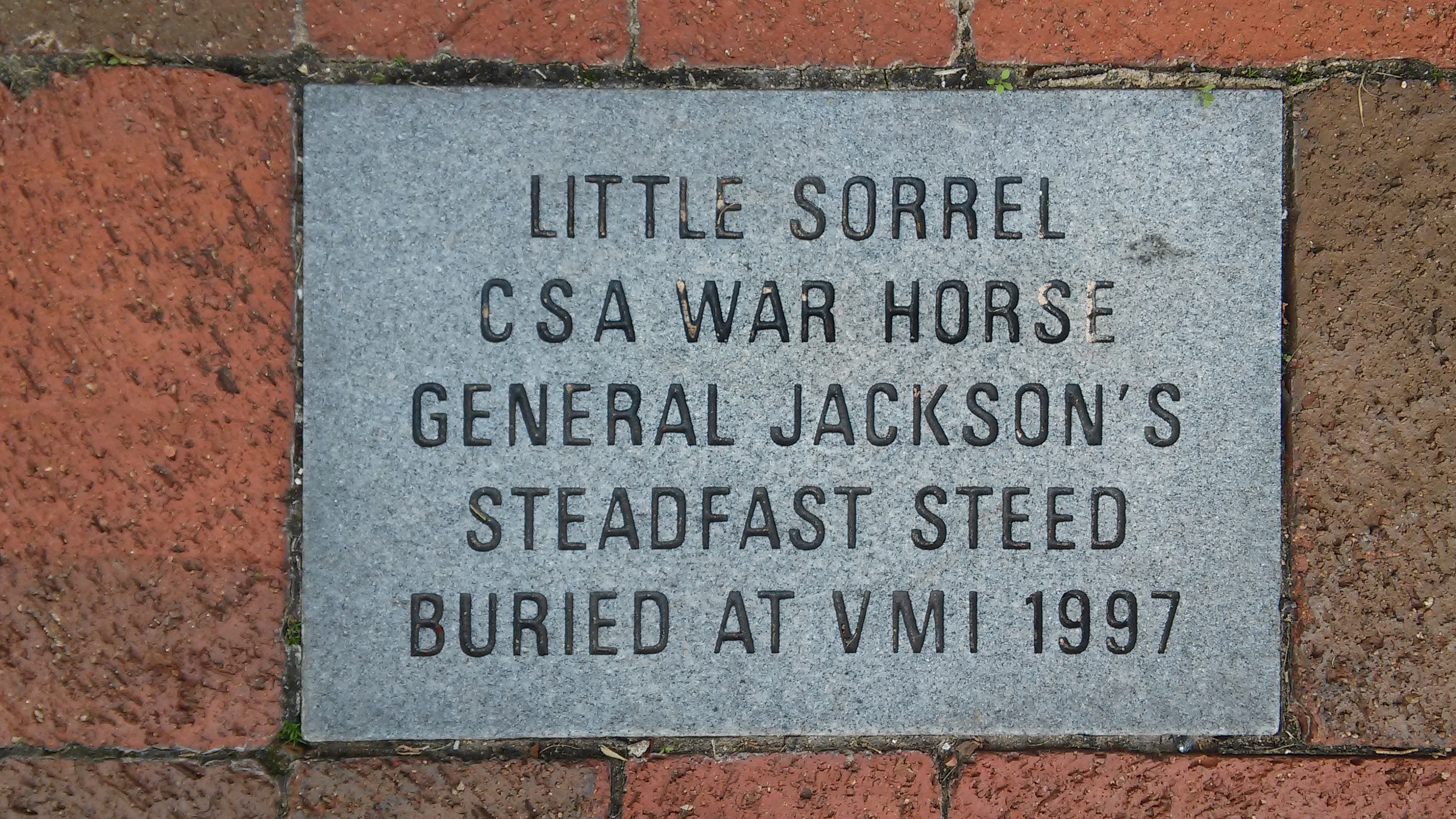

One of the most celebrated of United States soldiers and statesmen, George C. Marshall began his military career in Lexington as a VMI cadet, graduating in 1901. After serving as US Army Chief of Staff throughout WWII, Marshall was appointed Secretary of State by President Truman in 1947. His recovery plan for Postwar Europe became popularly known as the Marshall Plan, and led to his being awarded the Nobel Peace Prize in 1953, the only U.S. Army General to receive this honor. Marshall also served as President of the American Red Cross and as Secretary of Defense. In 1964, the Marshall Foundation was established in Lexington, with a museum and library (open to the public) on the VMI Parade Ground.
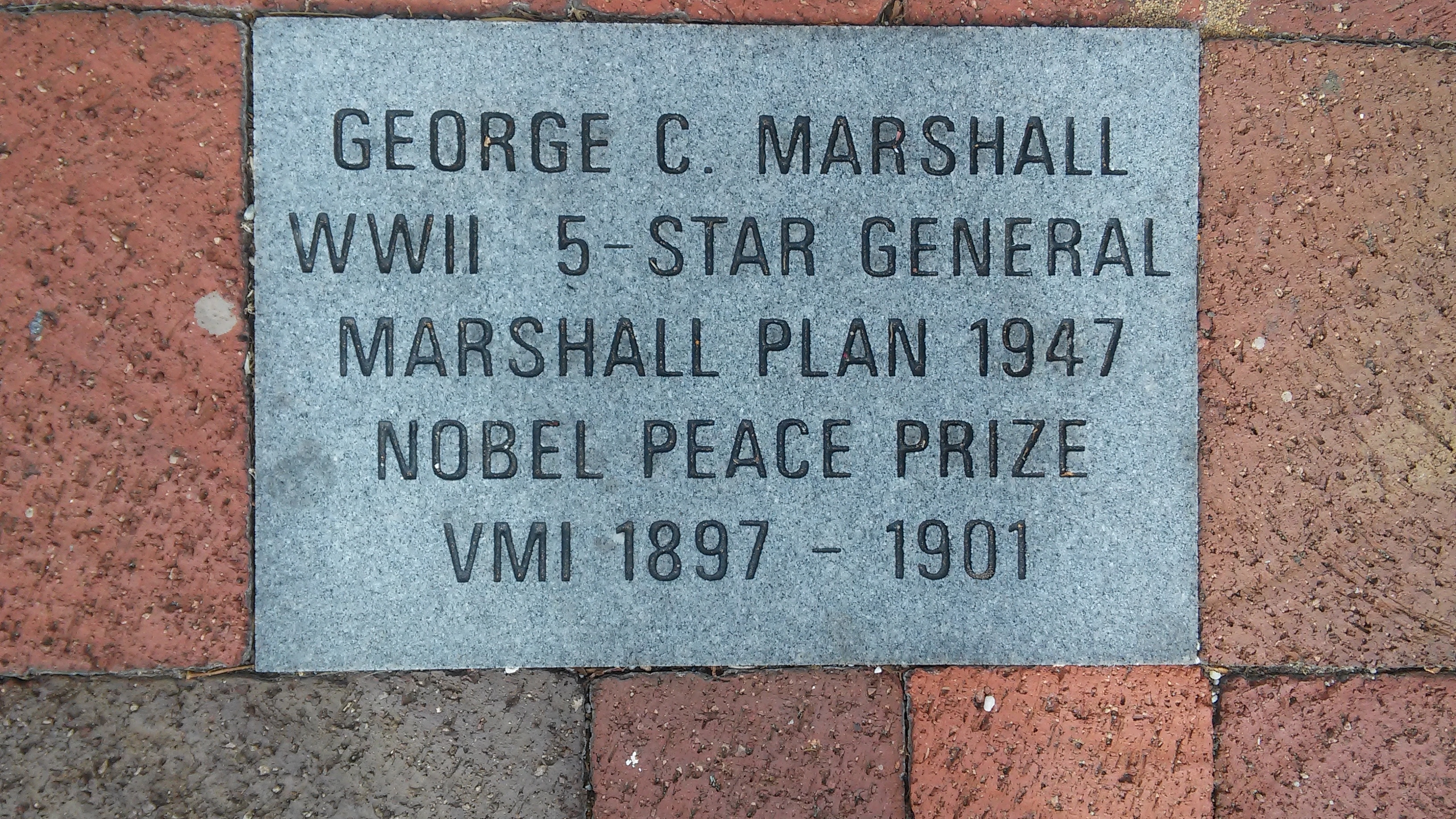

Maury’s numerous namesakes include the river which runs through Rockbridge County, and a moon crater. In 1842 he became the first superintendent of the United States Naval Observatory. He resigned in 1861 to serve Virginia during the Civil War, perfecting an electric “torpedo” (naval mine) which wreaked havoc with Northern shipping. Maury charted the seas partially by using data gathered by sea captains, who threw bottles overboard that contained notations about current position and conditions and picked up bottles thrown by others. He was one of the first to recognize the value of “big data” and published the groundbreaking ‘The Physical Geography of the Sea and Its Meteorology’ in 1855, earning him his nick name "The Pathfinder of the Seas," and "The Father of Oceanography."
Following the war, Maury chaired the physics department at Virginia Military Institute until his death. He stipulated that his funeral procession to Richmond go through Goshen Pass in springtime.
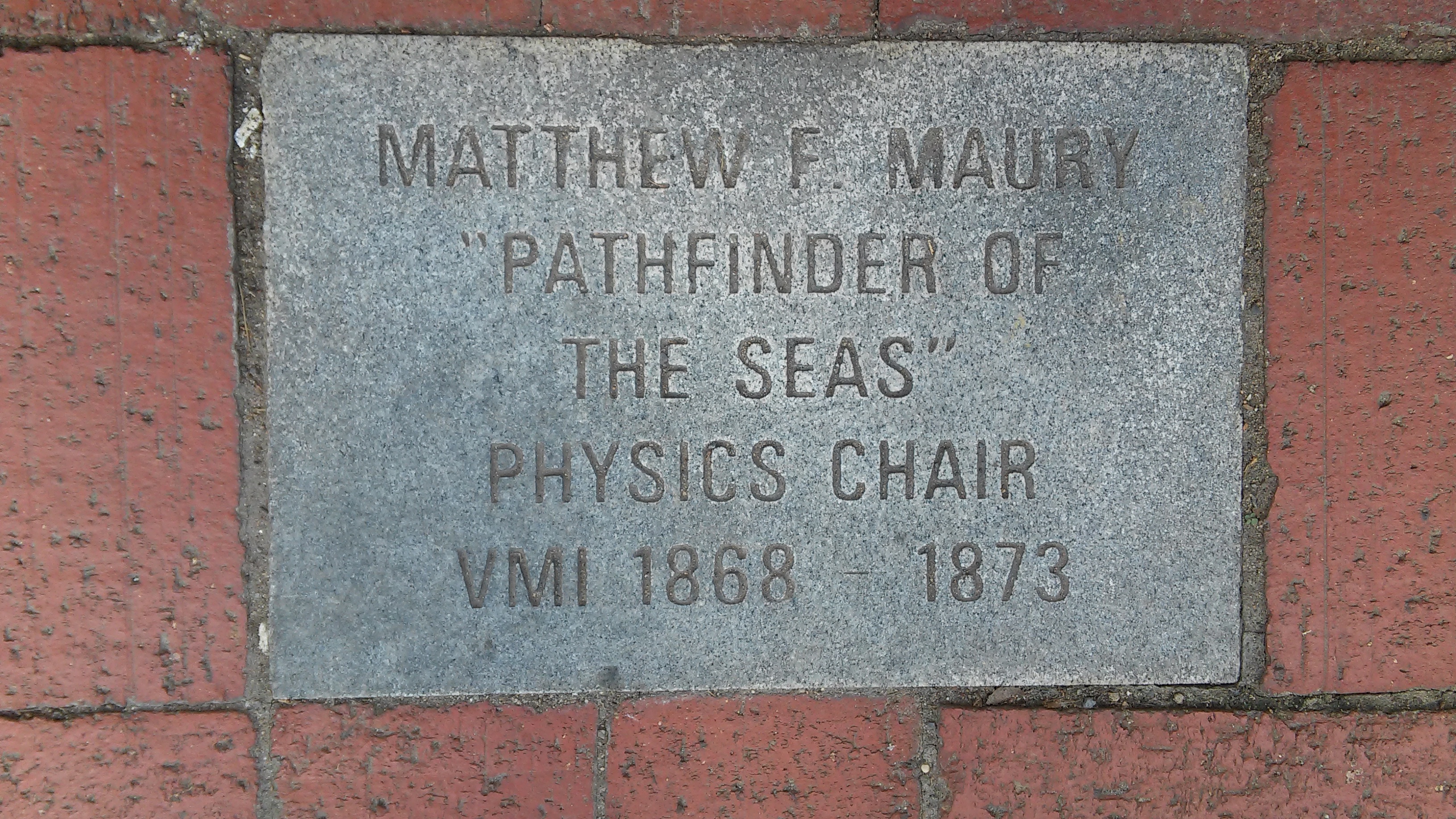

McCormick first demonstrated the mechanical reaper, for which he became famous in Rockbridge County in 1831 and was granted a patent in 1834. Unable to market his invention to local farmers who deemed it unreliable, he made various improvements and moved to Chicago in 1847. There he found a ready market during a time of great population expansion in the Midwest. He and his brother built a large industrial plant, later named the McCormick Harvesting Machine Company (which became part of International Harvester Company in 1902). McCormick’s reaper was the subject of numerous patent suits.
One of America’s early millionaires, McCormick was a benefactor at Washington and Lee University, where a statue of him stands today. Walnut Grove, his family farm in Raphine, currently known as McCormick farm, is a museum run by Virginia Tech.
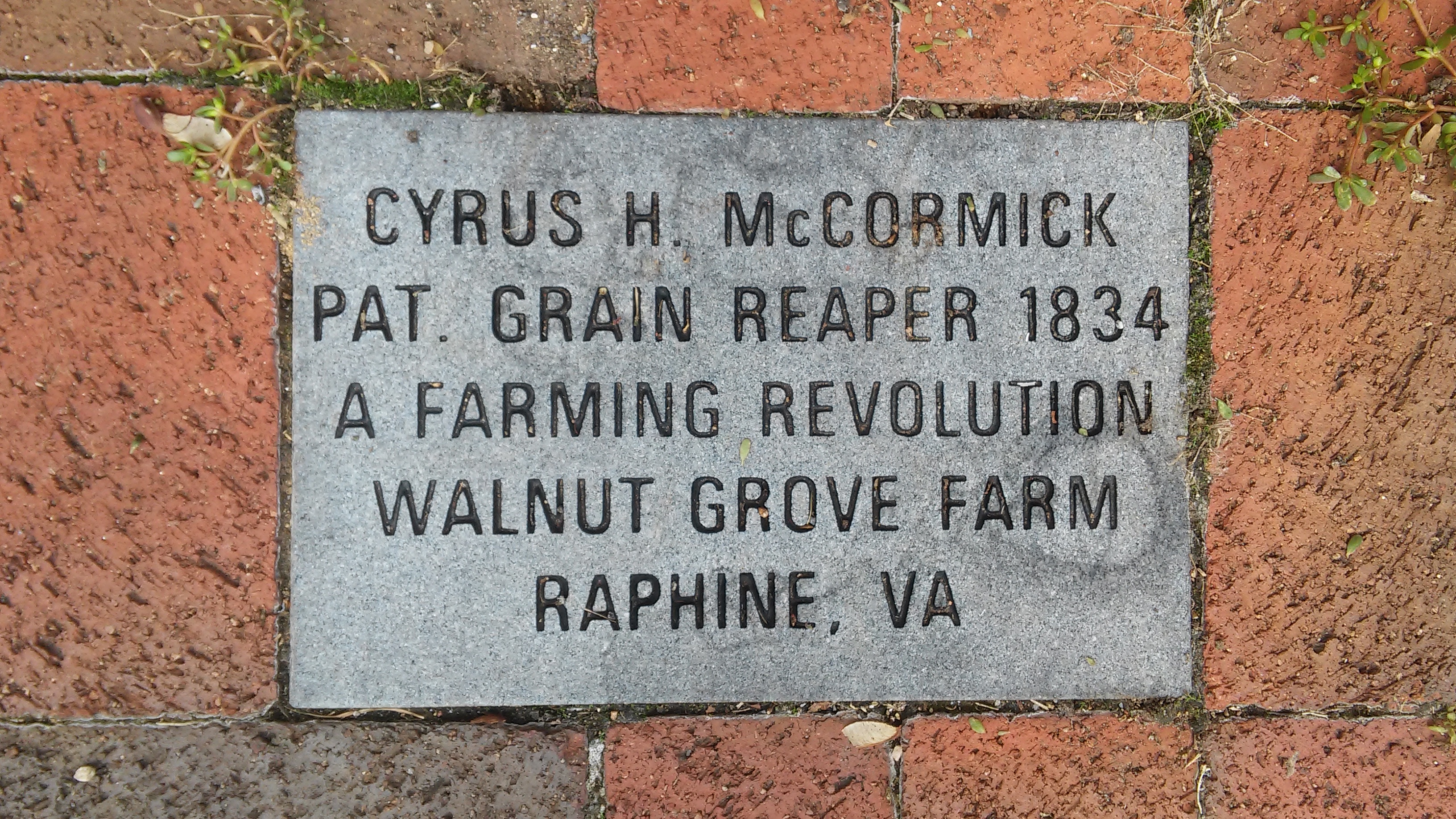

Ruth Anne McCulloch was one of the founding leaders of the Rockbridge Historical Society, formed in 1939 in an attempt to stop the demolition of the 'Nannie Jordan House,' on S. Main. In addition to her governance in helping to establish RHS' collections, programs, and early membership, her legacy is still felt through two books chronicle several of her rich anecdotal tales and historical vignettes of life in Lexington and Rockbridge in the early part of the 20th century, and the families and traditions that preceded.
In addition to her service to RHS, McCulloch was one of the co-founders of the Blue Ridge Garden Club (the Garden Club of Virginia still gives an award in her name), as well as the 'Ignorance Club': a local all-women's literary society that still meets today to share originally researched papers of cultural and historic interest.
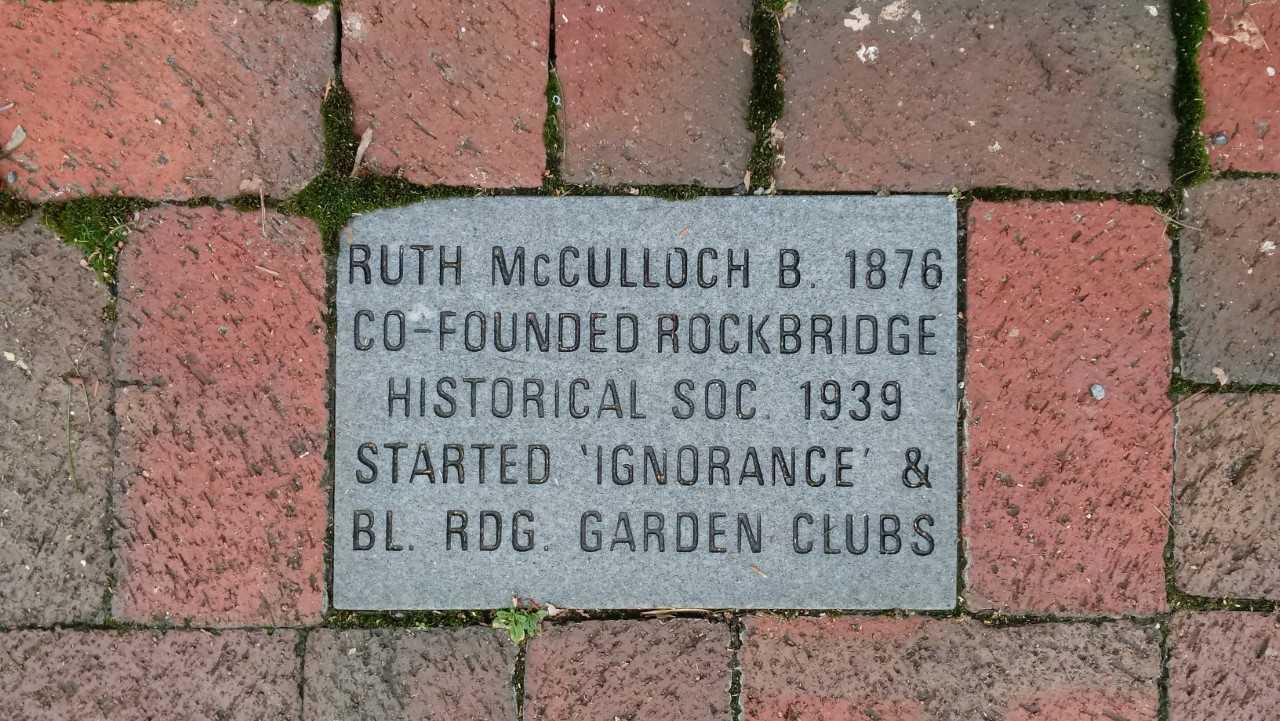

Born in Rockbridge County, Ephraim was the ninth child of Samuel and Mary McDowell. His family moved to Danville KY began his medical practice from his home in 1795. Despite his extensive medical studies, including time at Staunton VA. and Scotland’s Edinburgh University Ephraim never received a diploma. But, in 1825 the University of Maryland conferred upon him an honorary degree. Without graduating, he returned to Danville, where he married Sally Shelby and began his medical practice from his home. In 1809, he became the first doctor in America to remove an ovarian tumor from a patient, Jane Todd Crawford of Green County. Also a native of Rockbridge County, she endured a horse ride of sixty miles to his office and survived the extraction of the 22.5 pound tumor without anesthetic. After staying in bed for three days, she returned home by horseback and lived another 32 years. Ephraim died in 1830 and is buried in Danville. His home and apothecary shop are a museum and listed as a National Historic Landmark.
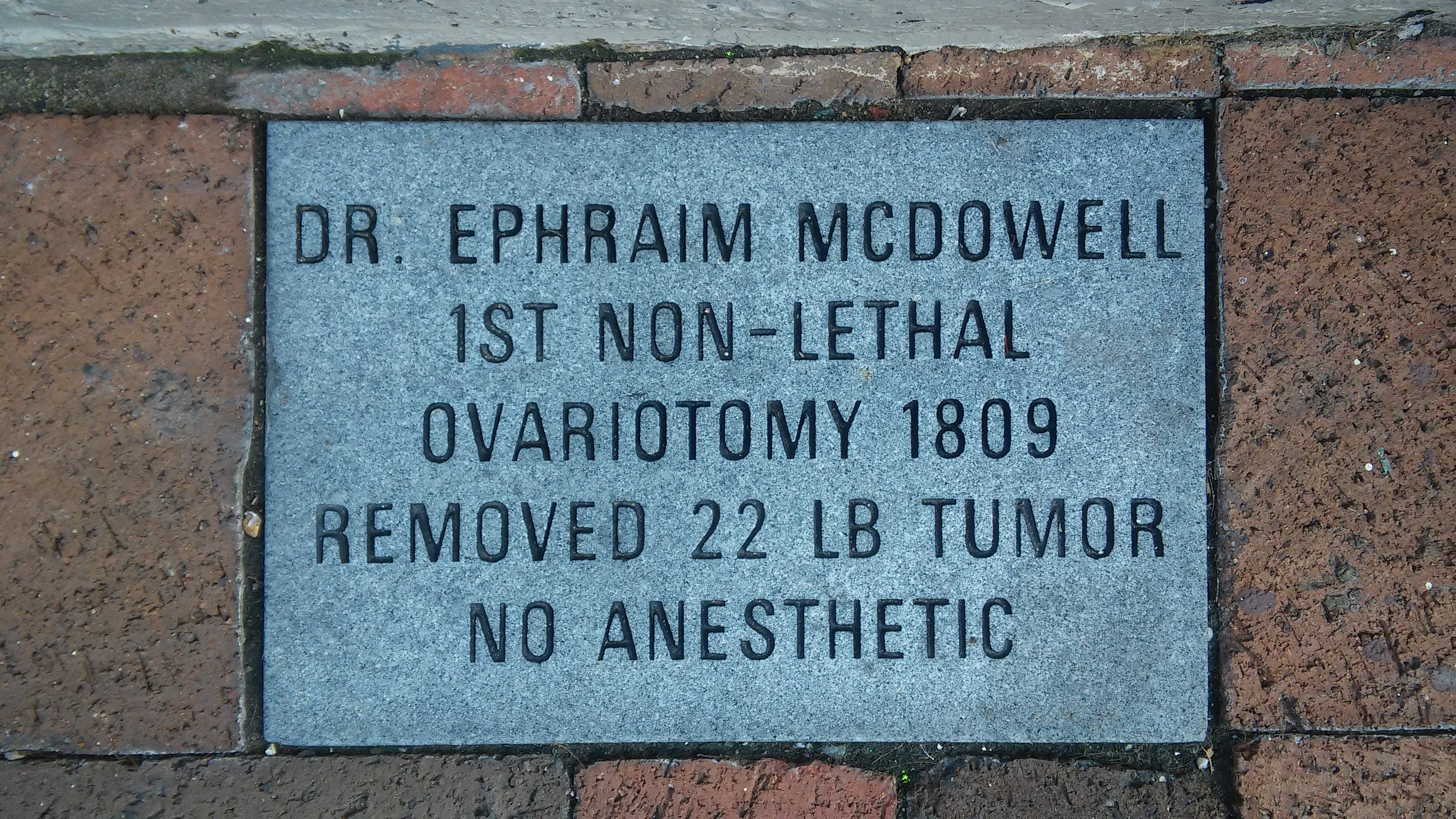

Michael Miley was born in Rockingham County, north of Staunton. When he was 19, he served in Gen. Thomas J. ‘Stonewall’ Jackson’s Stonewall Brigade in the Confederate Army. After the war, he worked in Staunton, learning photography before working with various other photographers in the area. In 1870 he began his own portrait business, photographing everyone from Robert E. Lee to Jefferson Davis, as well as taking pictures of students at Washington and Lee University and Virginia Military Institute. In the 1890s he began experimenting with carbon printing, a way to create color photography. This was a laborious process because only one color could be created at a time. Miley was a pioneer in this field, creating a process to print the different colors at the same time, although he believed it too difficult to ever become commonplace for photographs.
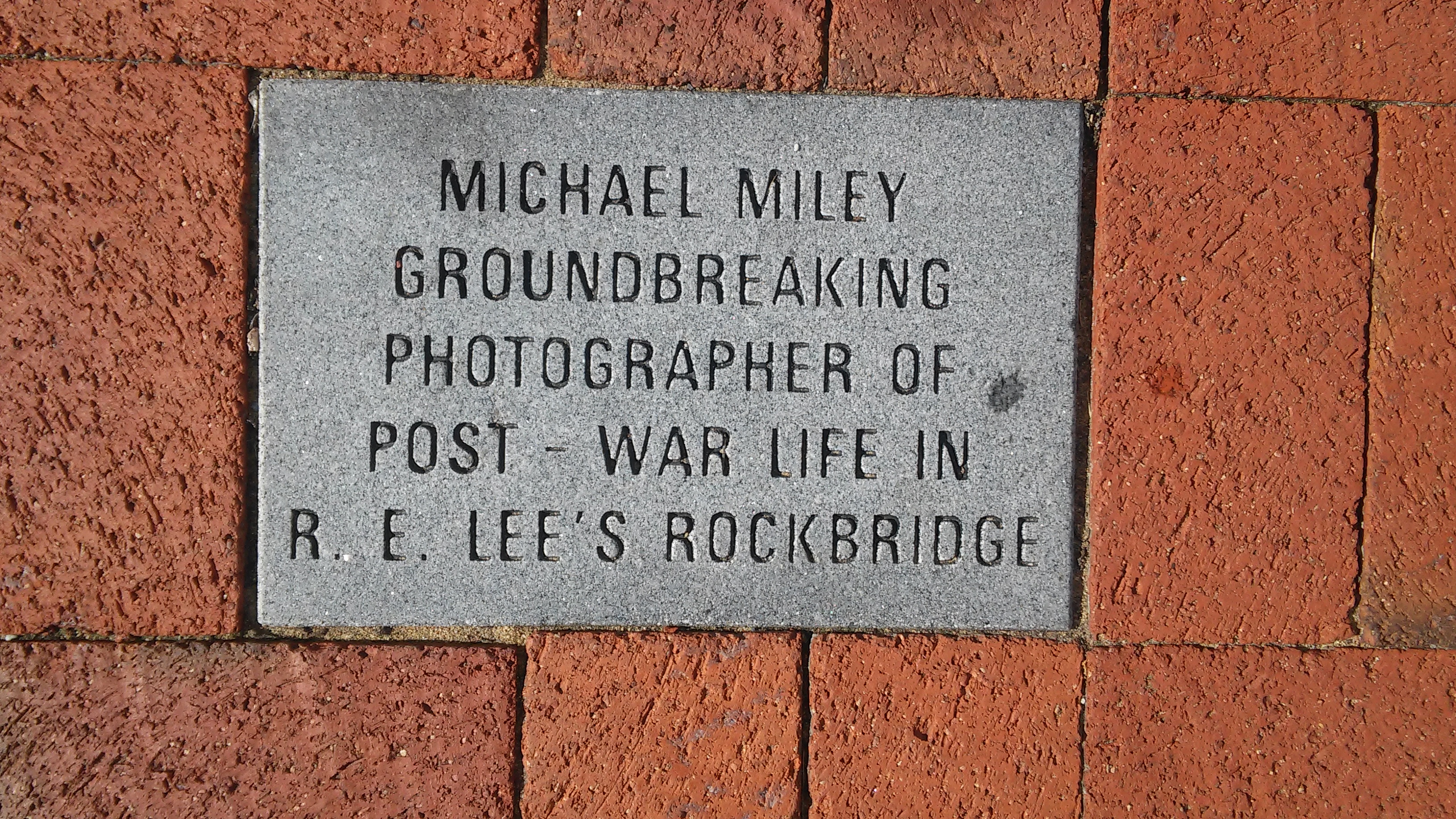

Benjamin C. Moomaw is widely recognized as the ‘Founder of Buena Vista.’ After establishing a local tannery, Moomaw foresaw the joint potential of new railroads, waterways, and industry to support a much larger town. In 1888, he created the Buena Vista Company, which sold out its stock shares in 30 days for $400,000, rapidly leading to the naming of the town, a city Charter in 1890, and “The Boom” of other factories, heavy industries, churches, stores, city offices, schools and homes that would create a dynamic new city almost overnight.
A minister of the Church of the Brethren, Moomaw lived with his family at Green Forest, about 600 acres, along the Maury River in the late nineteenth century. With nearby rail development, he dreamt of a prosperous city and invited a canning factory, a tannery, and a pulp and paper mill. With the help of others, he created the Buena Vista Company in 1889 to develop the surrounding lands. Stock sales went wild, and residential units, factories, stores, churches, a newspaper and hotel soon appeared. The town also gained early status as a city in 1892. The Depression of 1892-93, however, sank the quick progress.
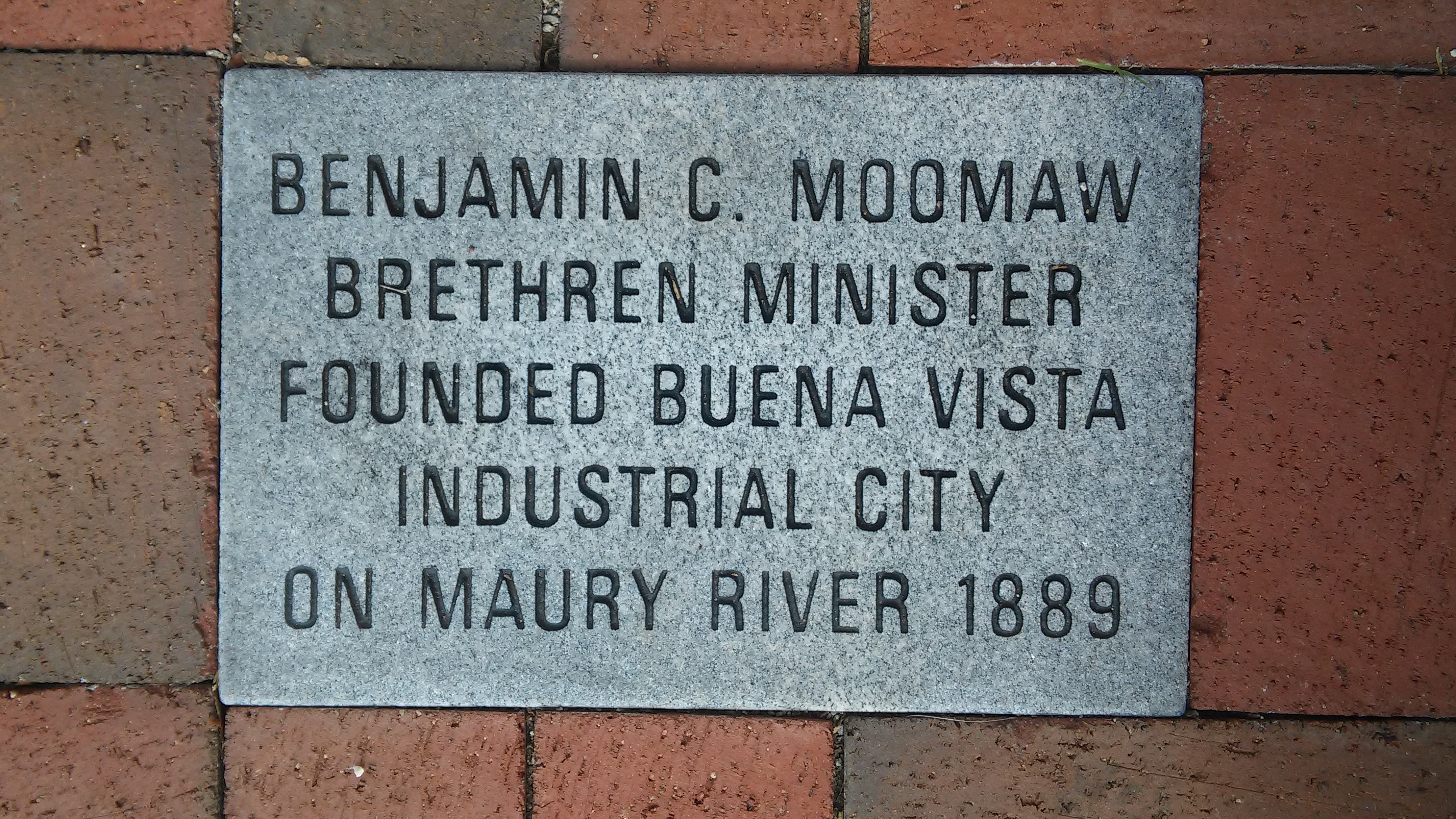

Born to freed slaves on Christmas Day 1866, technically speaking, Phil may not have been a rascal or righteous, but he prided himself on being a Virginia gentleman and around here that goes a long way. At six feet four inches tall, he had feet so big he could not find shoes to fit so he clomped around town on flat boards attached to his feet with carpet strips. He was a man of integrity and expected the same from others. If people cheated him, he simply tipped his hat and smiled. He lived in the Castle and let a rooster sleep on the foot of his bed. He kept his money under his bed until the rats got to it. He then went to the bank but insisted on seeing his money every day. On a trip to Baltimore, folks there laughed and made fun of him. He simply said, “They didn’t have a Mama like mine to teach them how to be a ‘Virginia gentleman.’ ” This tribute is to what he overcame with grace and to his manner, kindness, and example to all.
Nunn's stone stands outside the Castle, Lexington's oldest surviving buildings, owned by and right next to RHS' Headquarters and Museum, on S. Randolph St.
Skilled boatman. Enslaved hero. Lasting monument to personal courage, human care, and the rough perils of the James River footing Rockbridge County. Frank Padget was the savior for over 40 passengers on the canal boat Clinton when its tow rope broke in the icy floodwaters roaring through Balcony Falls, Jan.21, 1854.
Already highly respected for his labor, Padget was singled out for his skill and “noble daring” by Capt. Edward Echols, local boatowner and businessman whose eyewitness account of the deadly events would be published in the Lexington Gazette. As the canal boat washed over the Mountain Dam, Padget took the initiative to commandeer a nearby batteau, and steer through the whirlpools to a rock where a few passengers where desperately holding on. Accompanied by a crew of white and “colored” rescuers, they ferried dozens of passengers to safety before Padget — trying to save the last passenger stranded on the rock — drowned when his boat was dashed against it.
In addition to his printed tribute to Padget, Echols also commissioned a 5-foot stone obelisk to bear lasting witness to Padget’s bravery and sacrifice. The monument now stands in Glasgow’s Centennial Park. In 2007, the VA Department of Historic Resources dedicated a roadside marker titled “The Courage of Frank Padget.” Originally sited on the banks of the James near the fateful scene, the marker now stands outside the Amherst County Museum and Historical Society.
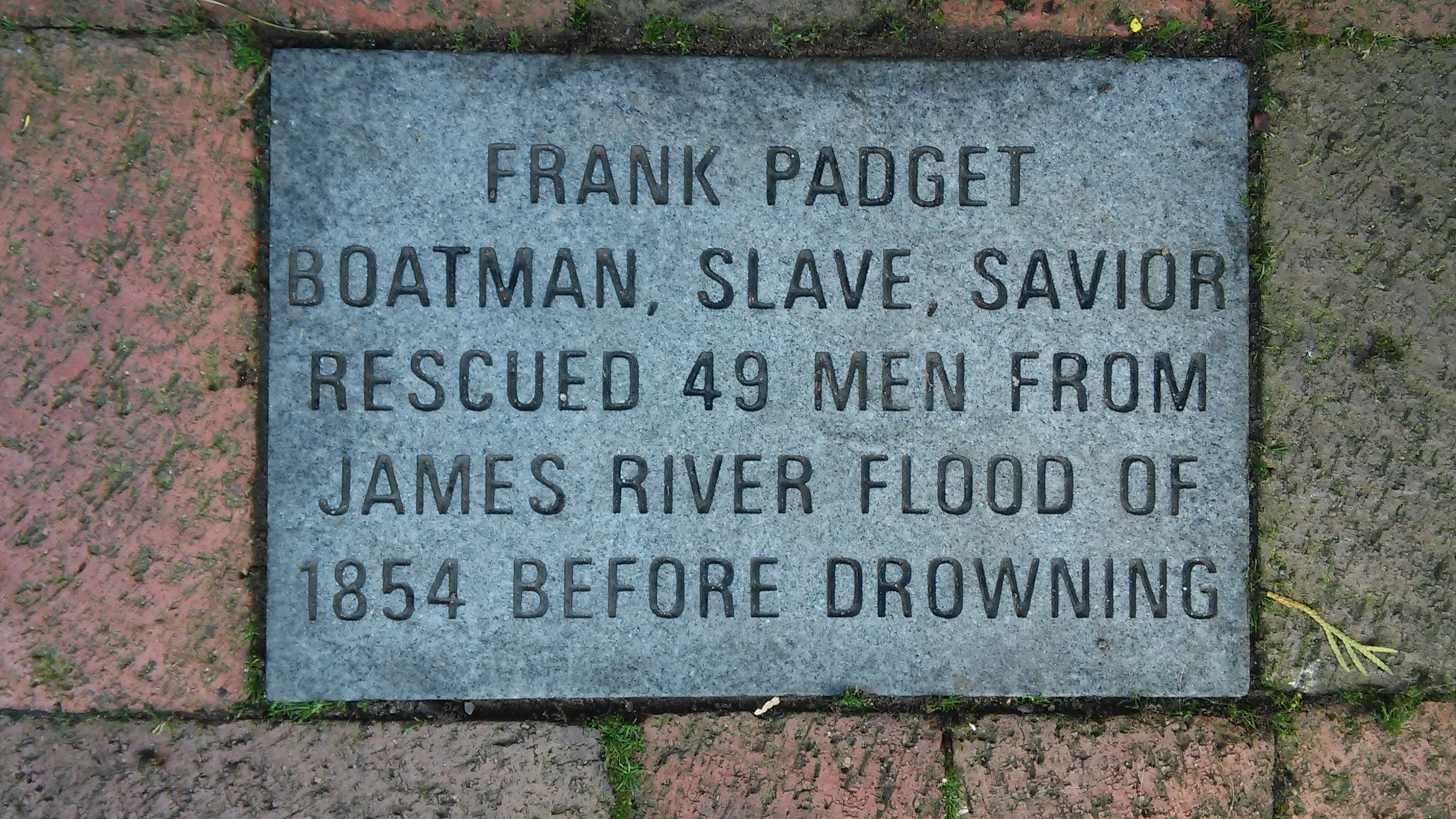

Acknowledged as one of the greatest military commanders in American history, Patton attended VMI from 1903-1904 before continuing his education at West Point.
American Expeditionary Forces commander Pershing; during that time, he established the AEF Light Tank School, with his tank brigade the first ever to be used in U.S. combat. His campaigns in North Africa and Sicily earned him lasting renown as a battlefield commander, but Patton was sidelined in response to scandals surrounding the disciplining of his troops. General Patton was famously assigned as the head of “Operation Fortitude,” the ‘phantom army’ on the coast of England designed to distract the Germans in the build-up to the invasion of Normandy; after D-Day, Patton’s Third Army proved critical in the Battle of the Bulge, and the ‘Race to Berlin.’ He was portrayed by George C. Scott in the Oscar-winning film, Patton.
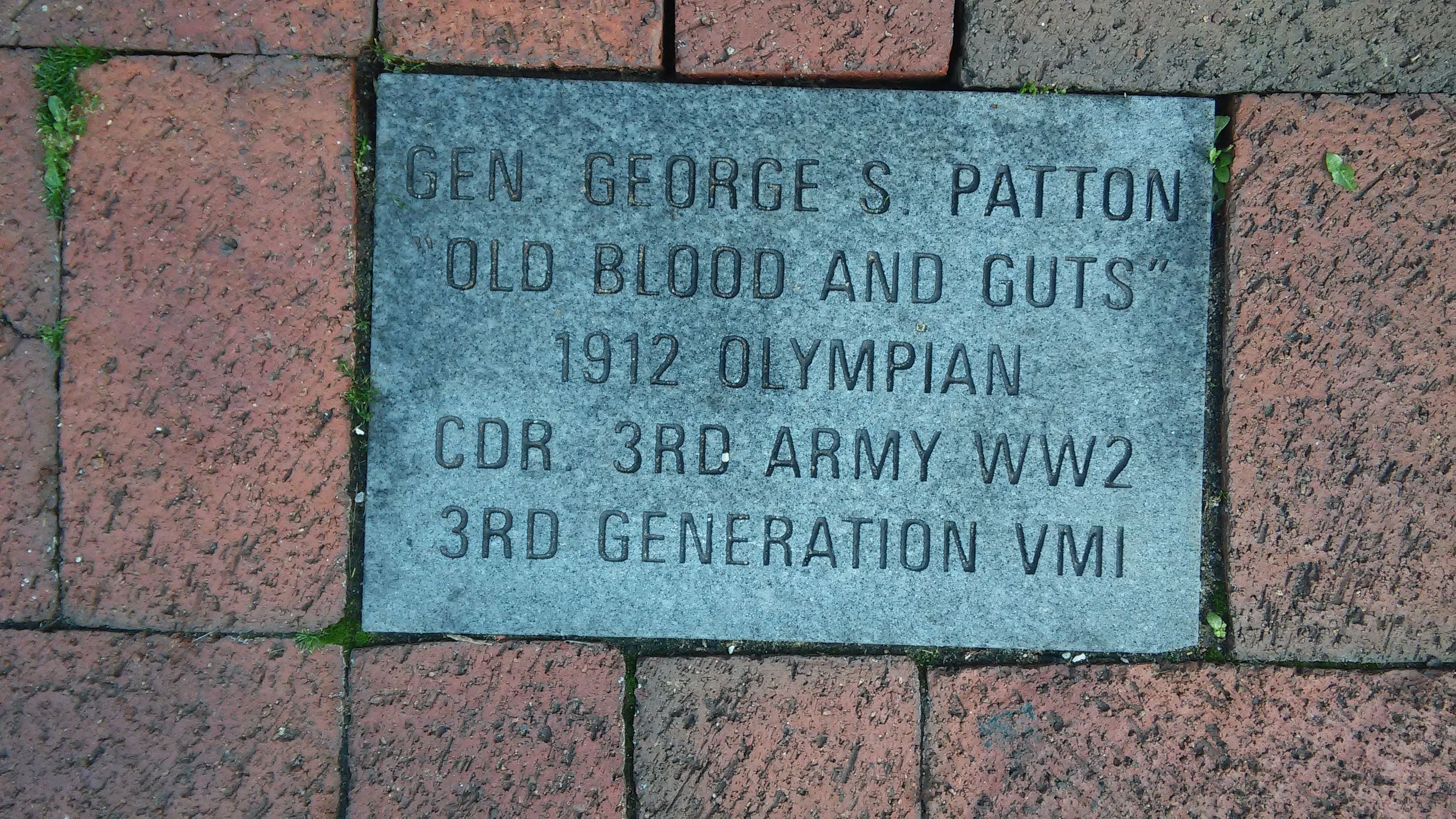

Bull Paxton was born in Rockbridge County in 1828 and attended Washington College ( now Washington and Lee University.) He was an early secessionist, and his outspoken views caused a rift in his friendship with General Stonewall Jackson. After the outbreak of the Civil War, Paxton chose to fight for his home state and join the Confederate cause. Jackson and Paxton renewed their friendship while serving together, and it was Jackson who promoted him to brigadier general in November of 1862. Although the choice caused some discontent among the soldiers, Jackson argued that he was the “best qualified” for the position. They both died from wounds incurred at the Battle of Chancellorsville and are buried together at Stonewall Jackson Memorial Cemetery.
Paxton’s home is located in Glen Maury Park, Buena Vista and has been designated a Virginia Historical Landmark. It is open to the public occasionally for community events and Civil War re-enactments.
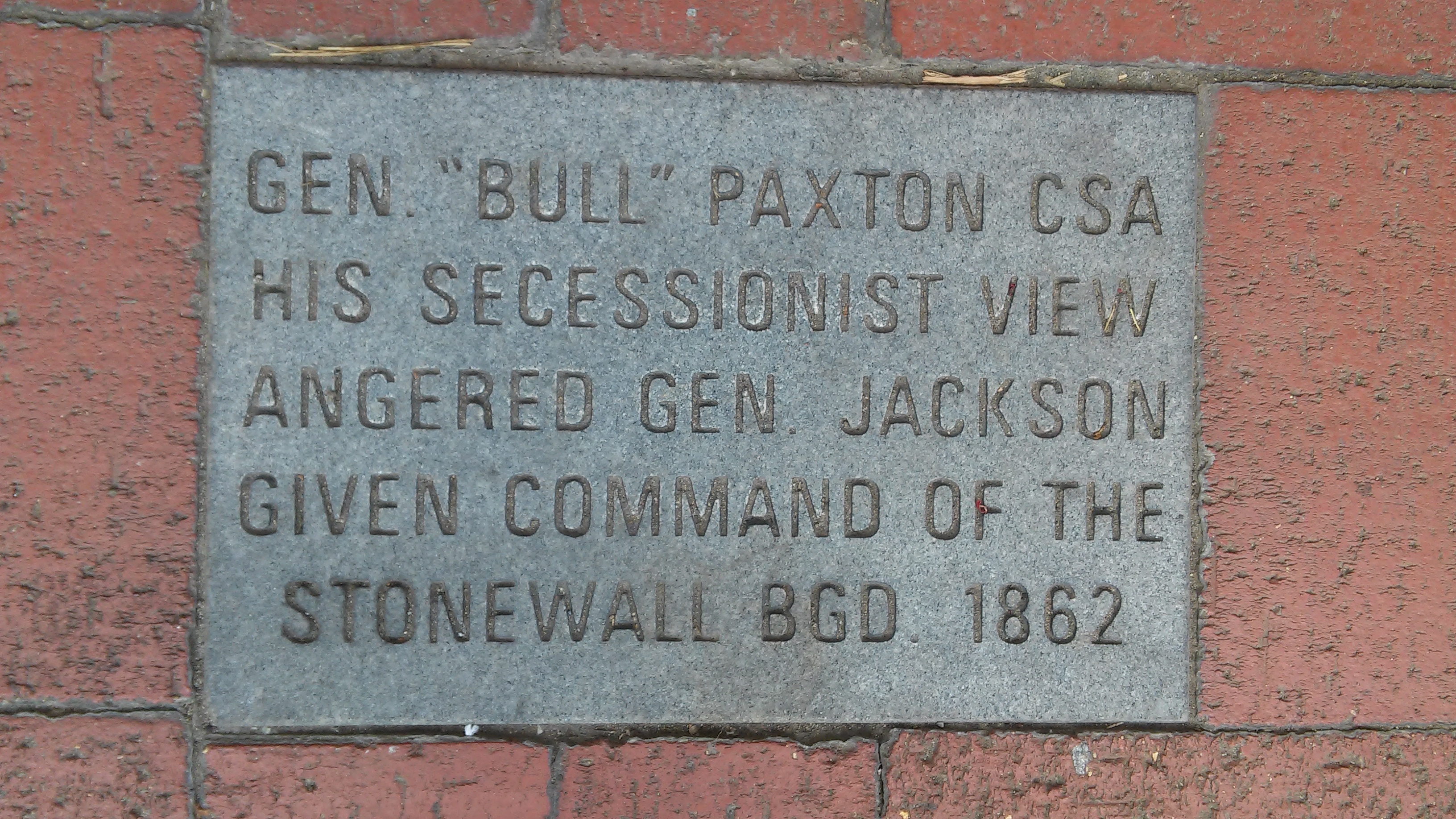

Scholar, priest, and soldier: Rector William Nelson Pendleton cast broad and varied influence over the lives of his fellow Lexingtonians. Robert E. Lee was among his classmates at West Point. He was ordained as an Episcopal priest in 1838 and soon named the first principal at Alexandria’s Episcopal High School. In 1853 he was appointed rector of Grace Church in Lexington, serving until the outbreak of war, and returning to hold that position until his death.
Though a man of the cloth and the classroom, Pendleton is most well known as General Lee’s chief of artillery. As captain of the Rockbridge Artillery, Pendleton named his four-gun battery “Matthew, Mark, Luke and John.” Wounded at Bull Run, and eventually promoted to brigadier general, Pendleton led commands in the Maryland Campaign of 1862, and in the Eastern Theater of Virginia. After surrendering with Lee at Appomattox, Pendleton would prove influential in recruiting Lee to become president of Washington College in 1865. Lee often attended Rector Pendleton’s services at Grace Episcopal, which would later be renamed as R.E. Lee Memorial Episcopal Church.
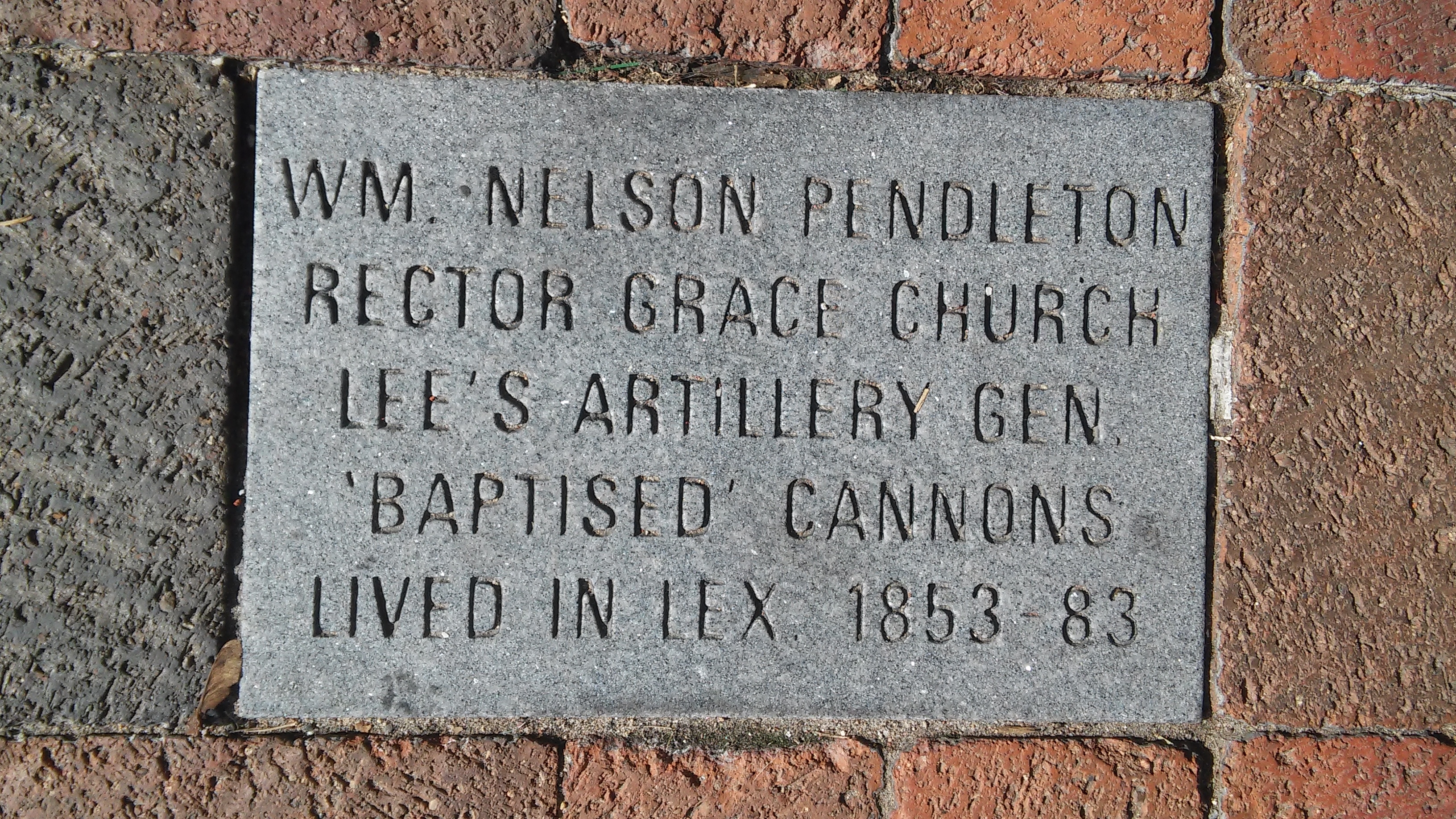

In 1835, under the pseudonym “Cives,” John Thomas Lewis Preston wrote a series of letters to the Lexington Gazette advocating for a military college. VMI was founded in 1839, and Preston became one of the first faculty members. He was instrumental in establishing a curriculum and disciplinary regulations for what he called the Institute’s “fair specimens of citizen-soldiers.” After the death of his first wife, Preston married Margaret Junkin, later known as “The Poetess of the South.”
With the outbreak of war in 1861, Col. Preston was commissioned as an aide-de-camp to General Thomas “Stonewall” Jackson, returning to the VMI faculty after the war until his retirement. VMI’s Preston Library bears witness to his educational legacy.
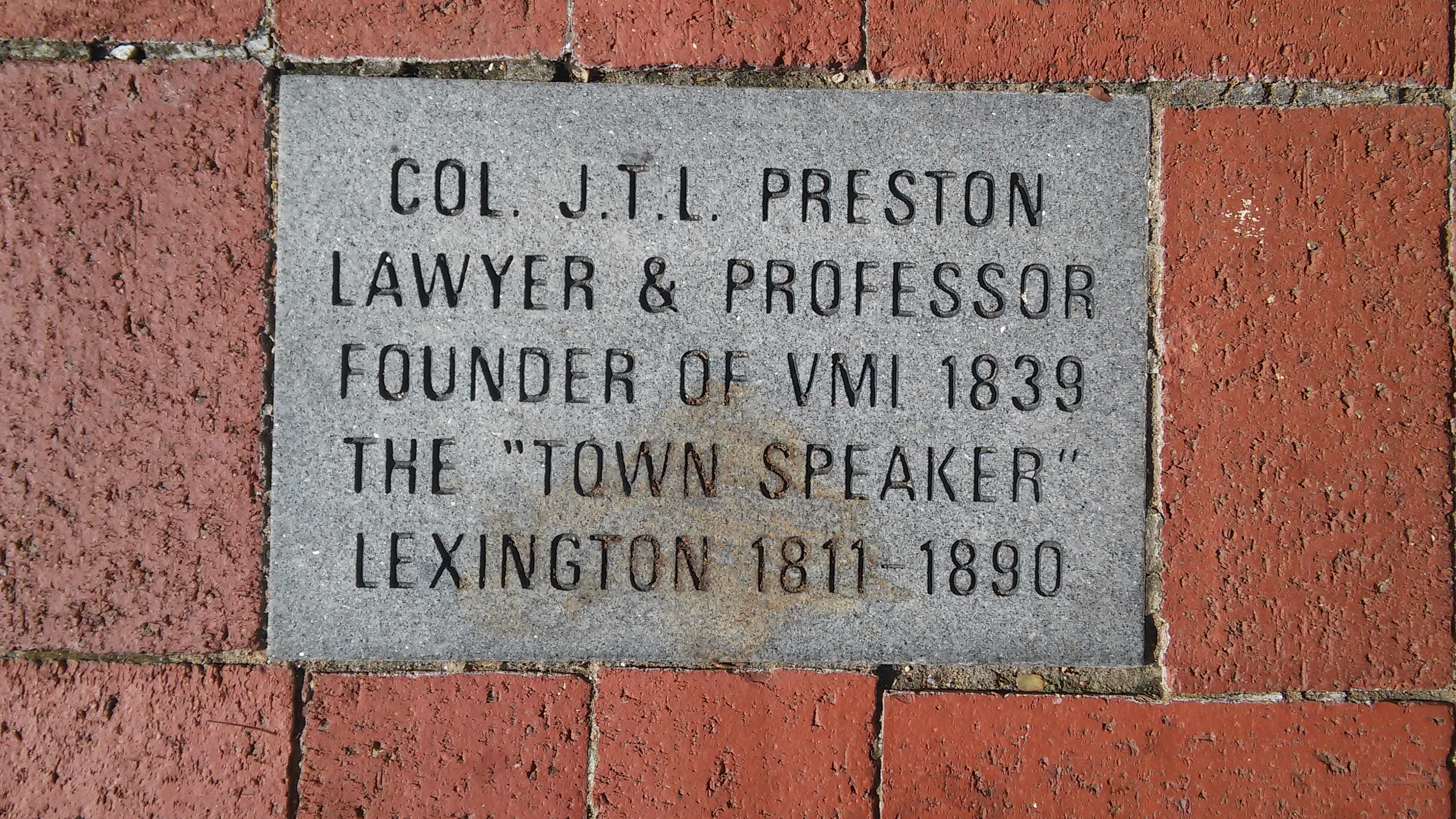

Daughter of Washington College President, and noted Unionist, Rev. George Junkin. In Lexington, “Maggie”found herself within a circle of influential educational, political, and military figures,as her sister was Eleanor was Thomas “Stonewall” Jackson’s first wife, and as she herself married VMI Founder, Col. J.T.L. Preston. Faithful chronicler of the war in letters and journals, Preston’s 1865 epic poem “Beechenbrook: A Rhyme of War” would eventually lead her to be known as the Poetess of the Confederacy, and one of the most popular writers of her day. Following her husband, she was buried in Stonewall Jackson Cemetery in 1897.
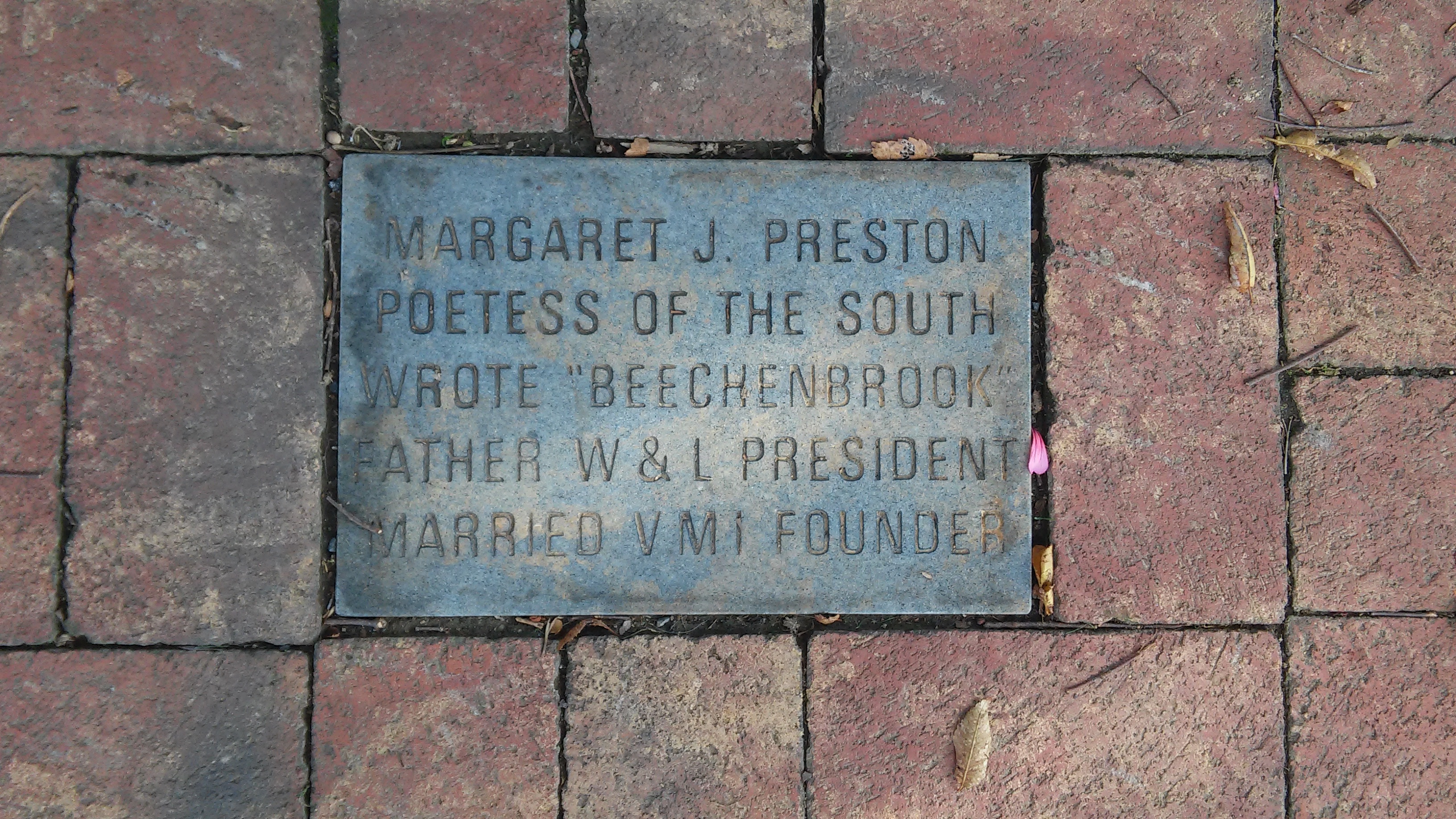

A native Virginian, Lewis Puller enrolled at the Virginia Military Institute in 1917, only to leave a year later in hopes of serving in World War I. Though the War ended before he saw action, he enlisted with the US Marine Corps, trained at Parris Island and Quantico, and would go on to become one of the most decorated members of the Marine Corps. During his service in the Pacific theater of World War II and the Korean War, he was successively promoted to lieutenant general, and became only Marine to be awarded five Navy Crosses. He also remains a legend in the spirit and folklore of the Corps. Pull-ups are often cheered with “Do one for Chesty!” a common Marine cadence chants “It was good for Chesty Puller/ And it’s good enough for me!” and even boot camp closes the day to cries of “Good night, Chesty Puller, wherever you are!”
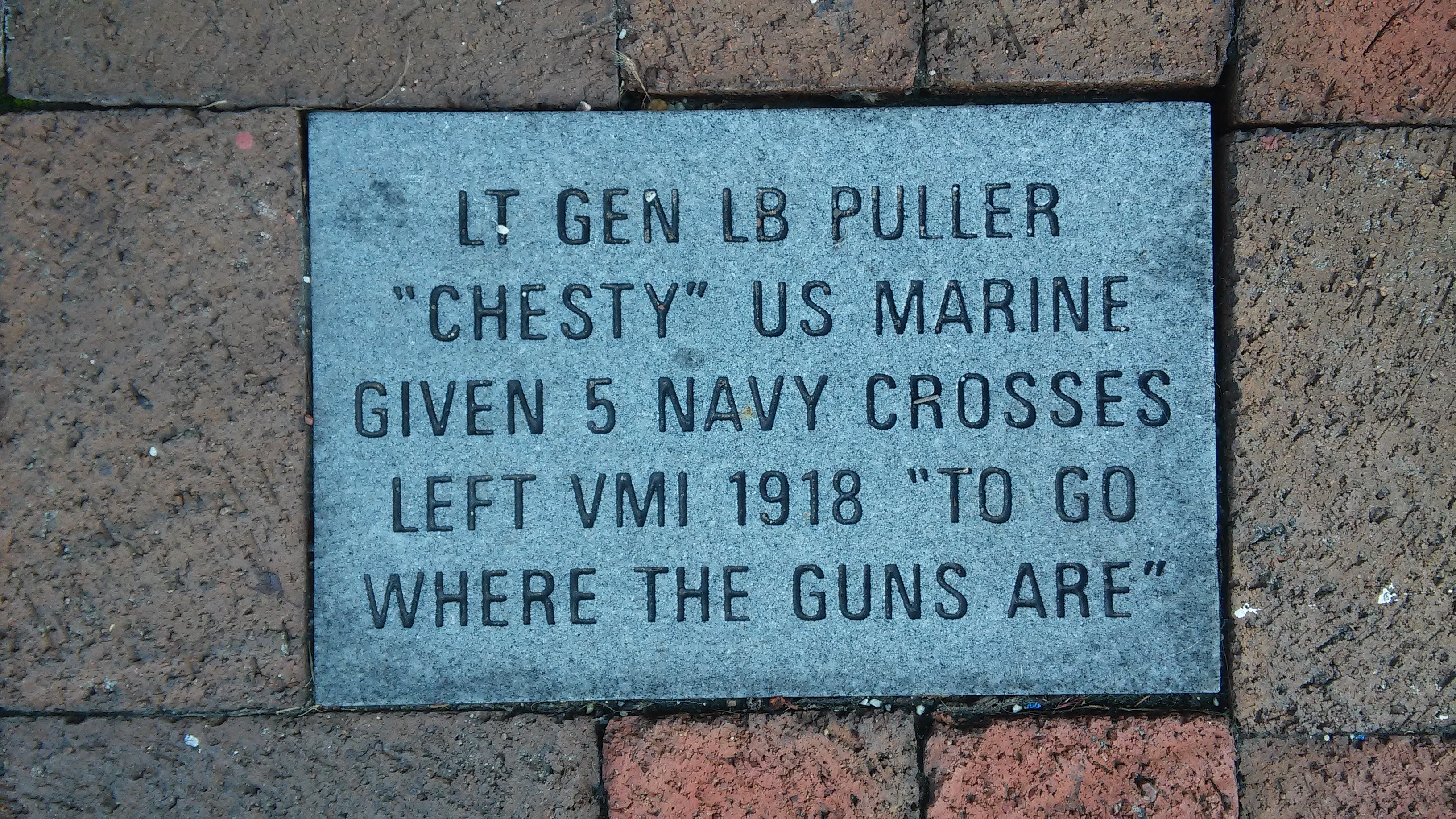

Righteous or Rascal? Robinson, an uneducated Irish immigrant who became a local merchant, horse trader and whiskey distiller, amassed a fortune. His 1,000 acre estate at Hart’s Bottom would later become the primary site of the new city of Buena Vista in 1889. After his his death, proceeds from Robinson's bequest to Washington College (nearly as large as George Washington's own recent gift of canal stock, and including over 70 of Robinson's slaves) would provide the substantial capital investment for building the college's central buildings. For the dedication celebration of Washington Hall in 1824, he supplied a huge barrel of whiskey for the dignitaries in attendance. But, according to a contemporary history, the rabble broke through the barriers and created pandemonium, which ended only when college officials axed the barrel.
W&L has recently re-interpreted the Robinson legacy with interpretive panels witnessing the names of Robinson's slaves the. They have been placed on the Colonnade next to Robinson Hall, and across from the obelisk under which he is buried.
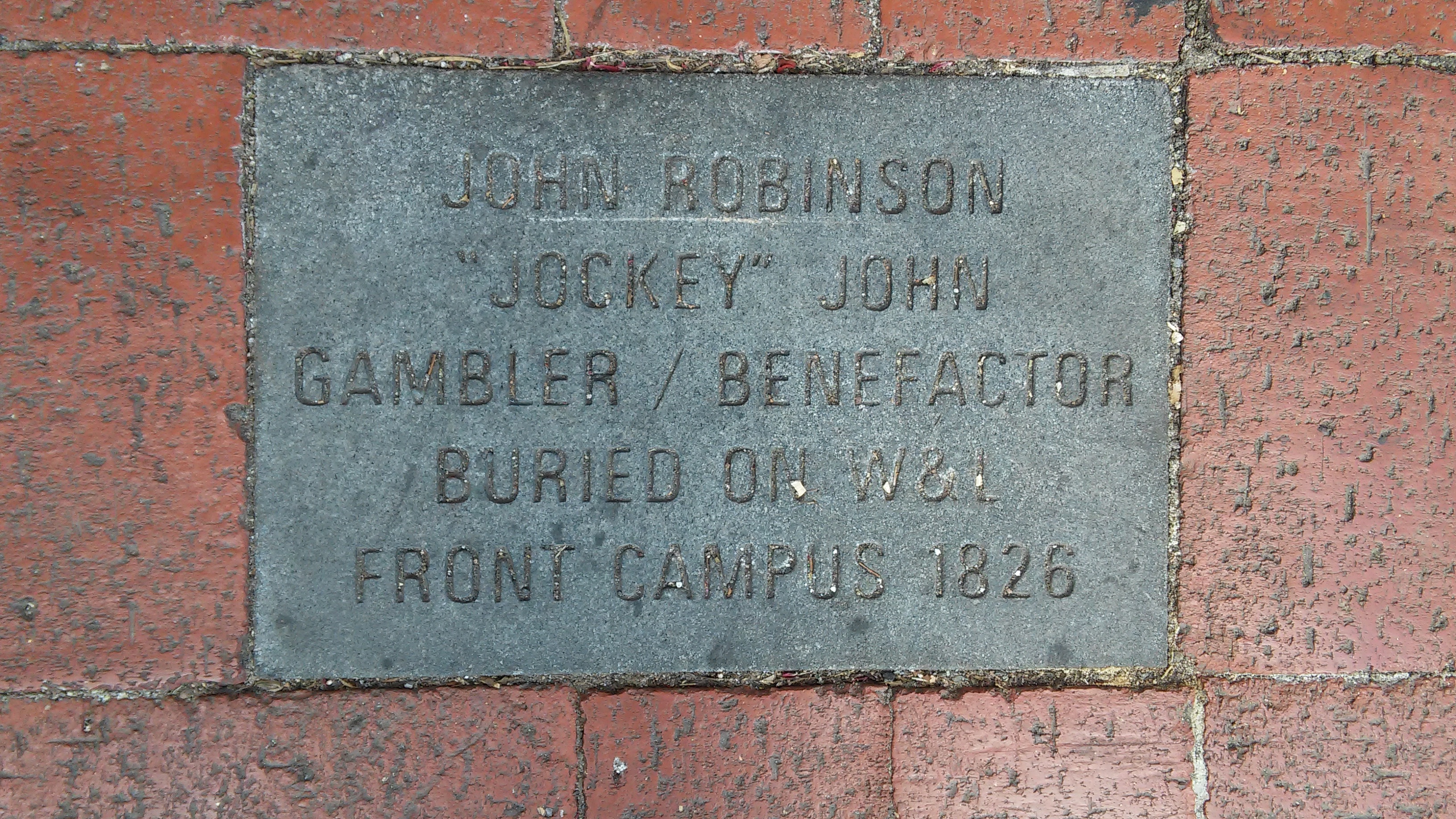

A self-taught musician, Mike Seeger devoted his life to singing, playing, representing, and honoring the old-time traditional country music of the American South. Half-brother to famous folk singer, Pete Seeger, Mike was a founding member of the pioneering traditional group The New Lost City Ramblers, along with John Cohen and Tom Paley. The Ramblers focused on traditional playing styles, as heard on recordings from the 1920s and ‘30s. Mike recorded more than forty albums, both solo and with others, and was nominated for six Grammys. Bob Dylan acknowledged Mike’s influence in his autobiography. Born in New York City in 1933, Mike lived in Rockbridge County from 1981 until his death at his home in Lexington in 2009.
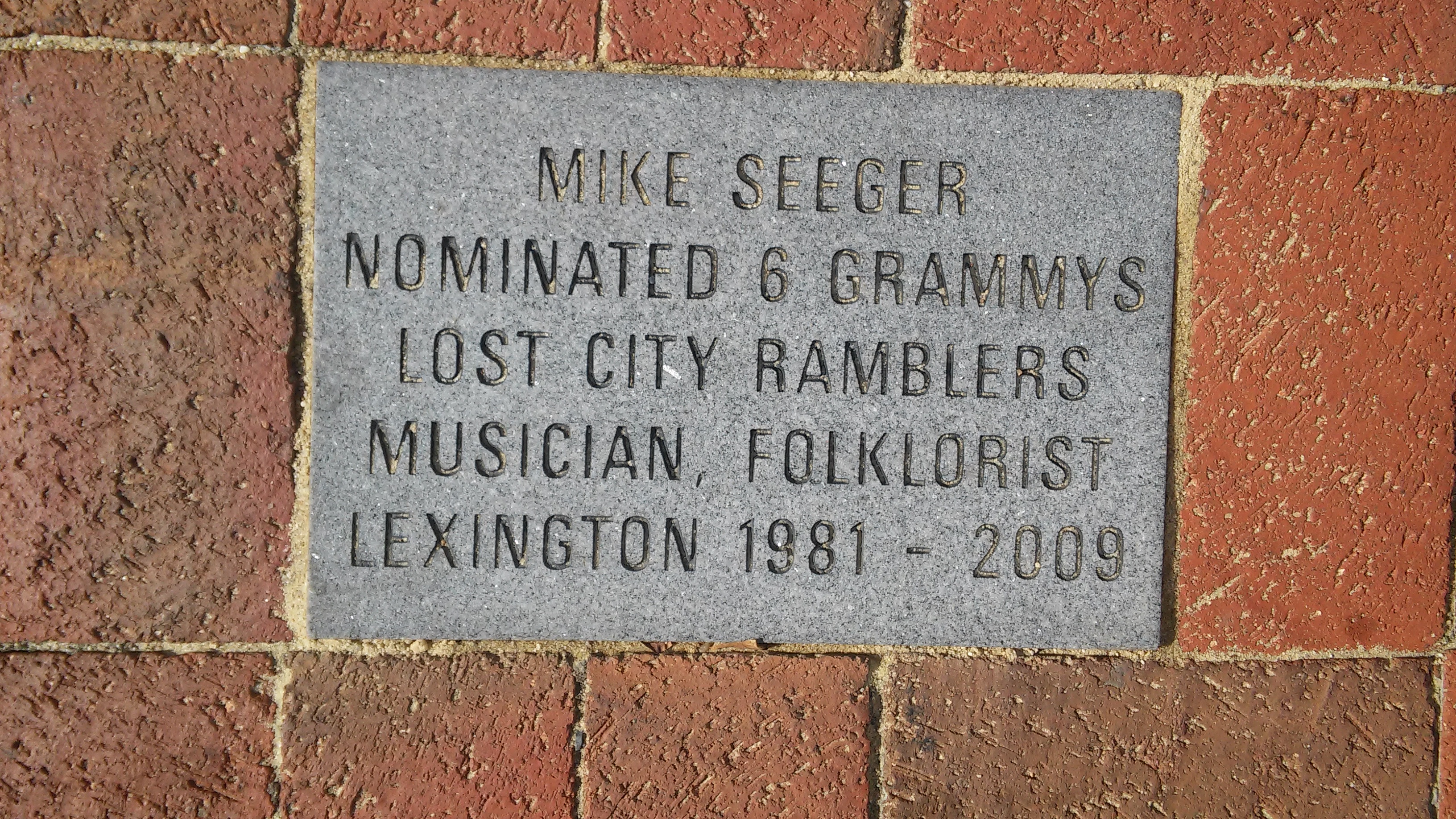

The embodiment of the W&L teacher-scholar model, art historian Pam Simpson served on the faculty at Washington and Lee University for 38 years. As W&L’s first female tenure-track professor, not only did she pave the way for women faculty at W&L, mentoring them and serving as a role model, but she also played a critical role in the University’s transition to coeducation in the mid-1980s.
Simpson taught courses in American, English and modern European art and architecture; women artists; African-American art and vernacular architecture. She wrote three books, including The Architecture of Historic Lexington, co-authored with the Royster Lyle Jr., in 1979. In addition, she authored numerous exhibition catalogues, articles in both the academic and popular press, and book reviews.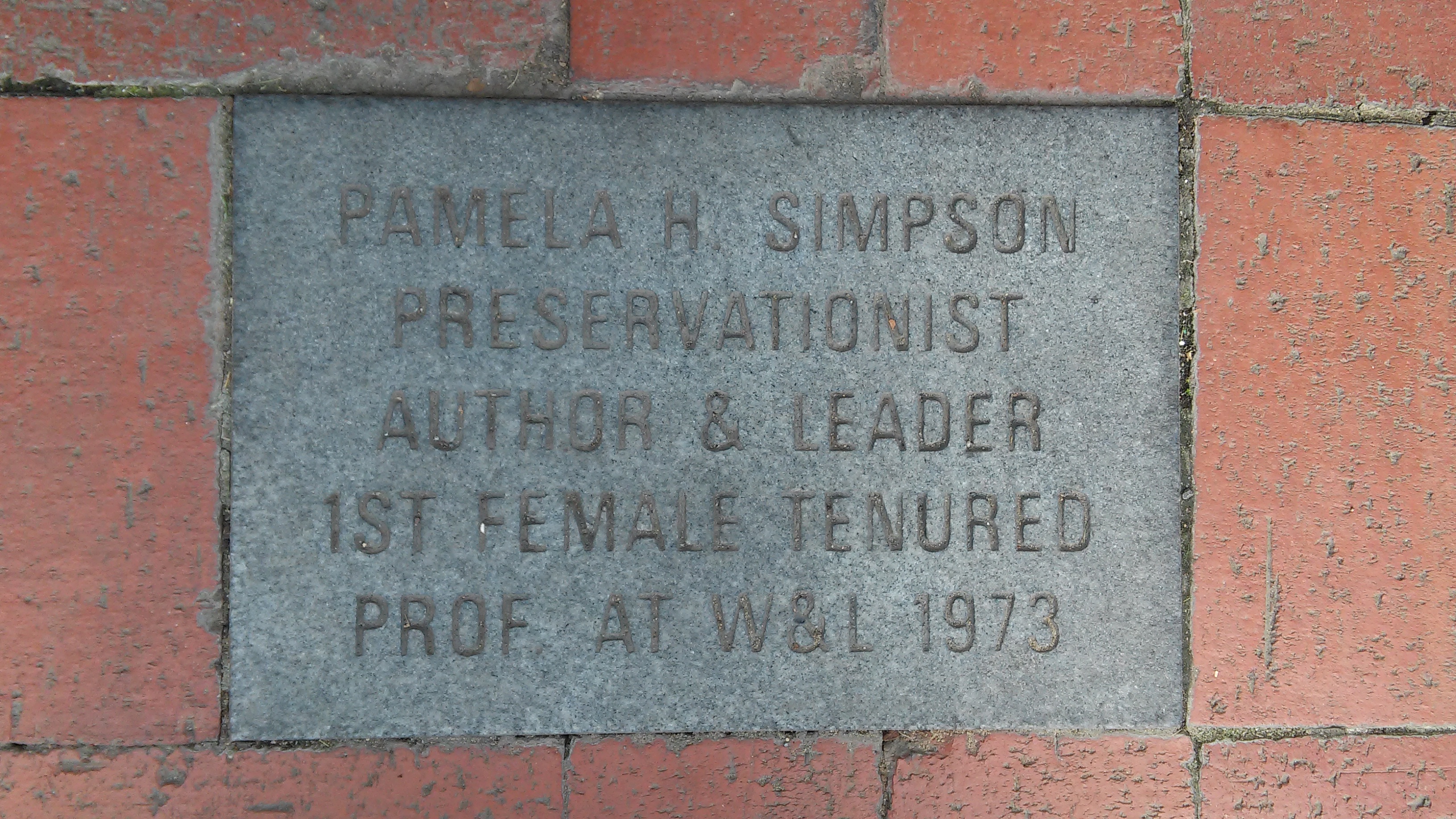

Smith was not only Virginia Military Institute's first Superintendent, but remains one of its most influential and celebrated leaders, guiding it through growth, through war, and reconstruction alike. After graduating from West Point and serving in the US Army, Smith was recruited by J.T.L. Preston to serve as the Institute's founding leader, holiding his position as Supt. until his death in 1889. A mathematician by training, he published several books including 'An Elementary Treatise on Algebra' (1858), 'Best Methods of Conducting Common Schools' (1849) and 'College Reform' (1850). He's also acknowledged as the 'spiritual founder' of Sigma Nu fraternity. During the Civil War, he also wrote some remarkable letters -- in poetic verse -- to his wife, Sara Henderson Smith, an accomplished poet herself.
Though his rank in the Confederate Army would only rise to colonel, he achieved acclaim as major general of the Virginia militia, and major general of cadets: famously directing the VMI cadet corps to march, en masse, to fight at the Battle of New Market. VMI would be burned during "Hunter's Raid" in 1864, but after the War, Smith would oversee its reconstruction, and expansion. served as a general throughout the Civil War.
Edward Tarr, known widely as “Black Ned,” became a blacksmith while enslaved in Pennsylvania. After purchasing his freedom, Tarr and his white wife moved to Timber Ridge in what today is Rockbridge County, where his blacksmith’s forge on the Great Wagon Road soon became a well-known landmark. In 1753, Tarr helped found the Timber Ridge Presbyterian Church. He purchased a 270-acre farm on Mill Creek in 1754, becoming the first free black landowner west of the Blue Ridge. The son of Tarr’s last master attempted to re-enslave him, but with the help of his neighbors, Tarr preserved his independence.
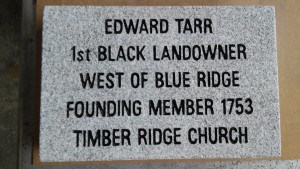

Traveller, originally named Jeff Davis, was born in Greenbrier County, Virginia. He was a prize-winning colt and grew to be nearly 16 hands high. Robert E. Lee purchased the horse from one of his soldiers in 1862 for $200. They fought together in the Confederate army, and Traveller accompanied Lee to Washington College when Lee became it’s president after the war. Lee died in 1870 and Traveller, draped in black crepe, followed the casket in a parade through town to the cemetery. He died one year later of tetanus and is buried next to Lee Chapel which houses the Lee family crypt. By tradition, the doors of his stable (now garage) at the Lee House on campus, stand open so as to allow his spirit to return home every night.
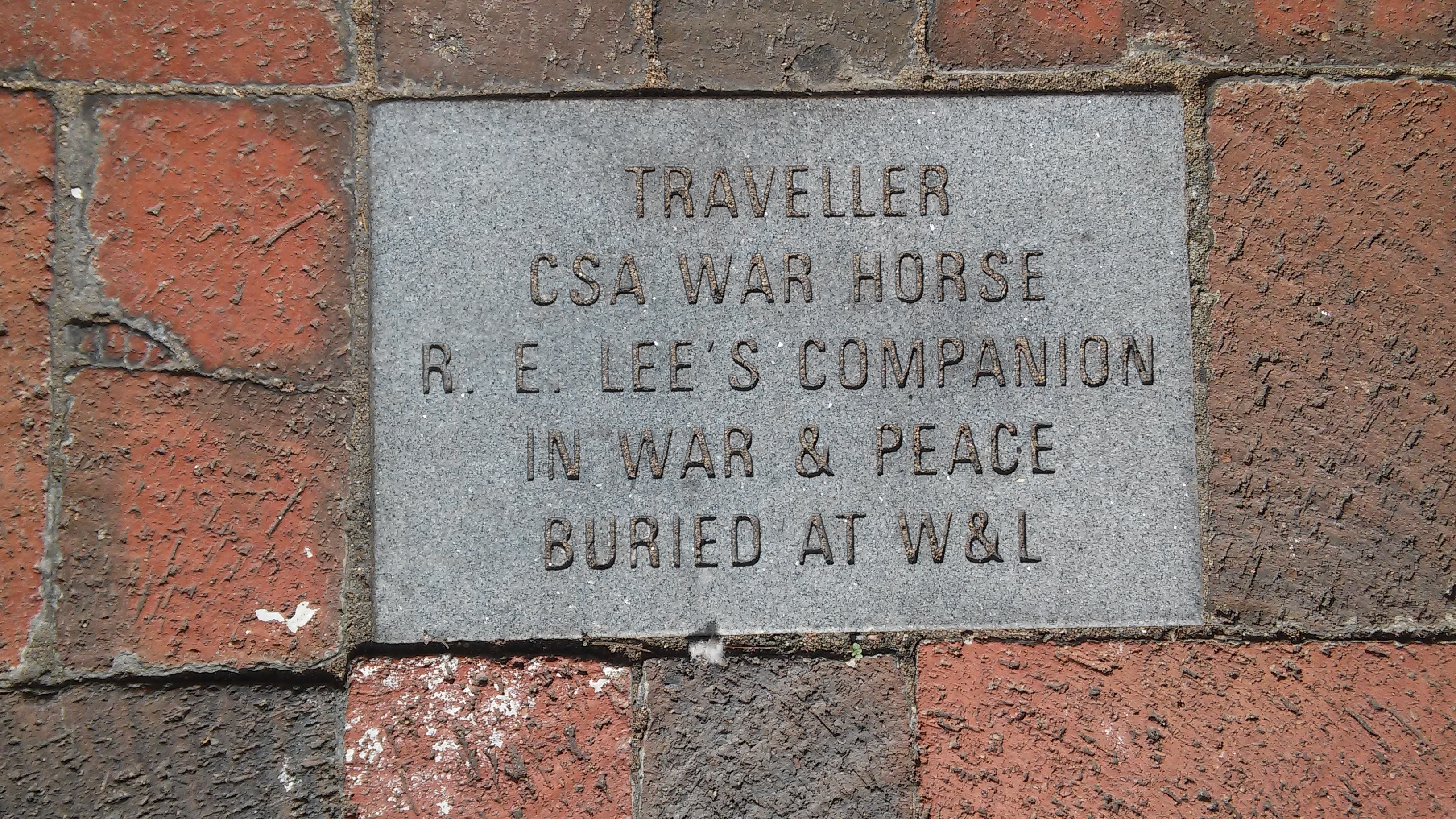

Twombly was born and raised in Lexington, where his father was a renowned swim coach at Washington and Lee University. He was named for renowned baseball star, Cy Young. After two years at the Boston Museum School, Twombly returned to W&L to study art and worked with Marion Junkin the first chair of that university’s art department as well as Pierre Daura, both well regarded artists. Stints in New York City and the avant-garde Black Mountain College in Asheville, N.C. readied him for his first trip to Italy in 1952. Though he would spend much of his career in Italy, he maintained a studio and residence in Lexington, and once said that Italy reminded him of the “faded grandeur of Lexington…Virginia is a good start for Italy.” His distinctive, abstract, and often monumental paintings remain hallmarks in major museums around the world.
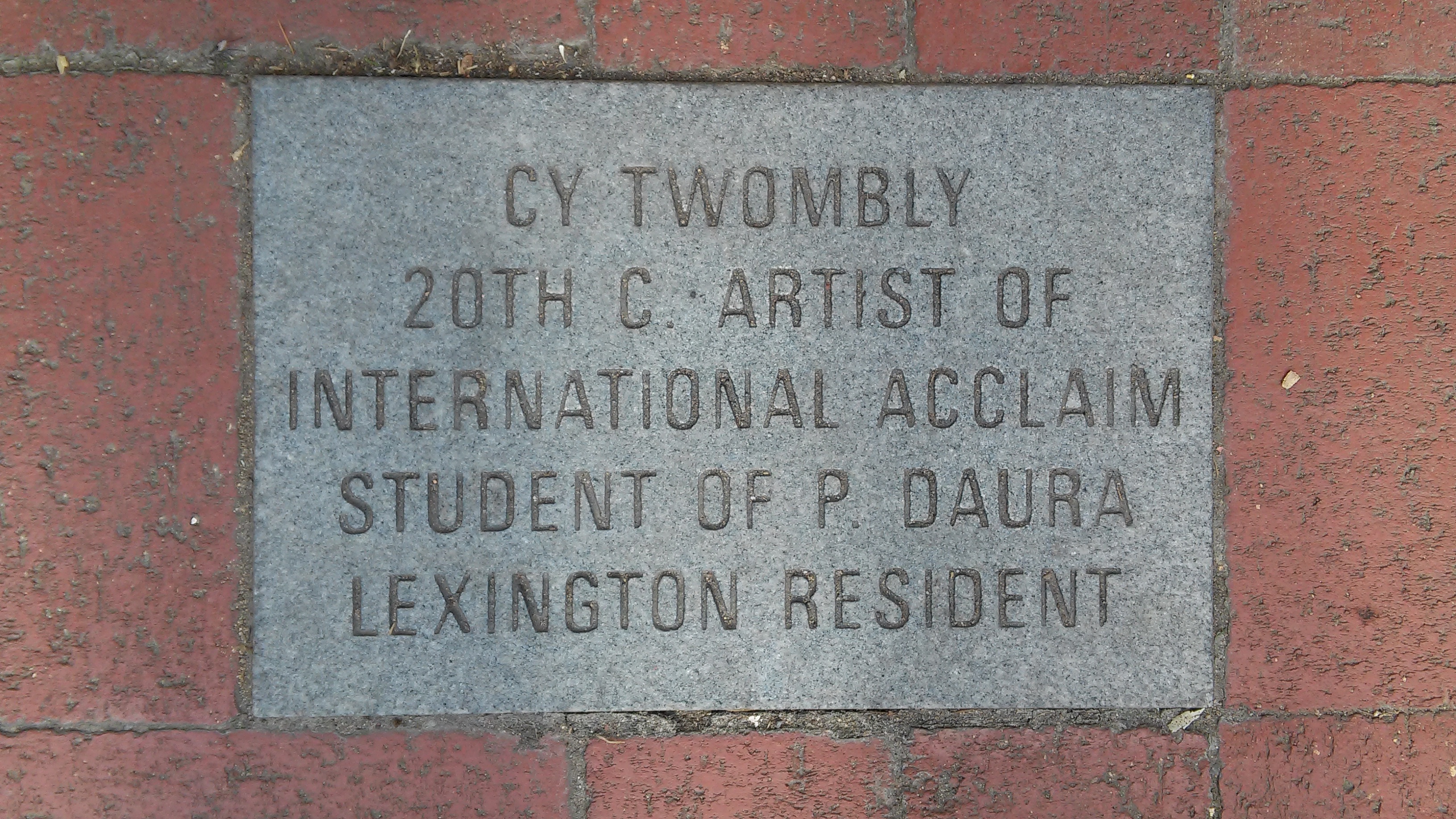

Harry Lee Walker, born in 1875, was one of the most prominent African-American businessmen of his day. The columned building he purchased in 1911 to operate his thriving butcher shop has remained commonly known as the Willson-Walker House. Walker supplied to VMI, W&L and many fraternities the celebrated hams he cured and the beef he shipped in from Fairfield and Buena Vista to his farm East of Lexington (neighboring Walker Street still witnesses the respect and influence he earned). Walker & Wood’s “Sanitary Meat Market and Grocery” would become a pillar among the African-American shops and businesses at the foot of N. Main Street. In 1917, he purchased one of Lexington’s most celebrated historic homes, Blandome, with its distinctive Italianate cupola overlooking all of Lexington from the top of Diamond Hill. Walker was also a leading member in First Baptist Church, right on the heels of Emancipation; his home and his church now both bear plaques witnessing their places on the National Historic Register.
Eliza Bannister Walker, whom the budding entrepreneur married when he was 19, would make her own impact in the community not through commercial connections, but civic activism. Born in 1874, she was well noted as a singer in “The Nightingales,” and wrote a number of dialect poems that signal her sensitivity to both tone and tradition, while addressing a range of contemporary issues. Most purposefully however, her activism led to leading roles in the Virginia Federation of Colored Woman (hosting their conference at Blandome in 1921), and organizing political and religious gatherings with nationally speakers. She also led local campaigns to support the needs orphans, and to raise wages for both women and blacks.
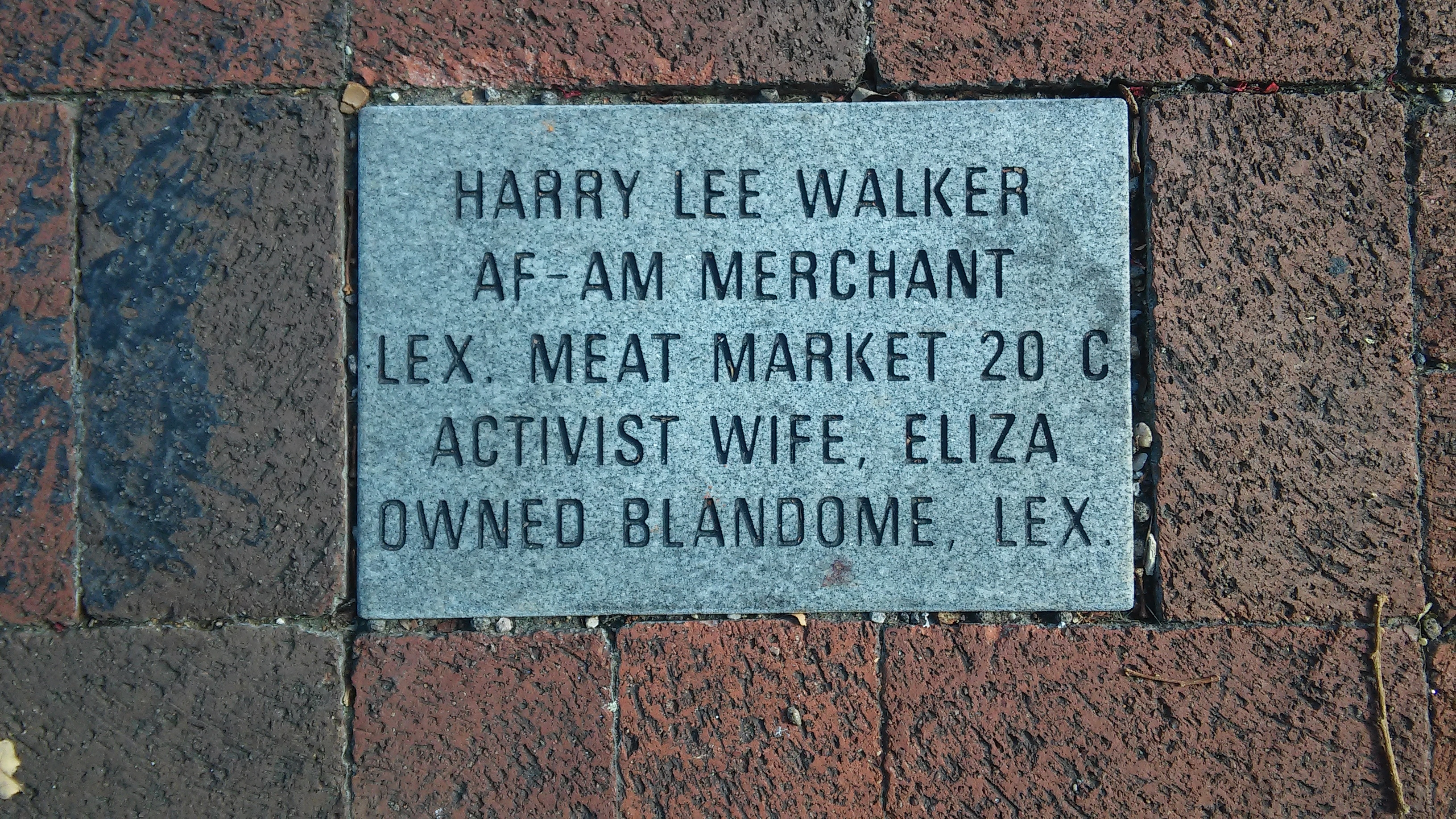

"Big Foot,” who grew up at 408 S. Main St., in Lexington, became an infamous Texas Ranger. As one of 176 Texan prisoners being held during the Mexican-American War, Wallace participated in what came to be known as the “Black Bean Episode.”
The Mexicans placed 159 white beans and 17 black beans in a pot. The prisoners were blindfolded and ordered to draw beans; those drawing black beans were executed. Wallace was lucky.
A Texas folk hero, Big Foot tracked and killed a number of Mexican horse thieves. As a warning to others, Wallace beheaded the ringleader and put his body on a wild stallion, tethered to a tree. With his friend John McPeters, Big Foot thrust the head into the sombrero, secured by a strap to the saddle, and set the horse loose, terrifying the countryside with the “headless horseman.”
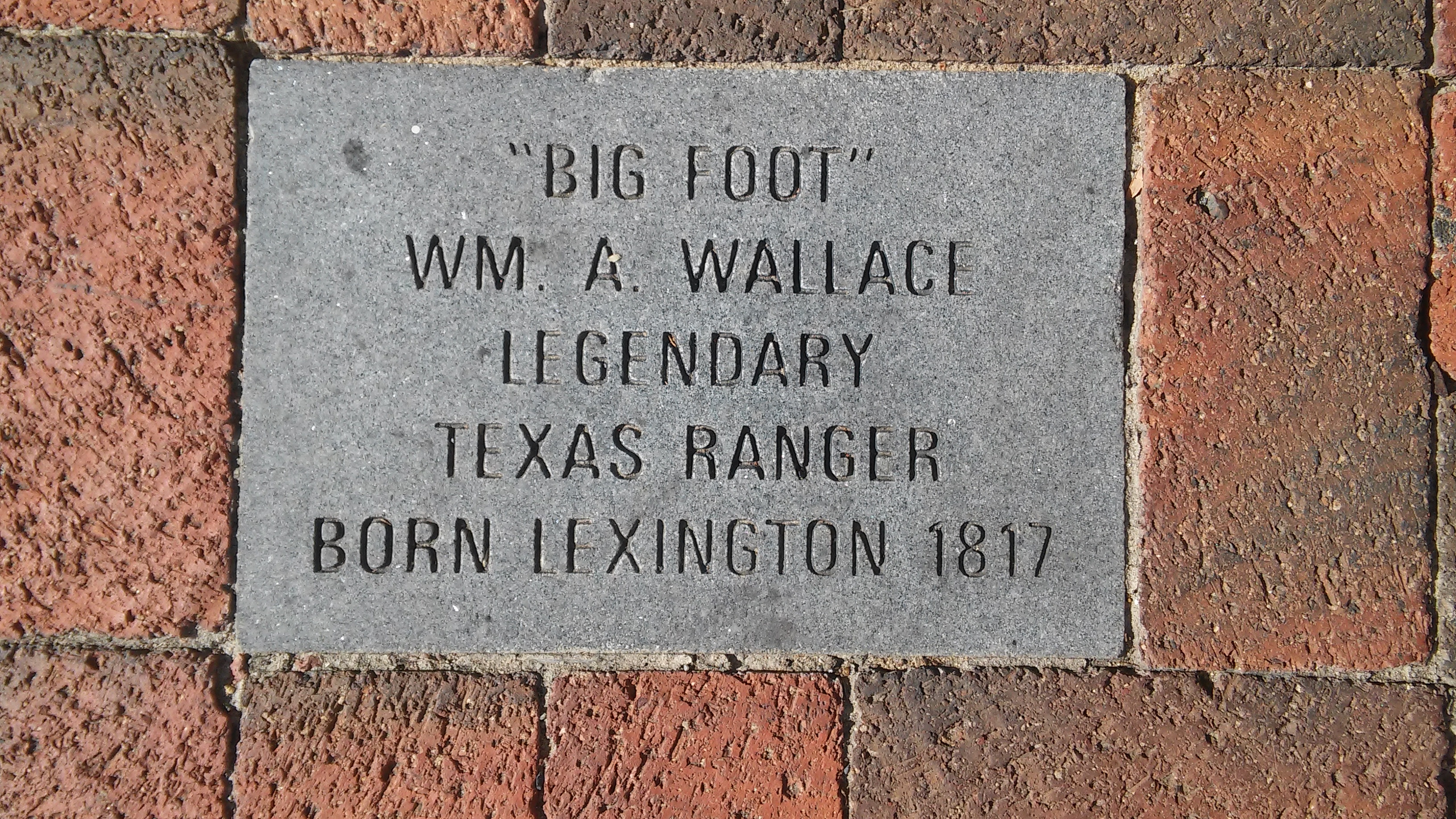

According to legend, a young George Washington surveyed the Natural Bridge (from which the county takes its name, Rockbridge) in 1750 and carved his initials high up in the arch. A large stone found in 1927, also engraved with a surveyor’s cross and Washington’s initials, may have been used as a weight suspended from a rope in the course of surveying the bridge.
In 1796, Washington endowed the struggling Liberty Hall Academy with a gift of stock valued at $20,000 – at that time the largest gift ever made to a private educational institution in America. In gratitude, the school was renamed Washington Academy and then Washington College for the first United States President. In 1871 the institution was again renamed, and remains, Washington and Lee University.
Born 1935, square in the heart of the Great Depression, Lewis Watts faced challenges few of any of his contemporaries would know. And yet, he was one of this community’s most remarkable performers. A champion athlete, a distinguished singer, he left his impact in many fields and on many people … and he did so in spite of being born without arms.
A lifelong resident of Lexington’s historically black Diamond Hill/Green Hill neighborhood, Watts would attend the school named for fellow native, Rev. Lylburn Downing . Photographs show him writing, right-footed, in his suit, in an elegant script, up on the classroom chalkboard. Though he first starred in soccer, he moved on to football (a record-breaking kicker for the Downing football team one year with 34 PATs). Even more astonishingly, managed to use his feet to throw two no-hitters one season for the softball team. Watts would later coach the Trojans’ baseball team, and the diamond and grandstands behind the school would eventually be named Lewis Watts Field.
But music was Watts’ most enduring talent, with one neighbor recently recalling that his “voice was his glory, and he lifted his gigs with charm and a big smile.” His most notable ‘team’ would be The Rhythm Makers, for whom Watts sang lead, along with musicians Sticks Thompson, U.B. Broadneaux, Frank Woodley, Billy Huffman, and Napoleon Borgus. They won a dance band contest earning them an all-expenses paid trip to perform in Mexico. And they enlivened parties through the Rockbridge community for many years, when the Knights of Pythias Hall, known locally as the House of Fun, was at its peak.
